
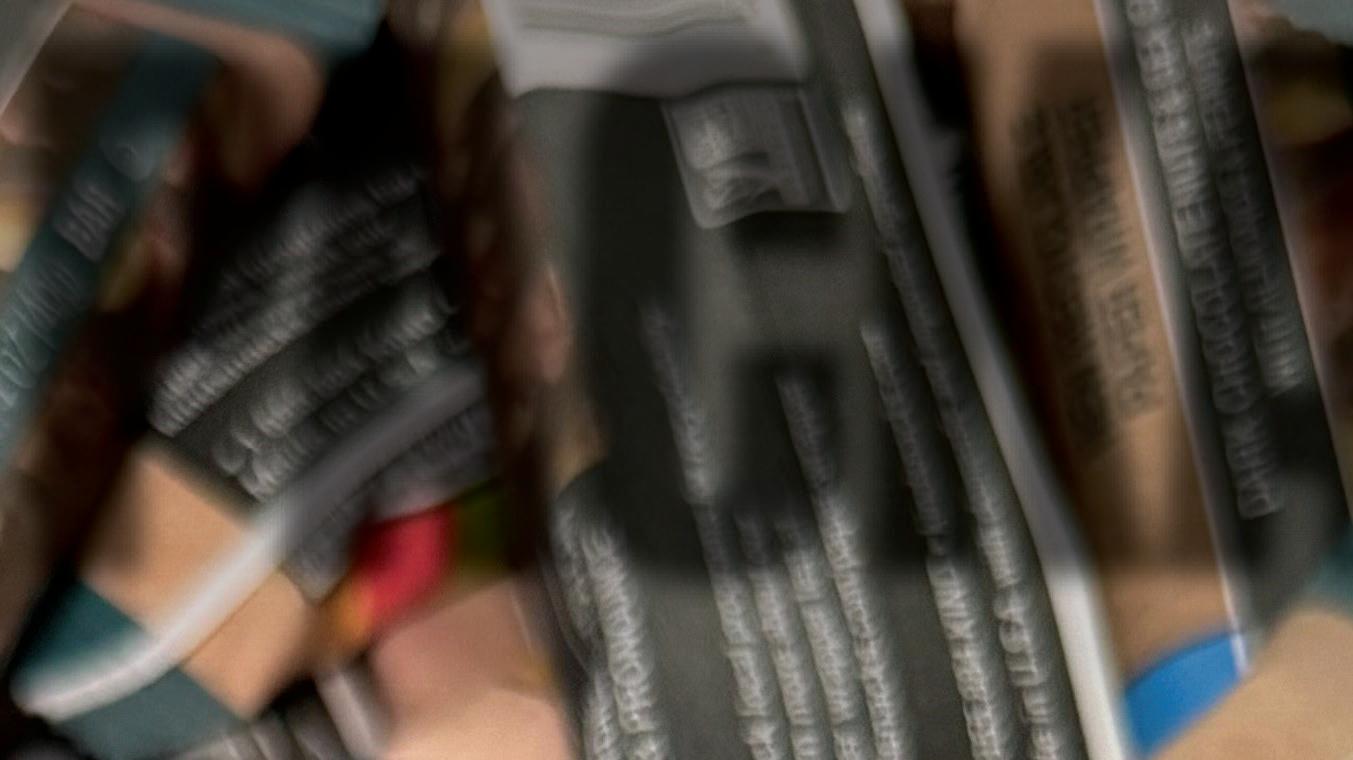

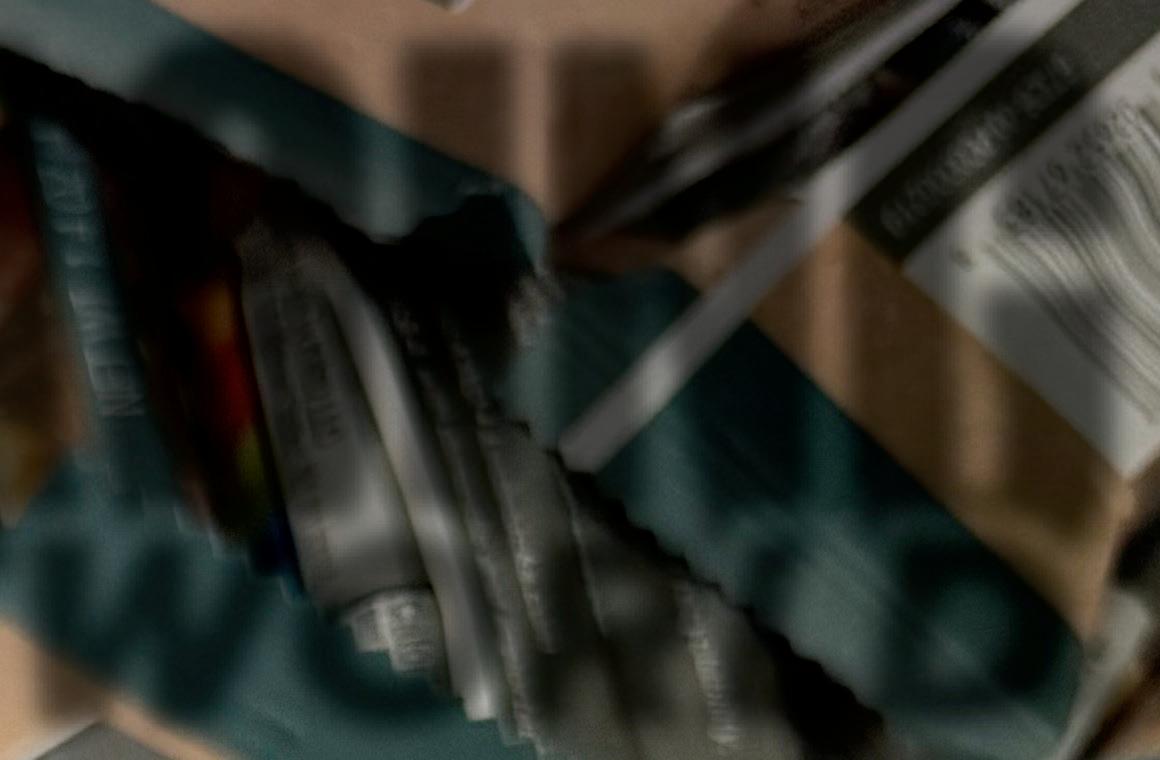











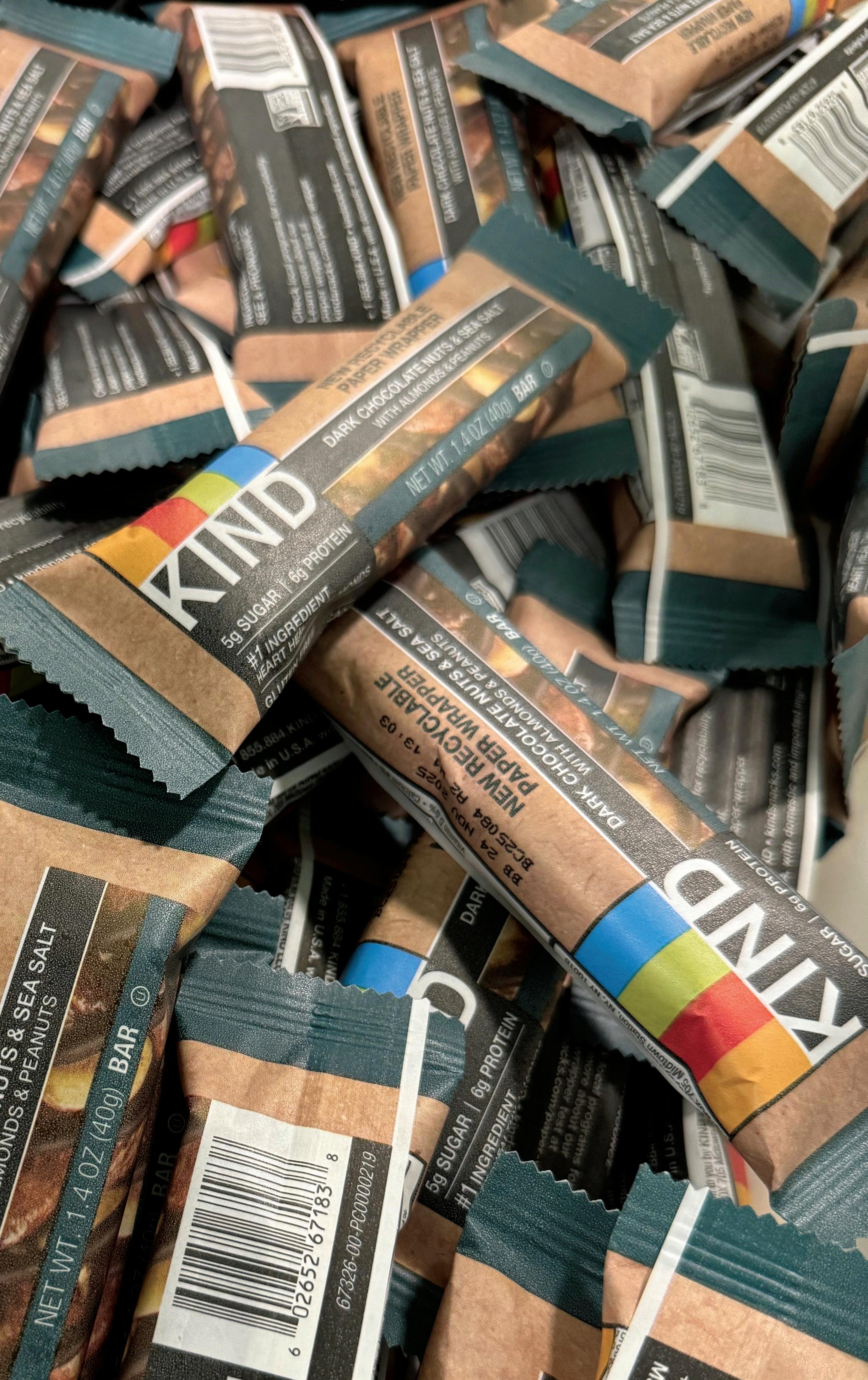


















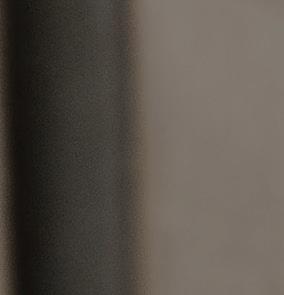











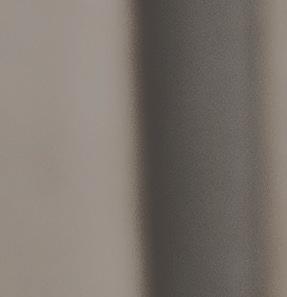















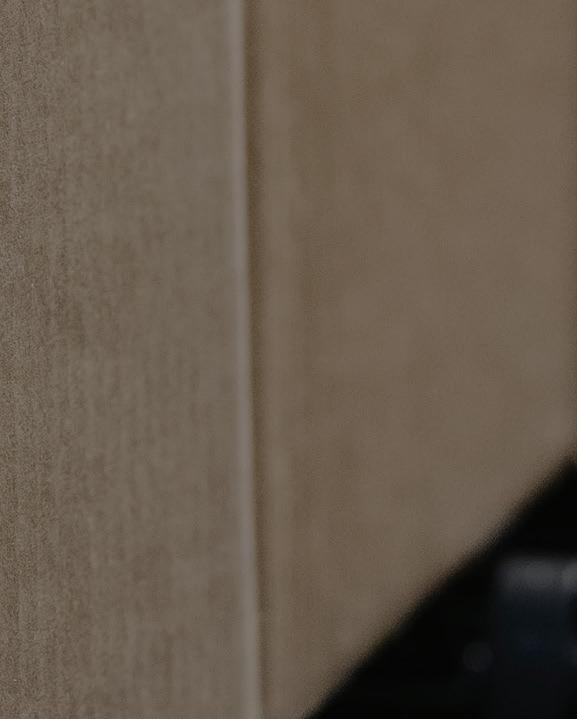





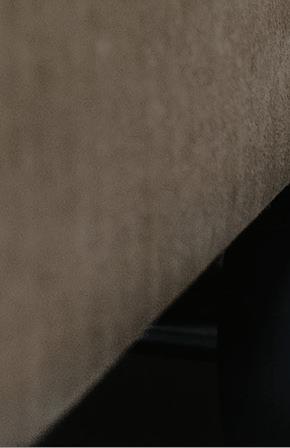




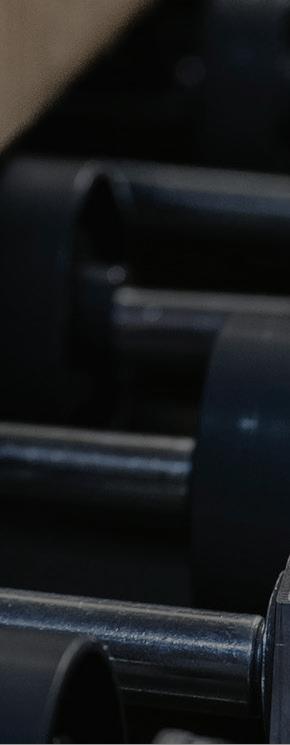











































































Ready to replace plastic? Engineered for durable and comfortable handling, EnduraGrip® is a paper-based clip solution for bundling a range of bottle shapes, sizes, weights and multipack configurations.
• Replace plastic clips with a renewable, recyclable alternative.
• Promote your product or brand on a fully printable surface.
• Automate application of paper-based clips to trayed or cased products with EnduraGrip® Omada™.
Scan to learn more.















We are your strategic partner for packaging excellence.
Our people, products, and services ensure seamless processes, innovative technologies, and sustainable solutions. Based on your needs, challenges, and opportunities, we are committed to strengthening your market position and fueling your growth. At Syntegon, we co-create and co-succeed.
Discover how we can elevate your processing and packaging solutions in the food and pharmaceutical industries, and service.

Mars’ Kind (wrapper pictured) and Riverside Foods’ MadeGood are ow-wrapping snack bars in barrier paper packaging that meets Western Michigan University repulpability standards, thus is curbside recyclable. Material Recovery Facilities (MRFs) are optimistic about the development.

44 COVER STORY
Barrier Paper Wrapper Trend Makes U.S. Landfall
Mars’ Kind and Riverside Foods’ MadeGood are ow-wrapping snack bars in barrier paper packaging that meets Western Michigan repulpability standards, thus is curbside recyclable.
48 PACKAGING FOR E-COMMERCE
Dropps Packaging Goes Omnichannel, Returns to Retail
Laundry and dish pod trailblazer Dropps doesn’t need to get up on a soap box about sustainable packaging. Its new omnichannel carton range, rolled out last year, sends that message on its own, both via e-comm channels and in the retail detergent aisle.
60
Unique Gripper Shines in Robotic Cookie Multi-pack Automation System
Ten delta-style robots use unique, easily changed end-of-arm tooling to stack cookies into slugs and then place slugs into plastic trays at 700 cookies/min with a 99% performance guarantee.
70 AUTOMATION
Controls Architecture Ready to Scale with Machine as Disruptive Tech Emerges
When JOA began looking to develop a never-before-seen dry molded ber converting machine and platform, it found the technological capability and know-how with Bosch Rexroth’s ctrlX Automation toolkit.
74
Paper Cup Marries Finnish Licorice with Forest Innovation
From forest to shelf, a new package from Finnish licorice maker Kouvolan Lakritsi delivers a circular economy story rooted in regenerative forestry, renewable materials, and collaborative design.
Jan Brücklmeier Technical Application Group Packaging Technology Expert, Nestlé
M. Shawn French Director – Innovation & Packaging Engineering (Beverage), Danone North America
Patrick Keenan R&D Packaging Engineer, General Mills/Annie’s Organic Snacks
Tim Lehman Sr. Engineering Manager, Supply Chain, GOJO Industries, makers of Purell
Mike Marcinkowski Director of R&D Material Science, Packaging & Sustainability – Nature’s Vault/Fesh Loop
Shannon Moore Director Global R&D Packaging Sustainability, Kellanova
Andrew Seys Senior Director, Global Operational Excellence, Spectrum Brands
David Smith, PhD Principal, David S. Smith & Associates
Brian Stepowany Packaging R&D, Senior Manager, B&G Foods, Inc.



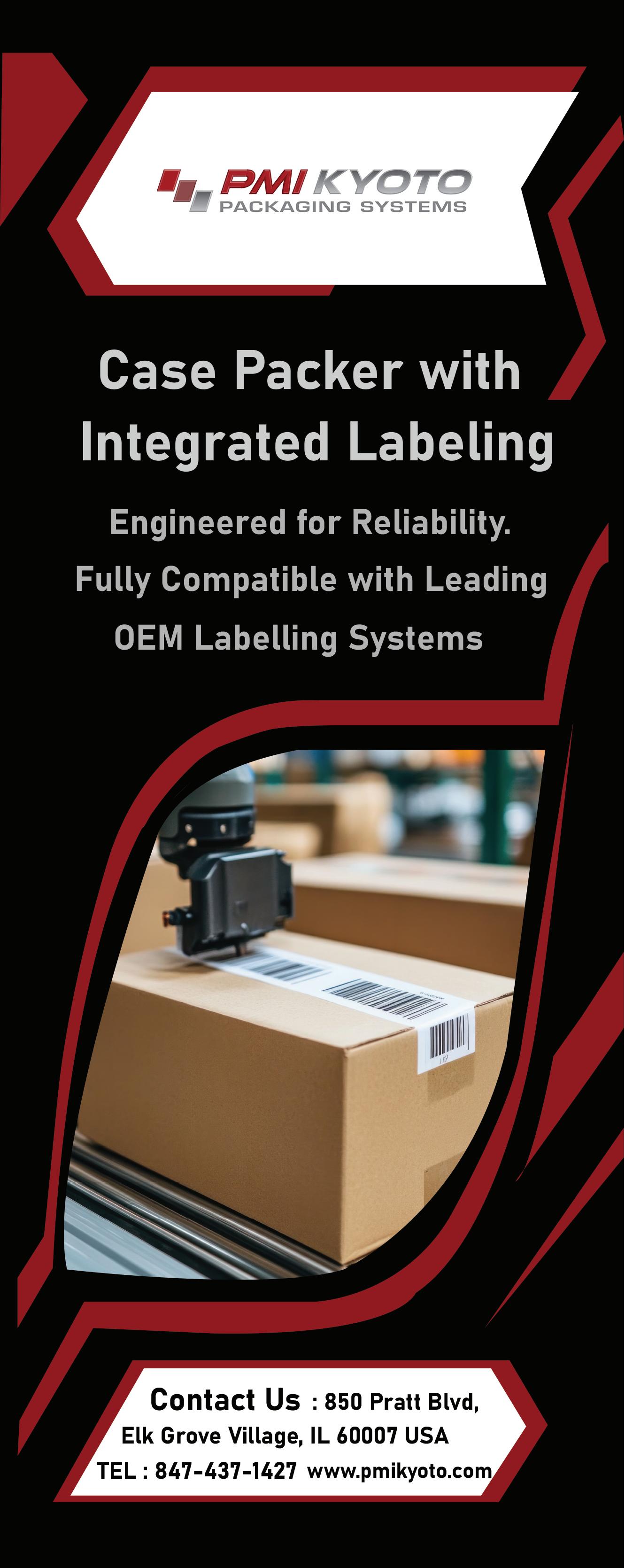
Matt Reynolds Chief Editor
Anne Marie Mohan Senior Editor
Sean Riley Senior News Director
Casey Flanagan Associate Editor
Kim Overstreet Director of Content
Pat Reynolds, Sterling Anthony, Eric F. Greenberg Contributing Editors
David Bacho Creative Director
sales@pmmimediagroup.com
Courtney Nichols Director, Client Success & Development cnichols@pmmimediagroup.com
Lara Krieger Senior Manager, Print Operations lkrieger@pmmimediagroup.com
Janet Fabiano Financial Services Manager jfabiano@pmmimediagroup.com
David Newcorn President
Elizabeth Kachoris Vice President, Digital
Kelly Greeby Senior Director, Media Operations
Trey Smith Senior Director, Events
Jen Krepelka Director, Digital Media
Amber Miller Director of Marketing
Joan Jacinto Director, Ad Tech and Search
Joseph Angel Founding Partner and Executive Vice President, Industry Outreach, PMMI
Questions about your subscription or wish to renew? Contact circulation@pmmimediagroup.com.
PMMI Media Group
500 W. Madison, Suite 1000, Chicago, IL 60661 Web: www.pmmimediagroup.com
PMMI The Association for Packaging and Processing Technologies 12930 Worldgate Dr., Suite 200, Herndon VA, 20170
Phone: 571/612-3200 • Fax: 703/243-8556 • Web: www.pmmi.org




As paperization gains momentum among CPG brands, a new pet-snack startup is joining the movement. German-based DoggyLove has partnered with Sonoco Europe to package its line of organic, plant-based dog treats in a 90-mm-dia GreenCan recyclable, fiber-based can.
“Our new business is personal to us, inspired by our own dog, a Labrador called Peggy, who was part of our lives for 15 years,” says Christoph Wirth, who co-founded DoggyLove with his wife, Konstanze. “Peggy was the inspiration for DoggyLove, and our core mission now is to develop healthy snacks to promote the health and well-being of all dogs.”
For the Wirths, it was important to find a package that reflected the values of their brand. “It had to be high quality and sustainable,” says Wirth. “Initially we considered other packaging types from Asia, but we quickly realized the long delivery times and political uncertainties were risks we didn’t want to take. That’s what made Sonoco’s GreenCan solution a perfect fit.”
DoggyLove’s treats—cold-pressed to retain vitamins and minerals—are designed to support canine health in areas such as joint strength, digestion, and coat condition. To protect these hard, dry snacks from moisture and oxygen, the GreenCan incorporates a PET SiOx (silicone oxide) barrier layer. “The package structure uses 96% fiber, including 69% recycled content, while maintaining the necessary barrier properties to ensure freshness and extend shelf life,” explains Sonoco Germany Sales Manager Sascha Di Nardi.
Visual branding also played a major role in DoggyLove’s decision to use GreenCan. “The creative possibilities were very important to us,” Wirth says. “Being able to use full-surface, high-quality offset printing allowed us to present our brand in a way that is visually strong and memorable. As a new company, how we show up on shelf really matters.”

The GreenCan also features a resealable, integrated paper lid. This design allows the entire package to be recycled in the curbside paper waste stream, supporting recycling goals without requiring disassembly by the consumer.
Early feedback from consumers has reinforced the company’s decision. “Our customers describe the packaging as ‘high quality,’ which supports our brand’s premium positioning and our message around sustainability,” Wirth notes. “It’s another angle we can talk about with pride. It’s not just what’s inside the package that’s better for dogs, but the package itself is better for the planet.” —Anne Marie Mohan
How2Recycle (H2R) unveiled a redesigned Store Drop-off (SDO) label aimed at enhancing consumer clarity and ensuring compliance with evolving recycling legislation, particularly California’s SB 343. GreenBlue, the parent company of H2R, says the updated label features a Store Drop-off bin icon accompanied by clear,

actionable instructions, replacing the previous circular arrows symbol to avoid potential misinterpretation under the new law. This change is informed by consumer research indicating that symbols significantly influence public understanding of recycling labels.
“Our members rely on us to navigate complex recycling landscapes, and consumers rely on us to tell them what to do with materials,” says Karen Hagerman, director, How2Recycle. “We’re confident that this refreshed design will deliver on that trust.”
The transition to the new label design is scheduled for August 2025, aligning with H2R’s upcoming July Guidelines for Use, which will incorporate findings from CalRecycle’s SB 343 Material Characterization Study. This proactive approach ensures that H2R members, who are companies who use the label system, have sufficient time to adapt their packaging designs and production cycles.
While acknowledging that SDO recycling systems present more hurdles to consumer adoption than curbside, H2R emphasizes the practice’s role in diverting films and flexible packaging from landfills. To bolster this system, the Sustainable Packaging Coalition’s SDO Recovery Collaborative is conducting research to assess and improve the effectiveness of the SDO recycling stream. These efforts reflect H2R’s approach to advancing circularity through multiple, complementary solutions. —Matt Reynolds











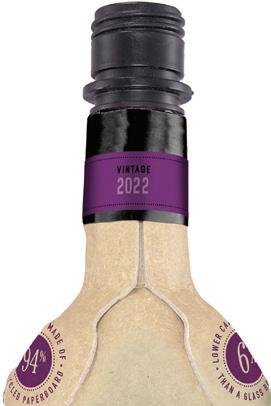
Target is the rst major U.S. supermarket retailer to commission a range of wines bottled in what it says are lower-carbon paper bottles. Stakeholders claim that the move, which uses the Frugalpac Frugal Bottle format, will save the equivalent of nearly 100 tons of carbon dioxide. The outer paperboard shell, they say, is curbside recyclable.

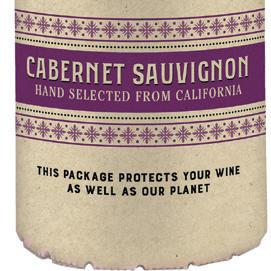
Assuming the format is the same as or very similar to previous commercial rollouts, it’s functionally bag-in-box. In this case, the “box” portion begins as a die-cut and geometrically creased blank of printed paperboard. Being printed paperboard, no additional labels—or labeling equipment—are necessary. The rigid bottle is formed from one at piece of paperboard, a blank with waterbased adhesive used as part of the assembly process. The paperboard is then molded around a mandrelshaped, hollow mold that has already had the pouch inserted within.

The brand is a collaboration between California’s Latitude Wines (LWX), who sourced and imported the wines, and California’s Monterey Wine Company, who lled the paper bottles.
Monterey Wine Company acquired its own Frugal Bottle machine and is producing the paper bottles on site. The machine can produce more than 2.5 million paper Frugal Bottles per year. Target ordered 256,000 of the Collective Good bottles to sell in its U.S. stores in a move that they say will save 98.3 U.S. tons of CO2e.
The Collective Good brand will bottle exclusively in the paper Frugal Bottle, and the format is now available in nearly 1200 of its stores across the U.S.
Last year, Whole Foods Market stocked Bonny Doon’s Carbon...nay wine in the Frugal Bottle in a select number of its stores, but stakeholders say this is the rst major rollout, and may be the rst widespread U.S. consumer interaction with any paper bottle format. —Matt Reynolds
A single Columbia palletizer can handle all of these products and more with ease.


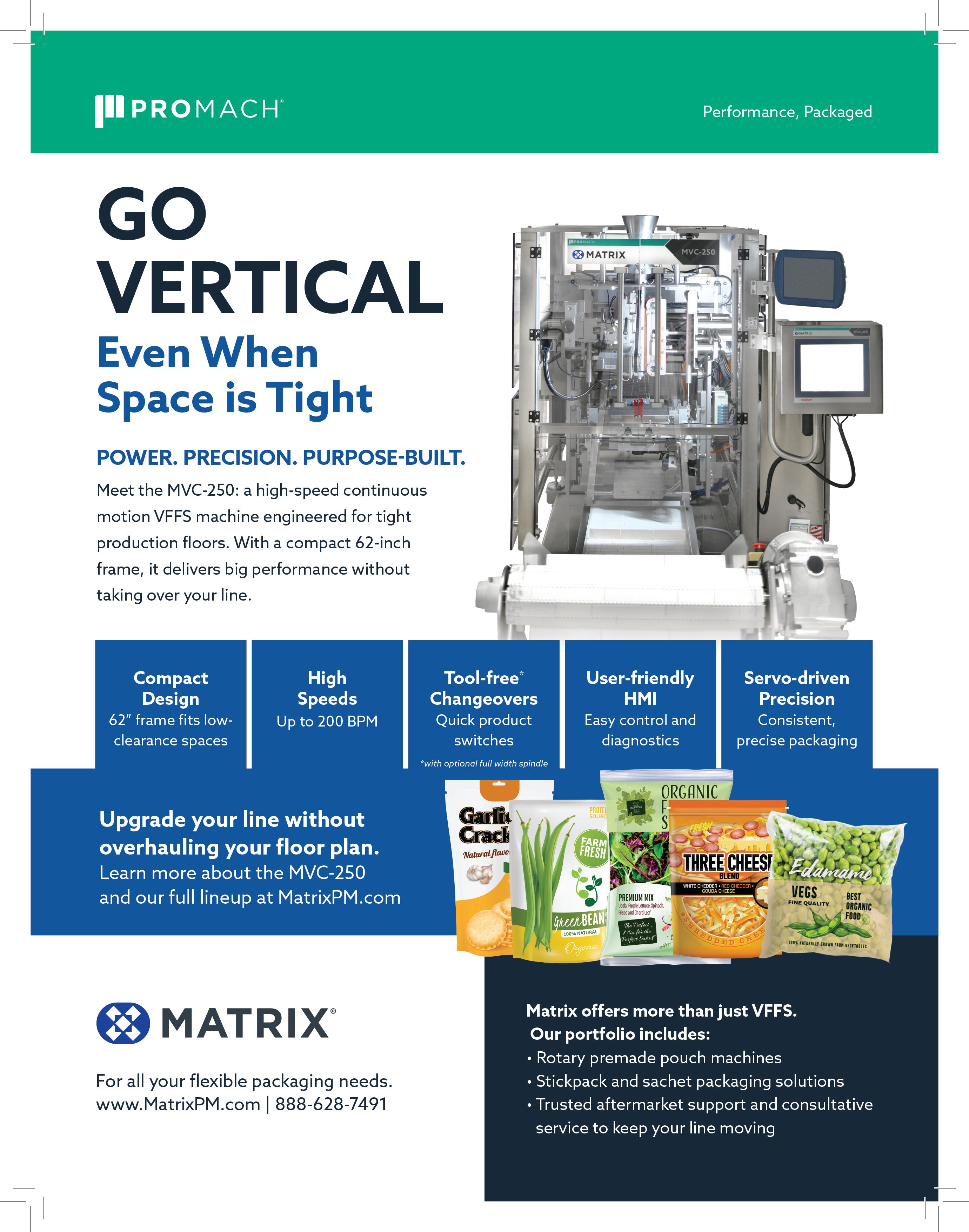



























Small Footprint
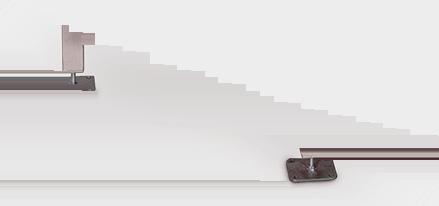
Low Maintenance

Reliable Conveying...
Ryson is the Right Vertical Conveying Solution for the Packaging Industry.





ScottsMiracle-Gro has introduced its new O.M. Scott & Sons line, featuring natural grass food, grass seed, and clover seed, with a focus on sustainability from the inside out. The products use natural, pet-safe ingredients and are packaged in curbsiderecyclable paper bags designed to appeal to younger consumers looking for eco-friendly options in lawn care.
The new line is inspired by company founder Orlando McLean Scott, a Civil War veteran who, in 1868, began selling weed-free grass seed in Marysville, Ohio. That same town remains home to The Scotts Miracle-Gro Company today. The brand revival celebrates Scotts’ 160-year heritage while responding to modern demands for transparency, natural ingredients, and packaging that’s easy on the planet.
“This is the perfect product form for consumers who care about sustainability but still want their yards to perform,” says Ray Severa, manager of Packaging & Applicators at ScottsMiracle-Gro.

Watch a video of the new products and packaging at pwgo.to/8702
The natural lawn food delivers slow-release nutrients without synthetic additives, and the grass seed varieties are droughtand heat-tolerant, with clover offered as a low-maintenance alternative to traditional turf.
To match the natural profile of the products, Scotts worked with ProAmpac to develop a recyclable kraft open-mouth SOS (self-opening sack) made from more than 90% FSC-certified paper, with an “ultra, ultra-thin OPP [oriented polypropylene] liner,” as Severa describes it. The liner, which measures five ten-thousands of an inch—a fifth of the thickness of copy paper—provides light moisture resistance. “A lot of CPGs still use more barrier than they really need,” Severa says. “We designed this bag to be just enough—no more, no less—so that it performs while still being easy to recycle.”
Despite the plastic layer, the bag meets the 85% pulp recovery threshold for curbside recyclability and has been certified by Western Michigan University. It also carries the How2Recycle “widely recyclable” label, helping consumers easily identify it as recyclable.
Whether you are handling cases, trays and packs or bottles and cans in mass or a single file we can help. Ryson Spirals need less floor space than conventional conveyors and are faster and more reliable than any elevator or lift.
Each spiral is built to exact customer specifications, and can even be field modified if needed - thanks to our proprietary modular design.
All products are manufactured in the USA, and we have a full inventory of replacement parts, and a dedicated service team.
We also make a full line of Bucket Elevators for your bulk material conveying needs.
For application assistance or additional information, give us a call or visit us at www.ryson.com
The bag uses a double fold-over seal, a common closure in the pet food industry, and is decorated with low-coverage, water-based inks and minimal adhesives to preserve recyclability. Visually, the design leans on the brand’s heritage with a muted color palette and the revived O.M. Scott logo, reinforcing the product’s natural positioning. “Anytime people see kraft paper, they instinctively think of sustainability,” Severa says. “That helps reinforce the message before they even read the label.”
To validate performance, Scotts subjected the bags to accelerated aging tests and outdoor exposure through fall and winter in Ohio. “We even left these bags outside during months of cold and wet weather,” Severa shares. “The product inside remained flowable and still germinated. That told us we had something durable enough for real-world conditions.”
Currently, the bags are being filled using a semi-manual process, though sealing is already automated using equipment adapted from high-speed pet food lines. “We’re running the new line at about half the speed of our traditional plastic bag lines,” Severa notes. “That’s fast enough to get to market quickly, and we’ll scale up if it performs.”
The paper bag platform also positions Scotts for future refill applications across its product portfolio. Severa cites opportunities to pair the bags with durable containers, such as those used for Miracle-Gro’s Shake ’N Feed all-purpose plant food. “Refill strategies are a win for both sustainability and cost,” he says. “As EPR legislation ramps up, these kinds of formats make more and more sense.”
Beyond functionality and sustainability, Severa emphasizes the intuitive recyclability of paper. “Paper is recycled at about four times the rate of plastic in the U.S.,” he says. “The infrastructure is there, it’s been around since the 1960s, and it can handle small amounts of adhesives or plastic without issue. That’s a big part of why this format works.”
The bag is believed to be the only one of its kind in the category currently. The O.M. Scott & Son’s line is now available online through Amazon and Scotts.com. Retail placement is under review for future seasons. “We’ve already had strong interest from retailers and trade partners such as Home Depot and Lowe’s,” Severa says. “This platform checks all the boxes—performance, sustainability, and consumer relevance.” —Anne Marie Mohan
Secure profitable margins with consistent fill-levels.

High-performance weighing solutions for all industries.
We offer a full suite of technologies to ensure product quality and combat rising manufacturers’ costs. Life is sweet when you partner with METTLER TOLEDO. Visit us for live product inspection demonstrations.


OCTOBER 28 - 30, 2025











This unique portable drum and tote filling machine is built on a special fork-truck-able base designed for batch filling operations at multiple filling stations. As a top and sub-surface filler it handles a pallet of drums or a single IBC/tote ranging from 5 to 550 gallons.
» User Friendly Benefits
» Improved Efficiencies & Accuracy
» Increase Production & Maximize Uptime
» Heavy-Duty & Long Lasting

U.K.-based Win Win Water is making waves in the bottled water market with a new 100% plantbased, industrially compostable bottle. The entire package, including the cap and label, is made from polylactic acid derived from sugarcane and supplied by TotalEnergies Corbion
“Win Win Water was established with a mission to revolutionize the bottled water industry by combining purity, sustainability, and social responsibility,” says Joshua Daley, company director at Win Win Water. “The market is demanding change, and as plastic becomes public enemy number one, we’ve taken a step toward a better solution.”
The choice of TotalEnergies Corbion’s Luminy PLA was no accident. “We looked at every material available,” Daley explains. “Right now, Luminy PLA is the winner in every metric. It is the safest and most environmentally friendly option available.
“The absolute factor for us is human health. Why are we forced to drink millions of PET microplastic particles with every bottle or can of water? PLA offers a solution.”

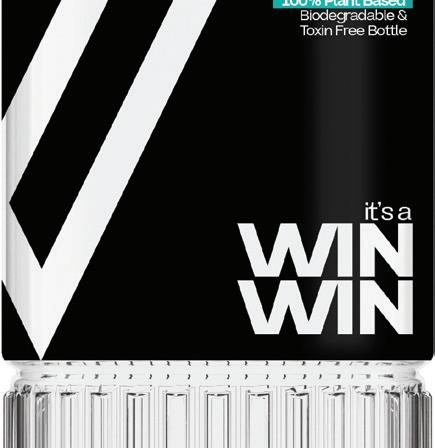


The Luminy PLA that the bottle is composed of is, according to TotalEnergies, 100% non-GMO and produced from sustainably and ethically grown sugarcane. The cap is made from a proprietary PLA compound developed by one of TotalEnergies’ partners.
As Derek Atkinson, VP of sales and business development at TotalEnergies Corbion, explains, the bio-based material provides a 75% reduced carbon footprint compared to petroleum-based plastics, with sugarcane crops absorbing carbon during growth and storing it in the material. “The biogenic carbon from the sugarcane is transferred to the value chain, ensuring a lower environmental impact,” he says.
One of the biggest challenges with using PLA for beverage bottles has historically been heat sensitivity, but for bottled water, Atkinson says it’s not an issue. “High heat-de ection temperatures are not required for water bottles, so this is not a concern here,” he explains.
Win Win’s bottles have been designed to break down within 90 days in industrial composting facilities but are also durable enough for multiple reuses.
While the current production doesn’t include recycled PLA, Win Win Water is exploring the incorporation of rPLA in future runs. TotalEnergies Corbion operates its own chemical recycling plant that uses a depolymerization process via hydrolysis to recycle post-industrial and post-consumer PLA into lactic acid used to produce new, virgin-quality PLA.
“Our technology ensures that over 95% of the carbon in the incoming waste is returned as virgin PLA, which is far more ef cient than recycling polyole ns,” says Atkinson.
As Daley relates, developing the bio-based water bottle hasn’t been without its challenges. “We have spent hundreds of thousands of pounds over the last three years to make this possible,” he says, but the response, he adds, has been “amazing.”
“The next generation of young adults gracefully demand healthy, forward-thinking innovation, and it’s great to feel the love for trying to impact the world in a positive way,” Daley say.
Win Win Water is available in the U.K. and Austria; the company has a goal of expanding worldwide by 2027. —Anne Marie Mohan




Looking for a packaging partner that does it all? nVenia delivers fully integrated solutions from fill to pallet—designed, built, and supported in-house.
From CPG to Industrial applications, our equipment portfolio includes form fill & seal machines, bagging systems, shrink bundlers, robotic palletizers, and more—engineered to perform and built to last.
Your product. Our system. One seamless solution.
Building on the momentum of last year’s 65% paper sachet developed for hair and skin care company Nécessaire (see pwgo.to/8701), Estée Lauder Company (ELC) cosmetics brand Origins is preparing to launch a new 80% paper sample packette in partnership with Arcade Beauty. The recyclable sachet marks a signi cant step forward in sustainable sampling, replacing the foil-based format traditionally used by beauty brands with a package designed to reduce plastic and carbon emissions while meeting repulpability standards for paper recycling streams.

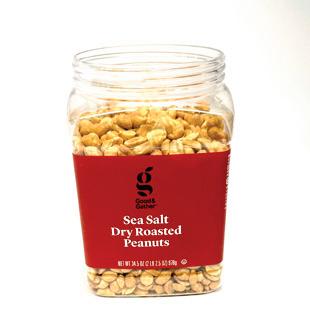
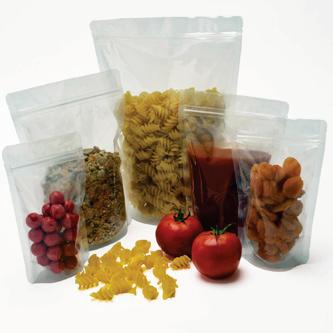

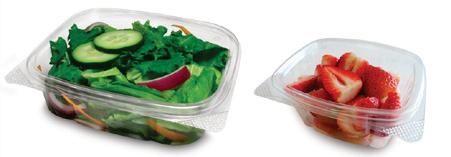
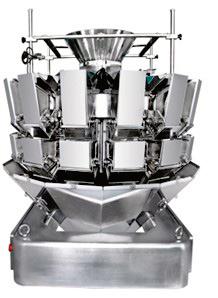


According to Minghui Cai of ELC’s Sustainable Packaging Development team, the launch re ects Origins’ broader commitment to packaging sustainability, which includes a portfolio redesign that has cut plastic use by 35% and incorporated 30% post-consumer recycled content. “This new packaging portfolio helps us use 35% less plastic. That is equivalent to 2 million plastic water bottles,” Cai shared with audience members at Clemson University’s 2025 FRESH Food, Packaging & Sustainability Summit in March 2025. “The portfolio redesign has been a multi-year process to get to packaging that we believe is aligned with our sustainability principles, is beautiful, and is truly intentional.”



The 80% paper packette was developed over two years and will be used for Origins’ skin care product sampling. It features a simplied, two-ply, mono-dose structure of paper and a dual-purpose barrier and sealant layer. According to Matt Dingee, CSR Packaging for Arcade, the barrier/sealant layer comprises “metallization upon a select thin-gauge material.” Compared to Origins’ previous four-layer foil sample sachet, the new design reduces plastic by 76%, energy consumption by 63%, and GHGs by 69%.














“By transitioning our sampling formats to this innovative solution, we are taking another signi cant step toward our conscious packaging goals,” says Lauren De Sanctis, executive director of Global Packaging at Origins. “This format supports our commitment to recyclability by design and minimizing multi-material plastic use.”
Developing the new format required extensive collaboration between Origins and Arcade and involved a number of challenges. The rst was to provide a barrier that would protect the product for the desired amount of time, while replacing the current materials with as much paper as possible.
“Our research began by assessing a multitude of materials to replace the original layers with thinner material or paper, while still offering barrier and sealing properties,” explains Ciara Donohue, global sustainability and CSR manager at Arcade Beauty. “Upon identi cation, we paired these new materials with various papers to meet the North American repulpability threshold and allow for manufacturing feasibility.”
The second hurdle was adapting Arcade’s printing, lling, and packaging processes to the new paper-based material, which required technical modi cations to its equipment to ensure a result identical to what Origins had with standard, non-paper materials.
“Many of the materials we evaluated were not readily available or failed to protect product bulk,” explains Dingee. “We had to search outside our typical supply chain and retool our machinery to run this stiffer, more paper-dominant structure.”
The packette is classi ed as recycle-ready and meets North American repulpability thresholds, though regional curbside recyclability may vary. “Origins is the rst skin care brand to partner with Arcade on this [80% paper] launch,” said Cai. “We are actively encouraging more brands to adopt this technology as it not only bene ts the environment but also supports compliance with emerging regulations.”
According to Donohue, details on the launch date for the Origins packettes and the products that will be available in the new packaging are “forthcoming.” —Anne Marie Mohan

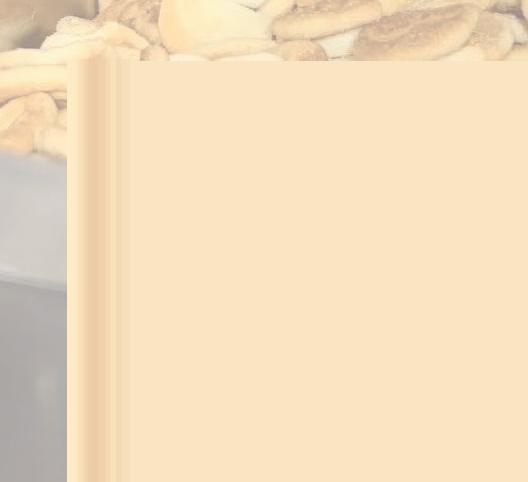

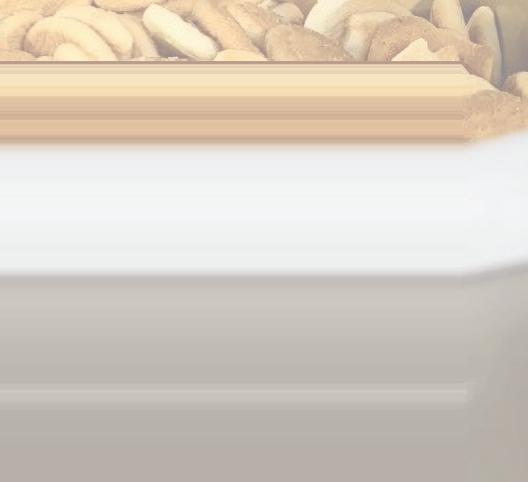
Eriez offers the broadest range of feeders in the world, and the experience needed to customize a reliable solution for your equipment. Eriez. Always the Right Choice.
Electromagnetic Vibratory Feeders from Eriez offer precise control over material flows, ideal for conveying materials, feeding weigh scales, and metering ingredients.





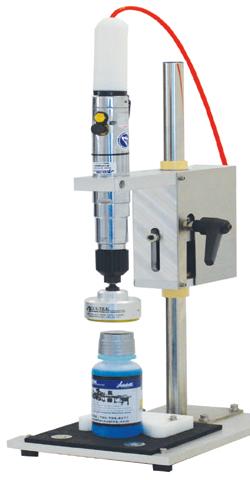

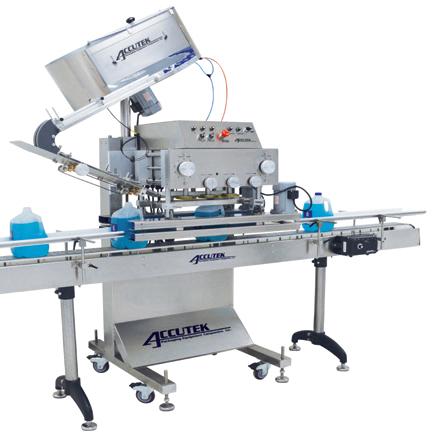


“You have 131 million households that recycle cardboard, and you have a 400- or 500-store chain in the country that recycles more cardboard than all 131 million households. Just stop and think about that for a second. It’s pretty amazing—and pretty revealing about where we’re falling short.”
–Myles Cohen, founder, Circular Ventures, in a presentation at the Plastics Recycling Conference, “Revitalizing Residential Recycling: Overcoming Barriers and Driving Progress”
“It’s just not reasonable to expect that producers will voluntarily use something [recycled polyethylene film] that costs three times as much as virgin material. But policy can help level the playing field. We may need to consider tools like subsidies, recycled content mandates, or even a virgin resin tax if we want to bring post-consumer film into the system at scale.”
–Susan Robinson, owner of Susan K. Robinson Consulting and advisor for GreenBlue Navigate, in a presentation, “Unlocking Curbside Recycling for Flexible Films: What Must Be True,” at SPC Impact 2025
“Not every automation project pencils out by traditional ROI standards, and that’s okay. Sometimes it’s not about reducing costs; it’s about keeping your doors open when you can’t find labor. Automation might not be a luxury anymore. For many, it’s survival.”
–Daniel Vrana, automation team lead, EWI, Buffalo Manufacturing Works, in a presentation at Universal Robot’s Collaborate 2025 event, “Approaching Automation Implementations: Strategies for Success and Sustainability”
“We’ve flooded the packaging space with so many logos— FSC, SFI, B Corp, recycle arrows—that it’s become the nutrition label equivalent for sustainability. Labels like ‘recycle-ready’ might steer people in the right direction, but they’re also aspirational. If the infrastructure isn’t in place, it’s not really a solution—it’s a placeholder for the system we wish we had.”
–Greg Johnson, consultant, in a presentation titled, “The Circularity of Fiber, Plastic, Metal, and Organic Materials,” from Clemson University’s 2025 FRESH Food, Packaging & Sustainability Summit








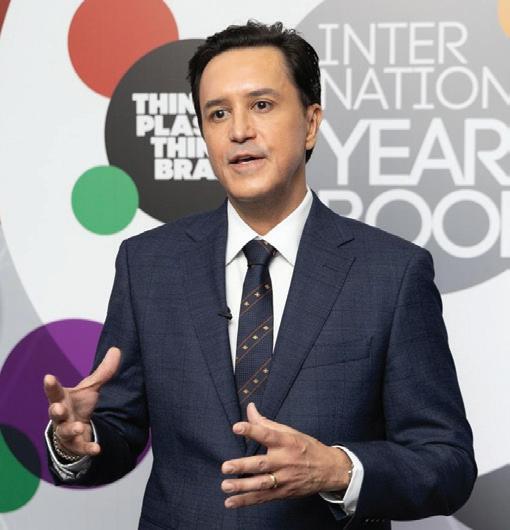
As Brazilian packaging companies target the U.S. market, Think Plastic Brazil—a trade promotion initiative and innovation hub for Brazil’s plastic packaging industry—is leading the charge. Executive Director Carlos Moreira explains how the group supports manufacturers in meeting global buyer demands.
What are the core strategies Think Plastic Brazil is using to position Brazilian plastic (packaging) companies in the U.S. market?
Think Plastic Brazil structures its strategy through an official Sectoral Project in partnership ApexBrasil [The Brazilian Trade and Investment Promotion Agency] aiming to internationalize the Brazilian plastic transformation industry. Our approach is based on five strategic pillars: international promotion, innovation and design, sustainability, competitive
Specifically for the U.S. market, we implement targeted initiatives such as participation in international trade fairs that fosters direct B2B connections with international importers. Our market positioning also integrates innovation through proprietary tools like the Color Trend [a color trends guide produced by Think Plastic Brazil to guide decisions by professionals in the converted plastics industry in Brazil], which introduces Brazil’s visual identity into product differentiation, and Global Green Design, which strategically prepares companies to compete through ESG, compliance, and design excellence.
How is Brazil aligning with the U.S. market’s expectations for more sustainable and innovative packaging?













As the U.S. has increased its demand for more sustainable and innovative packaging solutions, Brazil has followed this trend through structured capacity building and product adaptation. Think Plastic Brazil has integrated sustainability modules into its international presence, thanks to partnerships with companies like Braskem. These modules are showcased at key fairs to highlight circular economy practices and eco-friendly material development. Additionally, we provide specific training on sustainable communication and environmental strategy, ensuring our companies are aligned with global trends and expectations.
Brazil is known for its renewable energy and circular economy initiatives. How are these sustainability strengths being communicated to U.S. partners and buyers?
Although macro initiatives on circularity are led by entities such as ABIPLAST [Brazilian Association of the Plastic Industry], Think Plastic Brazil plays a complementary role by























fostering education, visibility, and strategic ESG positioning among supported companies. We achieve this through sustainability-focused lectures, courses, and the inclusion of circular economy modules in international fair displays.
What role does innovation—such as lightweighting, advanced recycling, or digital printing—play in the internationalization of Brazilian packaging companies?
Innovation is one of the strategic axes of Think Plastic Brazil. Through the Global Green Design framework, we have implemented specific programs to boost international design competitiveness, such as the Design Innovation Accelerator, R&D Export Lab, and the Circular Design Lab. These programs encourage the co-development of packaging solutions aligned with circularity, aesthetics, and technical feasibility for international markets. In parallel, the Color Trend platform brings an additional layer of value by embedding emotional and cultural storytelling into visual identity, which resonates deeply with international buyers seeking unique narratives.
What are the biggest challenges Brazilian companies face when entering the U.S. market, and how does Think Plastic Brazil help overcome them?
The primary barriers include unfamiliarity with U.S. regulations, adaptation of products and communication to local preferences, and limitations related to booth space and visibility in international fairs.
Think Plastic Brazil tackles these through diagnostics, mentoring, and technical guidance offered within our export qualification cycle.
How do you ensure companies are export-ready in terms of quality standards, certifications, and logistics?
Companies are also guided through technical consulting processes to ensure their documentation, product portfolio, and operational readiness align with international expectations. Complementary programs like the Export Design Booster help them tailor packaging and branding to cultural preferences in specific target markets, including the U.S.
Are there any key partnerships or collaborative initiatives between Brazilian institutions and U.S. organizations that support market entry?
Yes. Think Plastic Brazil collaborates closely with SECOMs [Brazilian Commercial Sections in U.S. embassies and consulates], as well as with international design studios and academic institutions via the Global Partnership Accelerator. These initiatives aim to formalize business and R&D partnerships and have already led to joint developments and licensing agreements.
How is Think Plastic Brazil facilitating dialogue or matchmaking between Brazilian manufacturers and U.S. CPG brands or retailers?
Through our World Plastic Connection Summit Buyer Projects and virtual matchmaking tools, we ensure curated meetings between prequalified Brazilian suppliers and international buyers. These meetings
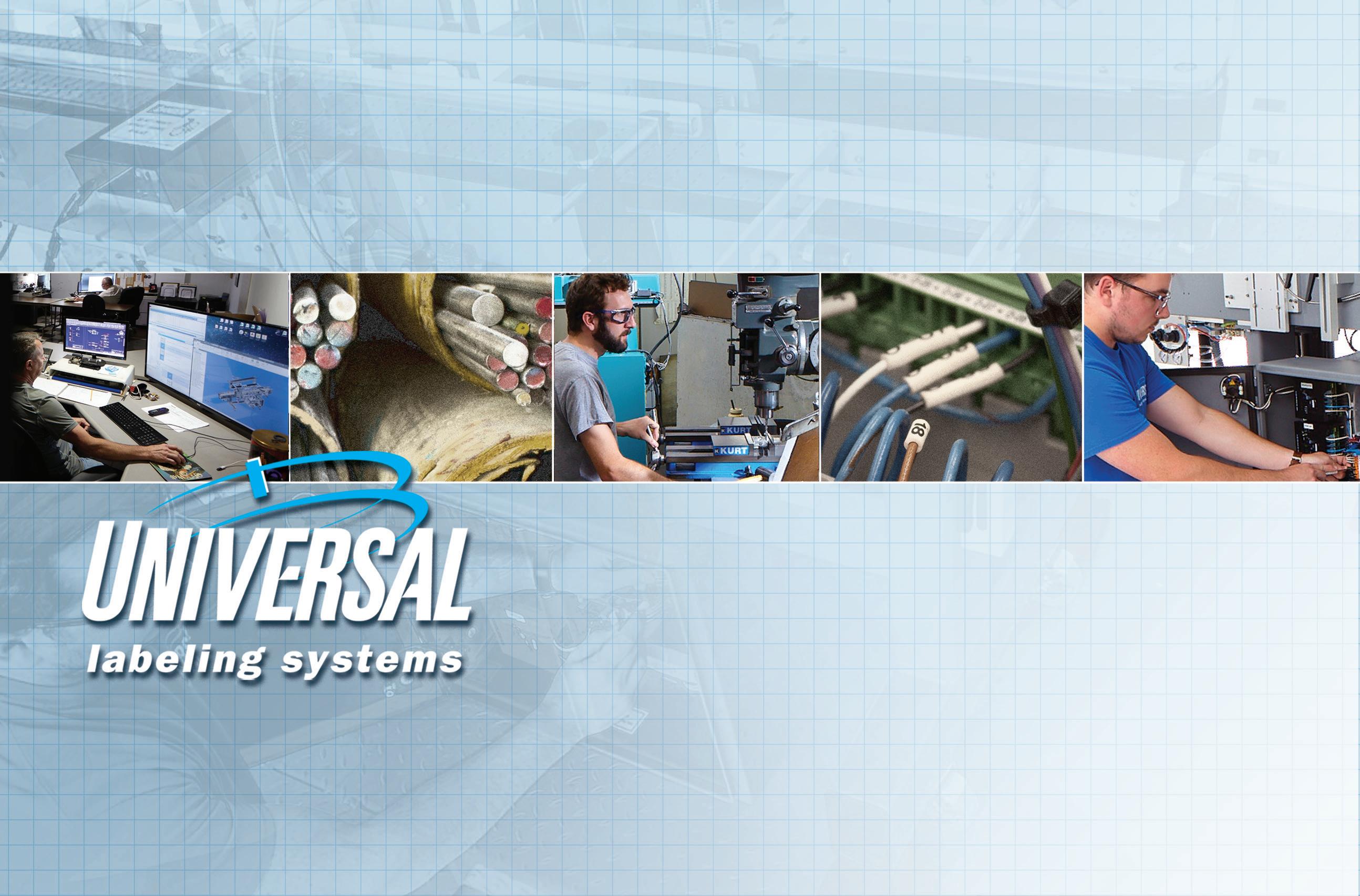







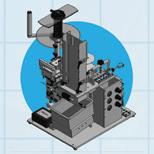



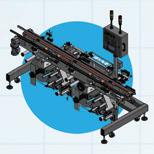


Delivering Results. With Heat and Control, you have a partner with the scale to support your success, the innovation to advance your operations, and a commitment to quality that will help you offer better products for consumers.

PROCESSING AND PACKAGING SOLUTIONS
• Food processing systems
• On-machine and process area seasoning application
• Conveying and product handling
• Multihead/combination scale weighing and filling
• Snack bagmaking and case packing
• Metal detection and x-ray
• Check weighing and seal checking
• Controls and information systems
We are successful when you are successful. That’s why we apply creativity, engineering excellence, and determined perseverance to every project to help our customers get the performance their business demands—whether measured by flavor, efficiencies, sustainability, improvement, or innovation.





are further enriched by the use of personalized company profiles and CRM-based selection, ensuring relevance and efficiency. Our structure also includes in-person guided tours and immersive missions to foster deeper commercial ties.
What trade shows, roadshows, or commercial missions in the U.S. has Think Plastic Brazil participated in recently?
Our presence at PACK EXPO International and PACK EXPO Las Vegas is a staple in our calendar. We also promote participation in other global shows aligned with key verticals, including agrobusiness and construction, and develop specific actions within our own platform, the World Plastic Connection Summit, which has grown into a hybrid annual event encompassing business meetings, lectures, and product exhibitions.
How do Brazilian plastic packaging companies differentiate themselves in a competitive U.S. market?
Differentiation is rooted in storytelling, design originality, and the emotional value of Brazilian culture. The Color Trend guide is a strategic differentiator, offering exclusive Brazilian-origin color palettes validated by the supply chain and inspired by national narratives. These colors are promoted internationally through design kits, yearbooks, and immersive experiences in trade fairs, reinforcing Brazil’s role as a trendsetter rather than a follower in global packaging aesthetics.
Are there any Brazilian packaging formats or technologies that are gaining traction or standing out in the U.S.?
Yes, formats that incorporate Color Trend-branded colors and packaging concepts rooted in Brazilian identity have stood out. Additionally, companies that align with circularity principles and present certified packaging prototypes, developed through initiatives like the Circular Design Lab, are gaining attention in international fairs and attracting interest from global buyers.
What are Think Plastic Brazil’s top priorities for 2025 when it comes to U.S. market engagement?
Our focus for 2025 includes launching the Color Trend as a registered brand on global platforms, expanding the reach of the Global Design Hub, and amplifying our presence in North American events with better infrastructure. We also aim to increase the number of companies qualified in the Expert Plus category, and to consolidate Global Green Design as a benchmark of Brazilian design and sustainability worldwide.
Where do you see the greatest opportunities for growth or collaboration between the Brazilian and U.S. plastic/packaging sectors?
The strongest opportunities lie in co-creating packaging solutions with cultural value and environmental compliance. U.S. brands increasingly seek partnerships that offer narrative depth and ESG alignment—areas where Brazilian companies excel through initiatives like Color Trend and platforms such as the World Plastic Connection Summit, which facilitate long-term business development through authentic Brazilian identity and global innovation standards. —Anne Marie Mohan





By Eric F. Greenberg, Attorney-at-law
The past few months have been eventful on the government reform front.
Although the effort was described as the elimination of “waste, fraud and abuse” from the federal government, instead, the administration, with apparently little if any consideration of regulatory agencies’ functions or effectiveness, issued wholesale reductions in the number of federal employees at each agency, sometimes with buyouts, more often via layoffs. It also eliminated or significantly reduced a range of government programs at most if not all regulatory agencies.
Perhaps you expected reductions like this would have involved close cooperation with, and input from, the relevant personnel at each agency. Or maybe you expected evaluation of the chores Congress told each agency to perform, and analysis of how well the agency was doing each. But that isn’t how this was done.
The goal of rooting out and eliminating “waste, fraud and abuse” is worthy, but the administration’s chosen methods are ill-suited to it, more arbitrary than logical. For example, at some agencies, pretty much any federal employees who were on ‘probationary status’— either because they were new to federal employment or just new to their job within an agency—were terminated, regardless of what they were or weren’t doing. It’s clear that not all of them were guilty of waste, or fraud, or abuse. Employees by the thousands at multiple agencies, in any and all job types, were encouraged to resign, and many did. Large numbers of other employees were eliminated as well, after which, frequently, thousands were quickly hired back, as the administration essentially admitted its mistakes in letting them go.
Meanwhile, federal workers are being required to prepare weekly reports on what they are doing, though the odds are low that anyone is basing termination decisions on those reports.
A few words about my particular angle on all this: I am an attorney in private practice who helps companies comply with laws and regulations, and I fight like heck on their behalf. I am wellacquainted with frustrating and burdensome regulatory requirements. But I am not a cynic about regulators and regulations, and don’t believe all or even most regulators are corrupt or lazy. I have long believed that on balance industry is usually helped, not hurt, by regulatory requirements that are clear, consistent, predictable, and fairly enforced, and operated by experienced, knowledgeable, responsive regulators. I also believe that most or all lawyers in similar roles have the same view.
Remember, every regulation is made for a purpose. If the purpose of a regulation is not needed anymore, or it’s too burdensome on businesses or people, then it would of course be good to eliminate the regulation. But wholesale and arbitrary cutting of personnel and budgets and regulations doesn’t appear to be aimed at those
targets, and importantly, will certainly mean that purposes like food safety, drug safety, limiting pollution, providing healthcare for poor or disabled people, protecting consumers from banks cheating them, and many others, all will stop altogether or will be done in a worse way.
Worse how, you ask? Like no one at FDA to answer your questions or review your packaging Food Contact Notification or GRAS Notice, or delaying or withdrawing new regulations that would clarify what you can and can’t put on your food labels worse. Like forcing you to waste hours on the phone to get an answer at any agency worse. Or like stopping much government medical research to fight against diseases worse. Or like no one at the agency having any experience dealing with the scientific or mechanical issue the agency is responsible for overseeing worse. When the government downsizes haphazardly, the public is likely to face additional dangers and severe inconveniences that could’ve easily been avoided if the downsizing was done with a little more thought.
You may be thinking that this is the way private companies downsize, so what’s the big deal? Well, for one thing, private companies put a little more thought into choosing who they will downsize. And they do it, often, after sales go down so the need for employees is reduced. For another, remember that many of the functions of government are primarily focused on protecting public safety, while a company’s aim is to maximize profits and sales. (What’s more, if a private company’s business is aimed at protecting public safety, it has other incentives, such as avoiding lawsuits from injured consumers, to make sure to get that right even if it’s downsizing.)
Rooting out waste, fraud and abuse do not appear to be the real goal of this effort. What, then, is it really targeting? I have read several theories, but a common one it that it’s an ideologically driven program to destroy the administrative arms of the government so that every part of it is dependent only on the President. You will recall that in his first term, President Trump proposed replacing thousands of federal civil service employees with individuals whose primary qualification is loyalty to the President, rather than to the nation or the Constitution or laws. That appears to be part of what he’s doing now. Some folks suggest this would make it easier for him to dole out exceptions and favors from regulations to donors, friends, or buyers of his products.
Some even assert that it’s not just that the President wants folks loyal to his preferences in place in every part of the government, it’s that, unlike most Americans, he doesn’t even want a government that protects people from unscrupulous business practices or unsafe foods or drugs or damage to the environment, or from unequal protection of the law or the vagaries of disease and poverty.
Is that a wild exaggeration, or will all his efforts truly make the federal government more effective and less corrupt?
We’ll see. PW
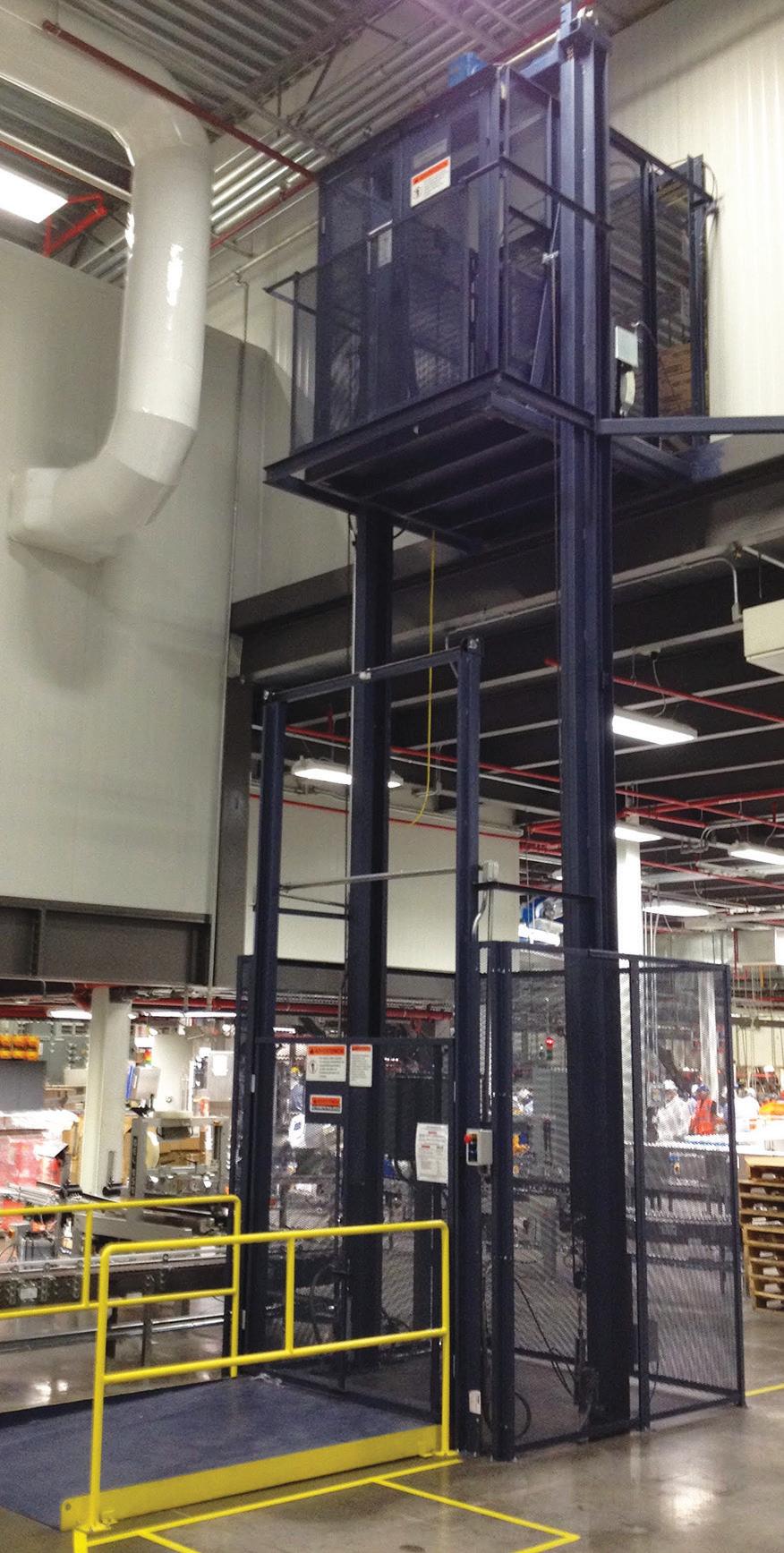
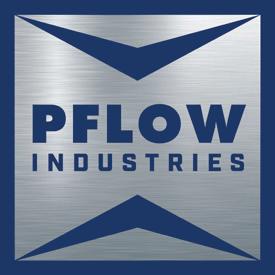

By Sterling Anthony, CPP, Contributing Editor
For CPGs (consumer packaged goods), wooden pallets are the workhorses of supply chains and need to be systematically managed. Palletized loads are the physical embodiments of the time and the costs expended in placing goods into the commercial stream. When a pallet fails to maintain its load intact throughout the supply chain, adverse consequences are certain. The consequences are never less than inconvenient—for example, having to transfer goods from one pallet to another. Consequences, however, can be far more serious, such as injuries to personnel who handle the compromised palletized load, or even are just in its vicinity.
In their investigations of pallet failures, companies can wrongly regard the pallet as the victim rather than as the culprit. The thinking goes, the palletized load must have been subjected to rough handling, a rough ride, inadequate securement inside a trailer, poor warehousing techniques, or something else. While the aforementioned can cause pallet failures, they don’t eliminate the need for open-minded analysis. Without it, a user company might be paying for pallet performance not received.
Supply chains inherently impose physical and environmental hazards, such as impacts, shocks, vibrations, compressions, temperature variations, and moisture level variations. Reliable information about supply chain conditions—by modeling or through experience—helps determine whether encountered conditions exceeded what’s reasonably foreseeable, or if the pallet simply was unfit for its designed purposes.
handled, if the stringers are notched. Block pallets enable four-way handling, period.
Pallets further come in Grades A, B, and C, for premium, standard, and utility, respectively, relating to their quality and suitability for certain applications. Generally, Grade A is suitable for expensive products, Grade C is suitable for single-use and is not-to-be-returned, and Grade B is suitable for the vast middle ground of applications. In lieu of Grades, one can specify new or used.
The necessity for specifications continues with pallet construction. Yes, most of the pallets are constructed of wood. But there are softwoods derived from needle-bearing trees such as pine, and hardwoods derived from leaf-bearing trees such as oak. Hardwoods as the name might imply are denser and sturdier, making for stronger, heavy-duty pallets. Hardwoods, on the other hand, are more expensive, being in shorter supply because hardwood trees take longer to reach harvestable heights.

Wooden pallet pools, such as those operated by CHEP and by PECO, deliver pallets to user companies and handle administrative accounting, returns, and repairs, thereby relieving users from those aspects of pallet management. Pallet pools also provide a high degree of standardization due to mechanized assembly. The vast majority of wooden pallets, however, are not pool pallets but are so-called white pallets (because they are not painted). An inventory of white pallets is an investment, and therefore, is an asset that should be managed.
A necessary requirement for effective pallet management is the development of specifications. It is easy to give short shrift to the requirement, defaulting to the dominance of the 48 in. by 40 in. GMA (Grocery Manufacturers Association, renamed Consumer Brands Association) pallet—acquirable from practically all pallet suppliers. But acquiring GMA pallets is not analogous to grabbing a garment off the rack. That’s because, despite their supposed length-by-width sameness, GMA pallets can differ in a variety of ways. It starts with design: stringer or block, referring to the construction of the base. Stringer pallets can be two-way fork-handled or four-way fork-
Never to be overlooked are the components, particularly the deck boards. Their width and their quantity determine the spacing among the boards, a relationship that’s important to the composition of the load. Deck board spacing should not allow edges of the bottom packages (for example, corrugated cases or pails) to rest unsupported. It makes for load instability, and the greater the number of tiers in the load, the greater the instability becomes. Conditions worsen if palletized loads are stacked.
Since pallets are assembled, the means should be specified. Choices of fasteners include nails, screws, bolts, and staples. The type and quantity of fastener impact how well the pallet holds together. Whereas that might be self-evident, perhaps less so are the associations among fasteners, spacing, and wood type. Hardwood provides greater fastener retention; that is to say, it is more difficult to extract a fastener from hardwood than from softwood. In tradeoff, hardwood is more prone to splitting if fasteners are driven too close to one another.
Various entities, such as ASTM International, ISO, and ISTA, issue standards and/or test protocols related to pallets, although compliance is voluntary. Depending on company-specific factors, however, it can be advisable for a specification to require compliance.
A column of this length cannot plumb the depths of the topic of pallet specifications. Despite that limitation, readers should be left with an appreciation of the importance of the topic and of its many facets. Well-written specifications, encompassing words and figures, are key to obtaining pallets that perform their indispensable function of getting their loads to destination, while promoting safety, productivity, and cost-efficiency throughout the supply chain.
Part 2 will be about choosing pallet suppliers. PW










15 YEARS AGO, WE INVENTED BIODOLOMER. A bioplastic with limestone as the key ingredient. Biodolomer is fully compostable (certified by TÜV and BPI), and when decomposed, it will actually leave extra calcium from the limestone in the soil.
Biodolomer comes in granules that can be used for thermoforming, film blowing, extrusion coating, injection molding... you name it.
It does all the good stuff that plastic does. But not the bad.
It contains only ingredients that are approved by the FDA. It uses less energy in production and results in up to 80 % less CO2 than traditional plastic.
You can even put it in your home compost and watch it disappear.
Biodolomer might just be the easiest way to make your brand more sustainable. For real. Give it a go.

By Rob Keith, Policy and Membership Director, AMERIPEN
Packaging recycling rates and recycling capacity are improving, albeit not quite at the pace some had hoped. Although CPG companies have made noteworthy progress toward their sustainability goals, 2025 goals are still out of reach for many. Challenges obtaining a sufficient supply of post-consumer recycled (PCR) content remains the biggest hurdle to overcome.
This snapshot of the packaging industry from AMERIPEN’s “U.S. Packaging Recycled Content Goals Analysis” study (see pwgo.to/8699) also highlights the need for additional reclamation to meet PCR demand. The newly released study details how the packaging industry is making meaningful strides toward circularity in recent years while contending with ongoing challenges in collection, capacity, and quality.
AMERIPEN engaged Circular Matters, a consulting firm with expertise in packaging and recovery systems, to help evaluate 2023 data on supply, demand, and capacity for recycled materials in paper, plastic, metal, and glass packaging in the U.S. The report, funded by PLASTICS’ Recycling Is Real campaign, documents progress made in sustainable packaging and increased recycling capacity since AMERIPEN issued a similar report in 2021. The findings offer encouragement that progress is being made.
To get a picture of demand for PCR in relation to supply of recycled materials, researchers reviewed the voluntary and publicly declared recycled content goals of 46 CPG companies. They then added goals set by trade associations and weighed the impact of state-mandated extended producer responsibility (EPR) requirements or recycled content mandates on the packaging industry—all established after the release of the initial 2021 report.
PCR in plastic packaging has more than doubled from an average of 5.3% in 2019 to 10.7% in 2023 among companies with stated goals. This mirrors global trends, as companies participating in the New Plastics Economy Global Commitment 2024 Progress Report (see pwgo.to/8700) increased their percentage of PCR in plastics packaging from 5% in 2018 to 14% in 2023.
Additionally, U.S. plastics reclaimers have more than doubled their capacity to supply PCR for packaging. Nevertheless, additional capacity is needed for all resins aside from high-density polyethylene (HDPE) and low-density polyethylene (LDPE), with a particularly high demand for PET.
The supply-demand mismatch for PCR material highlights gaps in the value chain and infrastructure for many materials, but especially for plastics. AMERIPEN often sees this disconnect at the legislative





o -li c o io o s . o o l o s .


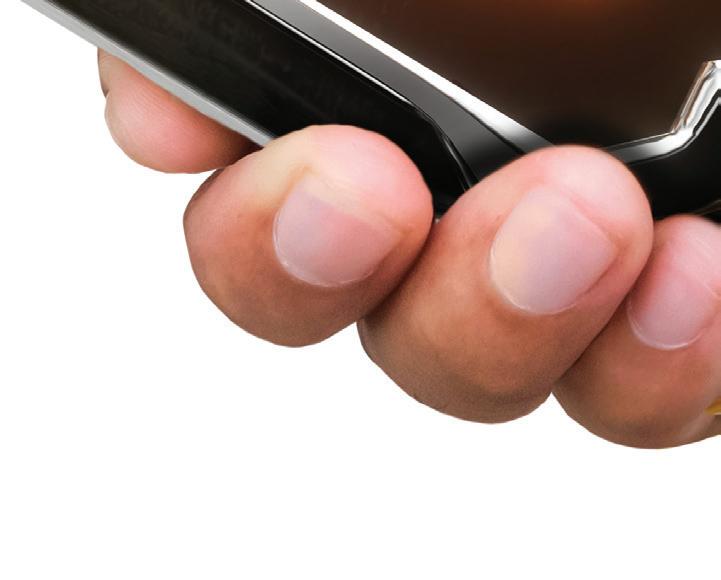


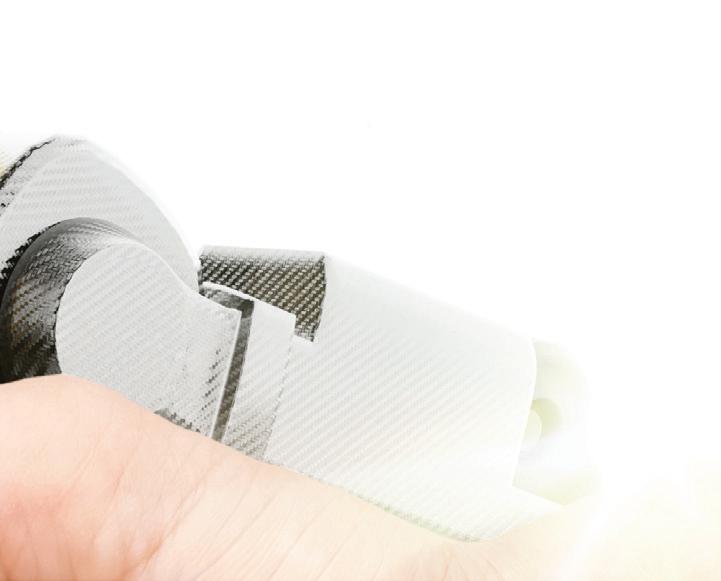








level when policymakers write recycled content mandates under the assumptions that PCR materials are readily available and that it’s simple for producers to transition from virgin materials to PCR.
Still, the gap between demand and supply is closing. In plastics, for instance, PCR use went from 0.6 billion pounds per year in 2021 to 1.9 billion in 2025. However, with companies continuing to issue voluntary sustainable packaging goals and more states expected to enact recycled content and EPR laws that include PCR targets, the demand for recycled materials in packaging is expected to increase. More collection from consumers is needed to meet the demand anticipated based on today’s goals, especially in plastics and aluminum, as it’s unclear whether materials recovery from these laws will provide sufficient supply.
PCR for food contact requires additional regulatory oversight. Obtaining approvals to manufacture food-contact PCR has been a frequent pain point for packaging providers. Researchers were unable to quantify the capacity to produce plastic and paper PCR approved for use in food packaging due to “lack of public data on packaging used for food versus non-food uses and amount of PCR approved for food-contact uses.” Obtaining PCR plastic acceptable for food packaging also is difficult due to the inferior quality of mechanically recycled plastic and the higher costs associated with using PCR resins over virgin plastic resin.
Advanced recycling, which holds promise as a new source for plastic PCR and food-contact applications, is not yet widely available in the U.S. Capacity was reported at 0.4 billion pounds per year in AMERIPEN’s
2021 report and grew to just 0.5 billion pounds per year in the latest report. By contrast, mechanical plastic recycling capacity increased from 2 billion pounds to 4.2 billion pounds over the same period.
While companies can utilize advanced recycling as a tool to achieve their individual goals as the technology gains traction in the U.S., it’s unclear whether packaging regulations will permit feedstock produced from advanced recycling to be counted toward compliance with state laws.
As a result of their findings, researchers conclude that a comprehensive approach with multiple tactics must be employed simultaneously to meet goals for sustainable packaging stretching forward to 2032, particularly in the realm of plastics. Collections of materials for recycling must continue to increase, and we need greater consumer participation. Mechanical recycling technologies must continue to evolve to produce higher-end resins, and advanced recycling should be considered to fill gaps in mechanical recycling for safe, food-contact recycled resins.
Moving forward also means collaborating across groups and industries to overcome technical, regulatory, and supply chain barriers. Industry input is critical for setting goals or regulations, and market development has to be part of any packaging regulation that’s seeking to increase circularity. AMERIPEN continues to work with stakeholders across the packaging value chain to advocate for workable, informed, and effective legislation. PW

Agr’s Process Pilot+ system delivers a automated, predictive response tailored to your unique bottle design and blowmolder characteristics – ensuring optimization, consistency and repeatability.
No need for big data, just reliable insights.
Produce your best product today as, together, we change global packaging technology one solution at a time.


By Ken McGuire, Contributor
As I have recently left my 28-year career at Procter & Gamble and ventured into the consulting world, I have seen a common theme among many of the small companies with whom I have had the privilege of working. While there’s endless enthusiasm and optimism about prospects of changing the world with a new product, the questions about what a business’s future should be don’t tend to be front and center. There is a tremendous amount of work that goes into creating a new product or brand, ranging from formulation to contract manufacturing, package sourcing, artwork, social media campaigns, hiring, bookkeeping, accounting and general business management, and finally to production and shipping. Many times, lost in this flurry of exhausting but exciting work is an answer to the question, “What do I want to be when I grow up?”
The right time to ask this question is at the very beginning. Typically, when I ask this question of a startup, the answer is “to make a lot of money.” Yes, nobody starts a business without that hope, but how you make that money can change a lot of the very early work that you do as you begin this journey. Do you want to grow the business to support your family and pass it along to your children? Do you want to grow your business through grassroots to eventually employ hundreds of people with you staying on as the CEO? Do you want to build your business to the point of having a large, multinational company like Nestlé or Estée Lauder acquire it, so that you can continue your path as serial entrepreneur? Rarely do the skills required to create and build the beginnings of a new business translate to large scale manufacturing and all of the logistical challenges that come with it.
Obviously, the answers to the questions above will change the strategies you employ in the very earliest days. Let’s take for example a brand that I am currently working with. Heliconia is a new skin care product developed by entrepreneur Yolanda Shenkin. She lived in Panama, and she recognized that current skin care products left her skin feeling greasy because of the hot, humid climate. In response, she developed a new product to leave her skin feeling moisturized but not greasy. Her early packaging choice is stock packaging with very simple, elegant graphics which highlights the elegance of the brand. She did not try to design a cost-optimized version up front, nor should she have. Our early discussions revolved around how to launch the brand, especially given her desired outcome. While she wasn’t completely sure where she wanted to be in five years, she did want to be open to any future opportunities. So she asked questions. How big is the market? How much will consumers pay? How much does it cost to manufacture and package at scale? What kind of intellectual property can you own?
To answer these questions at the very outset of her product launch journey, Shenkin is now focused on obtaining some key data. She is using e-commerce as her sales and distribution method to reach her consumers quickly. She is following up with the consumers who buy her products to ask why they purchased them, and importantly what they liked and didn’t like. In business lingo, she is identifying her product’s “who.” She is working with formulators and packaging companies to put her key financials together to build a case for a robust business model and appropriate margins at her current scale (hundreds or thousands of units per month) to true, multinational scale (millions per month). Through all of this work, she is creating her complete product story. She will be able to articulate precisely who loves her brand, and why they think it is superior to other products currently on the market. She is developing a clear reason, with relevant data, for someone to take her brand and amplify it through the use of large-scale distribution. This is not Shenkin’s skill, nor should we expect it to be.
Separately, I recently worked with a meat packing company based in the San Francisco Bay Area. This was a family business that had really exploded from a single packing plant with a few employees to several plants with hundreds of employees in just over 15 years. The business had grown into a massive time investment from the two owners, a husband and wife team, and it was taking away from their time with their kids as they grew up. For this reason, they wanted to sell the business. Here was an example of a company that grew beyond the capabilities of the people who started it very quickly—a great financial problem to have. I couldn’t help but wonder how their growth might have been different if they had tackled some of these questions earlier in their company growth. Should they have hired an operation manager to relieve themselves of this duty? A larger sales force? Packaging engineers to manage interfaces with key suppliers? All of these decisions add cost, and so should be considered carefully at each stage of company growth.
Packaging design and production for a new product are also a key to the products success in the market. According to a 2024 PMMI Business Intelligence report, “Contract Packaging & Manufacturing: Drivers of Machinery Investments,” a report surveying brand owners across the food, beverage, beauty, home care, and health care sectors, 14% of respondents use contract packaging for 90% of their businesses. This may be entirely appropriate early in the business building process. What the brand owners should always be asking themselves is ‘at what time, if ever, should this change to manufacturing/packaging internally?’ Obviously, the answer to this question is driven largely by the answer to the first question we posed in the beginning of this column: “What do you want to be when you grow up?” PW
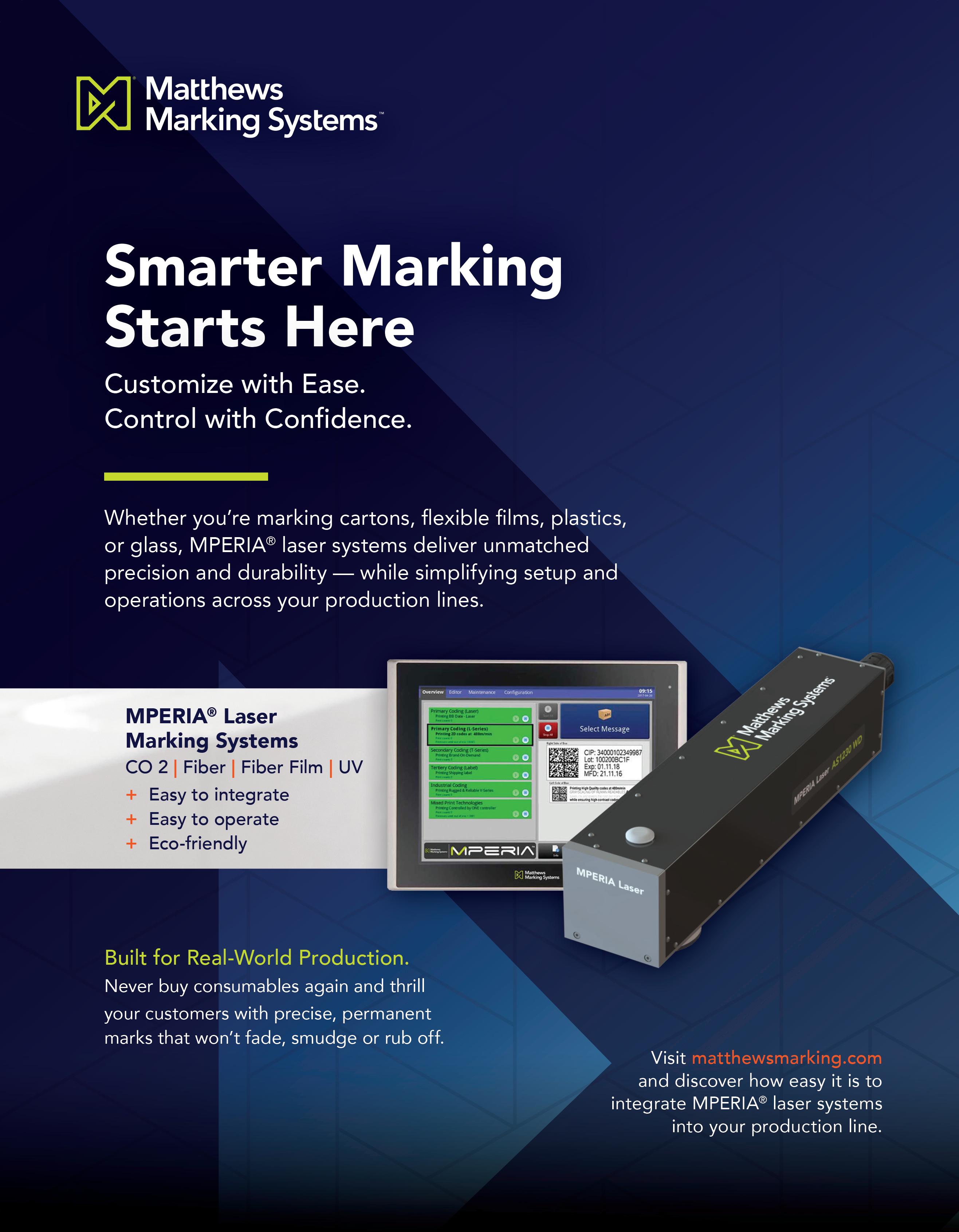

By Phil McCluskey, Contributor
For years now package design has languished as the misfit of the marketing mix. Conventional CPG wisdom has held that it’s a necessary, but not particularly impactful element when it comes to brand growth. With the advent of new design measurement capabilities, however, the industry is realizing that these assumptions are obscuring significant risk and hindering design’s massive upside potential.
The risk side of the equation took center stage late last year when a CPG redesign made national news for all the wrong reasons. Tropicana had launched a poorly received redesign and watched sales plummet 19% as a result. The story was eerily similar to the orange juice giant’s 2009 design failure—one that transformed design attitudes and processes, and effectively established an industry-wide design validation protocol that remains to this day.
Stories like Tropicana highlight the risk of poor design choices. What’s missing from the news, though, are the stories of design success—brands that have increased sales thanks to a redesign.
There are many out there. In fact, several brands were recently recognized for exactly that as part of the Designalytics’ Effectiveness Awards. Unlike traditional design competitions, the selection process for these awards is entirely data-driven—based on in-market sales performance and quantitative consumer testing of each redesign. Winning brands come from a variety of categories and see impressive year-over-year sales increases.
Seeing successes like these, CPG brands are understandably looking for the secret to creating designs that boost brand growth. While there is no “magic bullet,” there are approaches that consistently deliver results. Here are some strategies and tactics that amplify design effectiveness, along with real-world examples of the award-winning brands that have leveraged them masterfully.
When embarking on a redesign, savvy brands eschew assumptions and start by asking the right questions. “How is our design performing relative to our competitors? What are we communicating effectively or poorly? Which of our design assets is serving us well, and which can be improved?” That’s just the beginning of what brands can explore as they create an informed, detailed creative brief.
At this stage, it can be both illuminating and a bit surprising what you learn by asking questions instead of presuming you know the answers. For example, one winner of the awards, Organic Valley, believed photography of its actual farmers on the packaging was creating a connection with consumers.

Organic Valley had assumed that real photographs of its farms would lend the company authenticity. But research revealed that wasn’t the case; pleasant graphic depictions actually scored better, so the brand pivoted to follow the data.













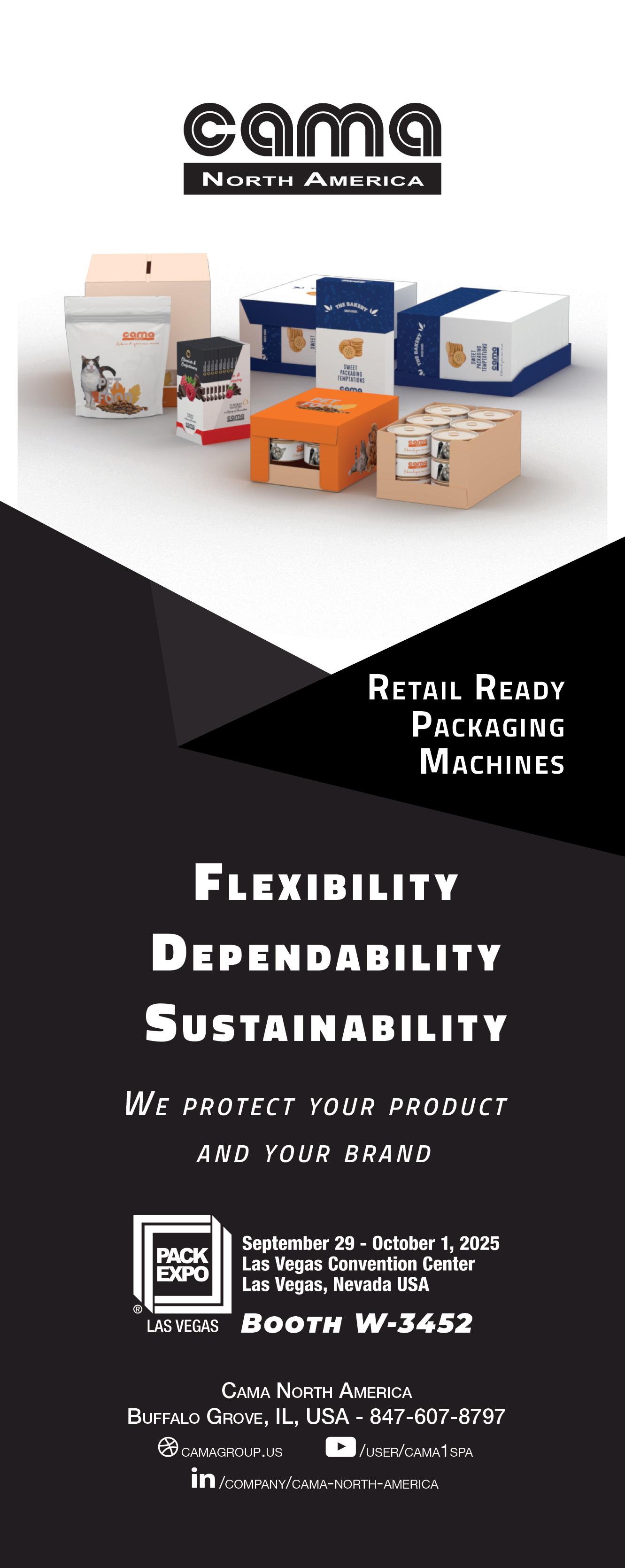
Not so, according to consumer research the brand conducted: Category buyers preferred charming illustrations of animals in an idyllic farm setting. “The drawings of the farms and animals were communicating transparently and honestly even more so than the photos were, which was a pretty fascinating realization for us,” says Josh Peters, Organic Valley’s creative director.
Early-stage testing—with the goal of learning, not necessarily “winning”—is the foundation of so many successful designs. The important thing at this stage is to use consumer feedback to improve every iteration.
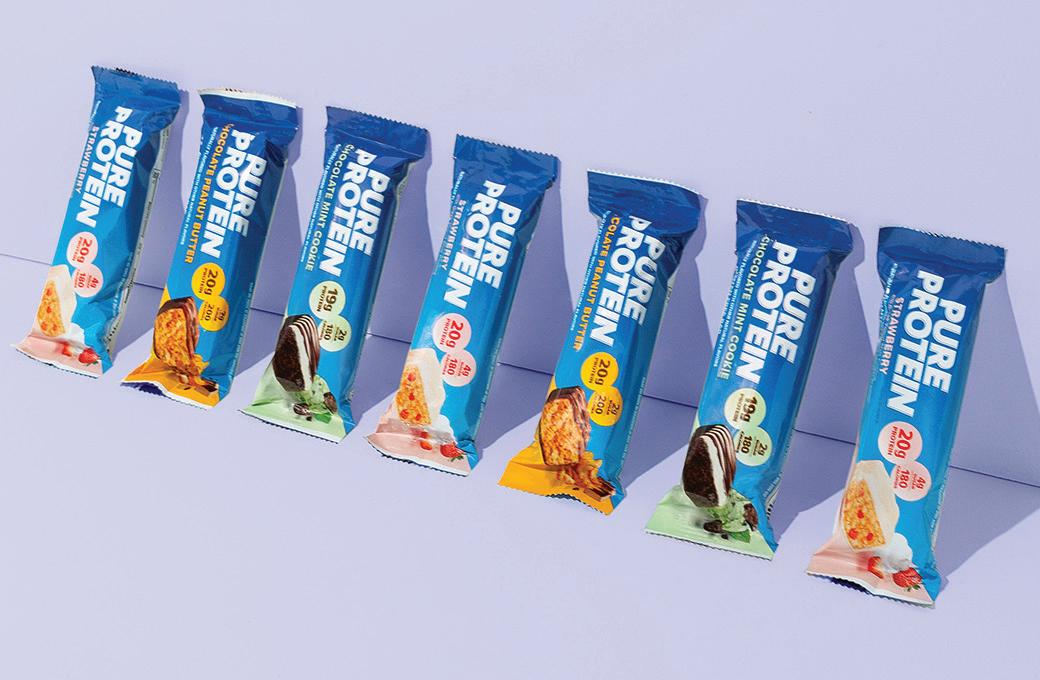
Early stage design testing of 1440 Foods’ Pure Protein brand produced early consumer feedback that helped guide future iterations.
Even if you discover a leading design concept early on, it’s very likely that it can be dramatically improved by utilizing consumer feedback. This was the case with Pure Protein’s bold redesign. The brand used early testing to see which concepts performed well with consumers, which didn’t, and how the team might refine designs to make them even better.
The early feedback was invaluable in developing the final, award-winning design. As a bonus, this consumer-fueled, iterative approach helped bolster the brand’s confidence early on. “Having data at that stage helped us feel comfortable as we were making decisions,” says Alex Fishman, creative director at 1440 Foods, which owns Pure Protein.
When it comes to the food and beverage categories, dialing up taste imagery can do wonders for your design’s performance.
Purely Elizabeth’s winning redesign featured a large image of a bowl of its granola in milk, which emphasized the texture of the product. This was a shift from a window that showed the product itself—a common convention in the category. “Our window wasn’t helping us communicate the delicious, unique taste and texture of our granola in a way that allowed consumers to imagine how they would enjoy it at home,” says Hannah Bruce, creative director at package design agency Ptarmak, who worked on the redesign.
It’s not just taste, either. People love imagery that stimulates



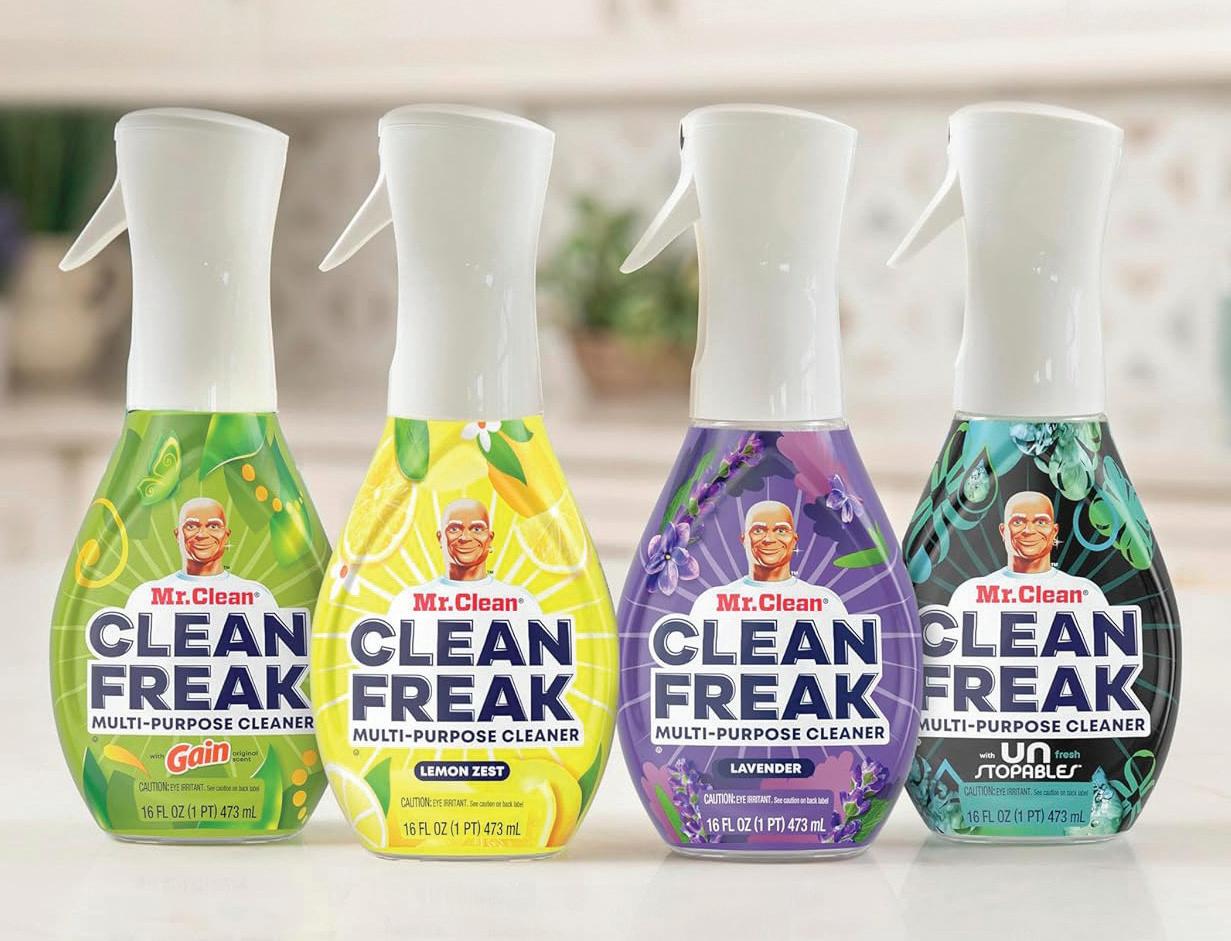
Package design for P&G’s Mr. Clean Clean Freak brand leans heavily into visual representations of the product’s aroma.
the senses in any way. Another winner, Mr. Clean Clean Freak, focused heavily on conveying the appealing aromas of the multi-purpose cleaner. “The research showed that we had an opportunity to amplify an element consumers loved: the scent,” says Jen O’Quinn, senior creative director for Home Care Brands at Procter & Gamble, the brand owner behind Mr. Clean product lines.
Saying objectively important things better contributes mightily to sales performance, with an 88% correlation to directional in-market outcomes, according to Designalytics’ data. The key word there is objectively—that is, what consumers have said is important to them, rather than what a brand thinks is important.
Unilever’s Dove Men+Care had already won a Designalytics Effectiveness Award in 2022 for its body wash, but the brand knew it could still improve—and it certainly did. According to Designalytics’
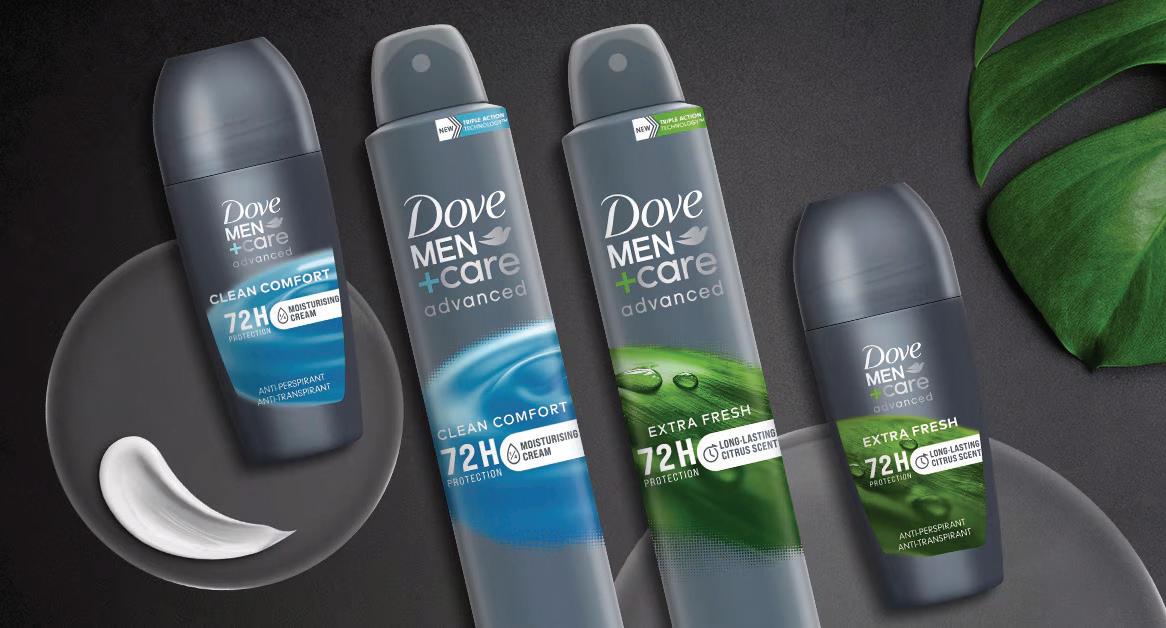
Dove Men+Care won an award for its design back in 2022, but returns with an updated, and according to consumer data, more appealing version in 2024.
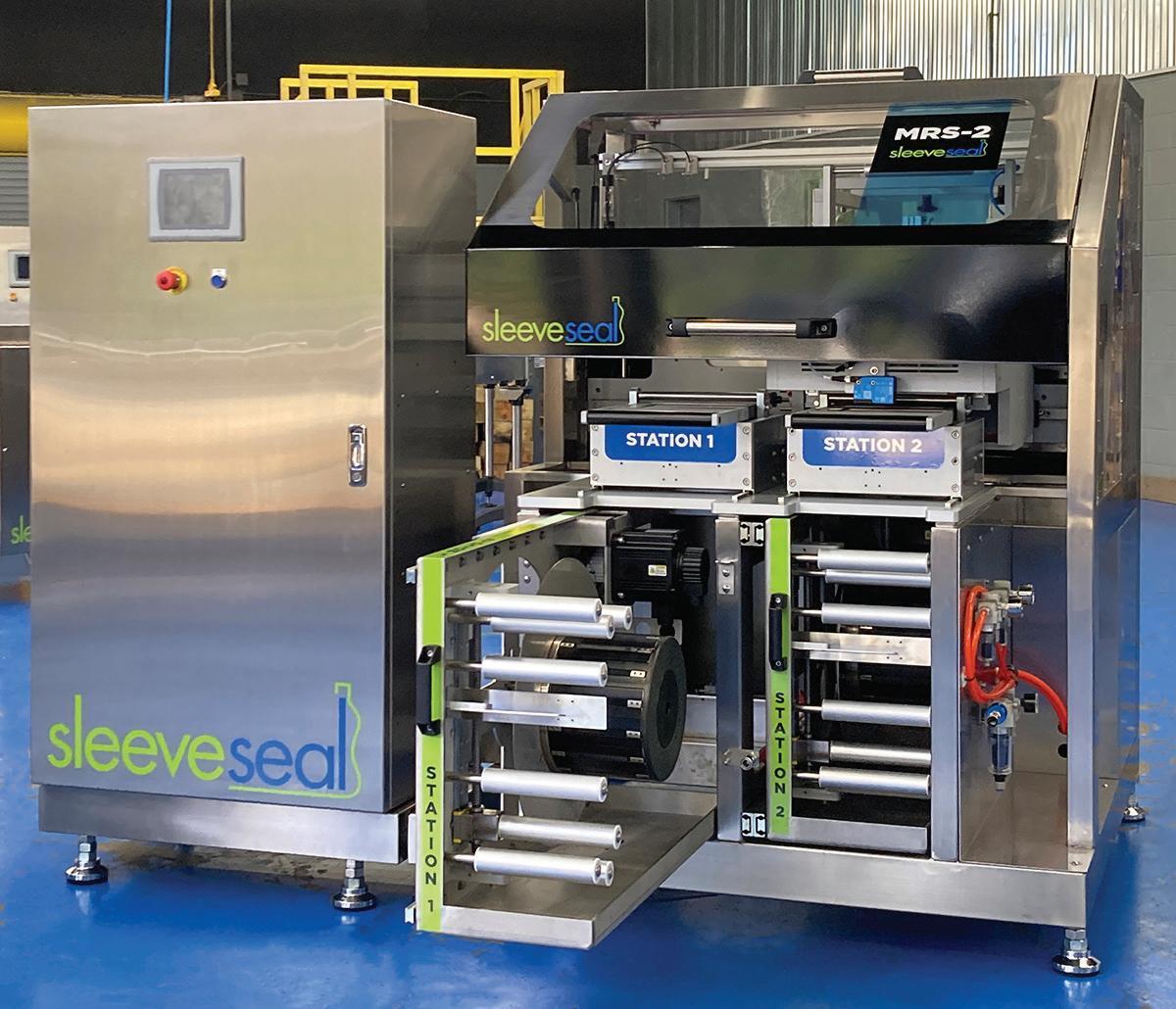

CNG barrier films keep food fresh and dogs happy.

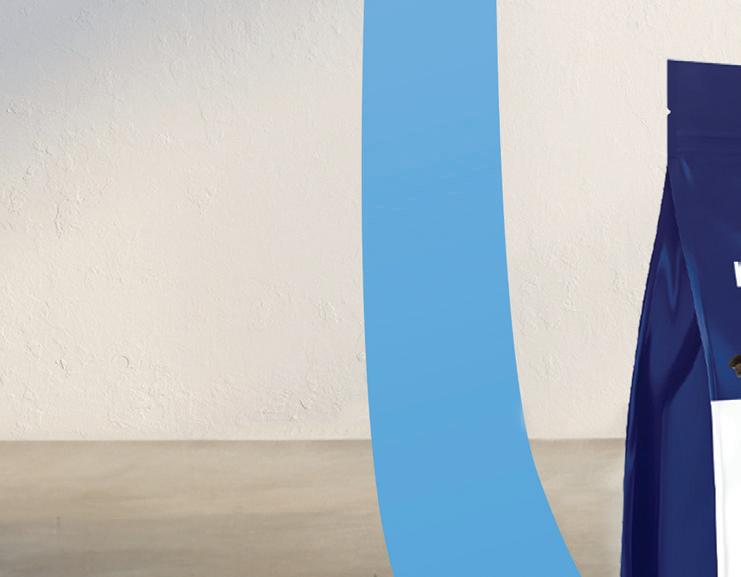



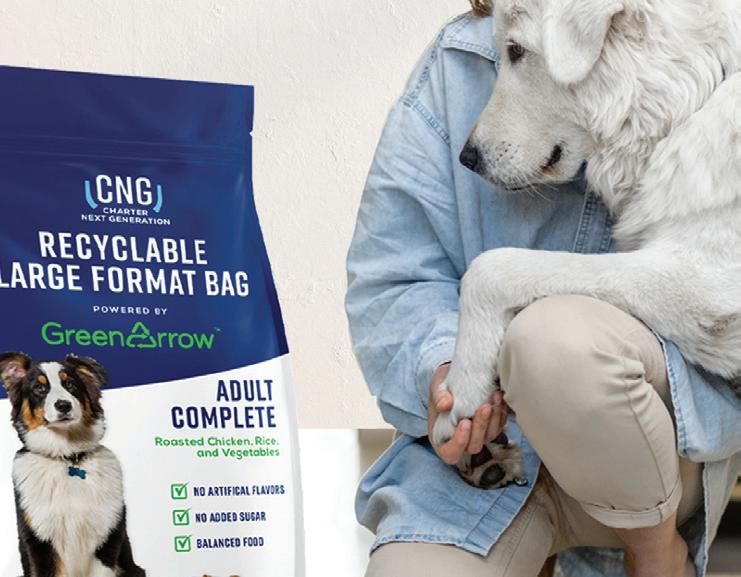






Learn more about how CNG’s material science solutions are Enhancing Lives.
Solutions Materialized. Life Enhanced. We don’t make dog food. But our specialty films keep dog food so fresh, every time you open the door you will be greeted with a face full of fur. Because we know life is built of layers — moments we smile, laugh, learn and grow. And our team works every day to make those moments last as long as possible.
CNG.ENHANCING LIVES FOR A BETTER WORLD.
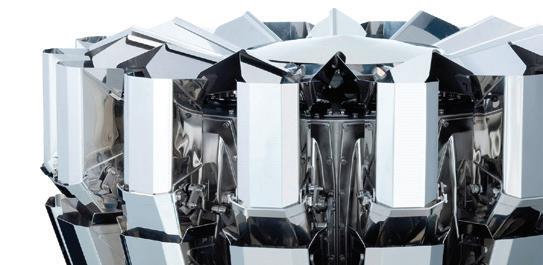

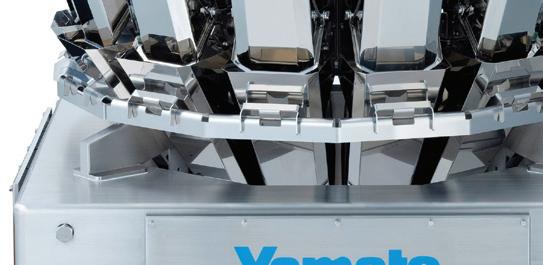




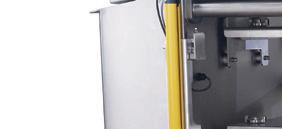





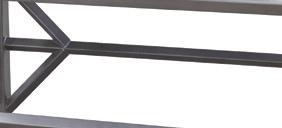






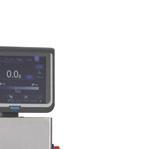




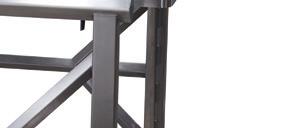


testing, the new design outperformed its award-winning predecessor in communicating all 12 of the most important purchase drivers in the category, and by an average of 45 points. With modified visual cues and enhanced claims, the brand took an already-stellar design and made it better. “We wanted consumers to know that despite the design changing, the product’s efficacy has only gotten better,” says Kei Hayashi, art director at forceMAJEURE, the agency that worked on the redesign.
Brand awareness is always important, but it’s absolutely essential for challengers and brands transitioning from primarily e-commerce to major brick-and-mortar retailers.
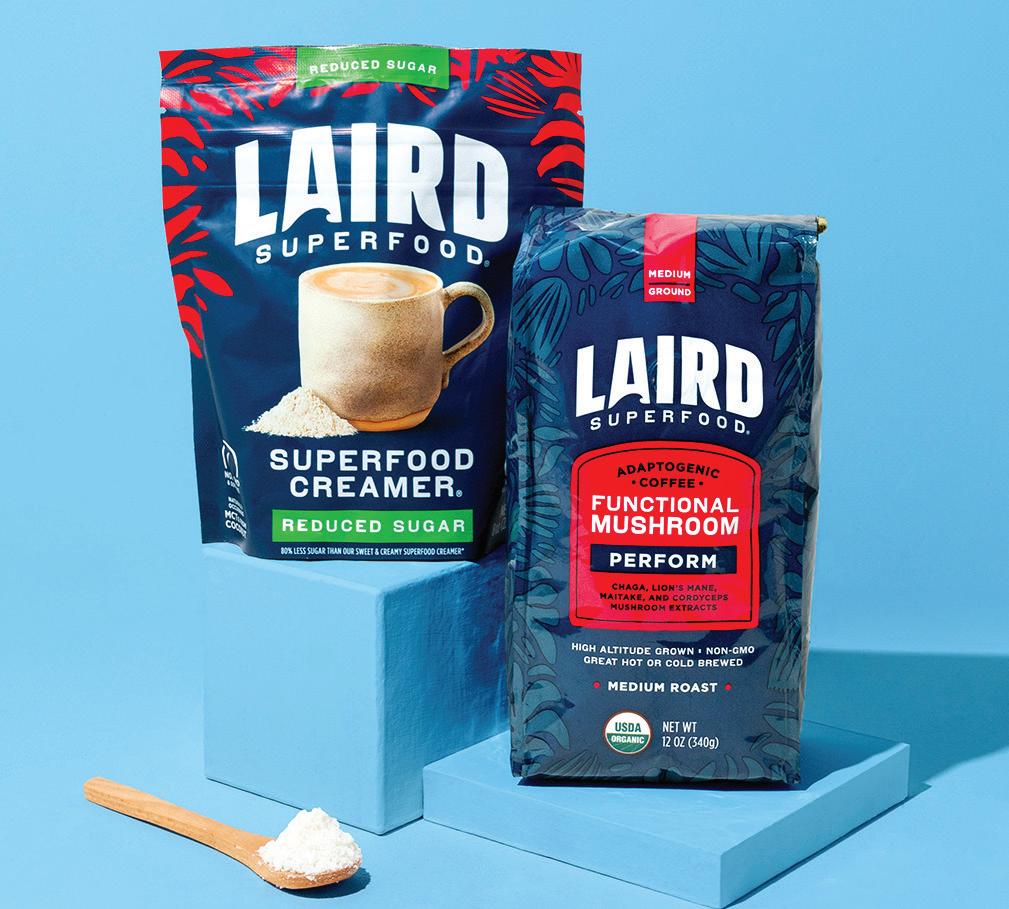
Laird Superfoods status as a challenger brand means that brand consistency across the omnichannel is key to package design.












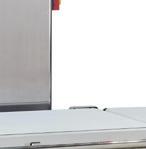






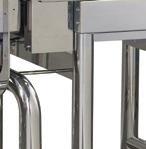






With its recent redesign, Laird Superfood was able to maintain the personality and ethos of its founder (legendary surfer Laird Hamilton) while creating a bold, attention-grabbing design that could be applied across the portfolio. Stone Strategy & Design, the brand’s agency, captured Hamilton’s confidence by enlarging the logo significantly, using consistent colors, and adding a subtle wave shape within the ‘A.’ “The boldness of the brandmark really fits the brand [and] helps build awareness,” notes Kelley Cobb, creative director at Stone.
Each of these brands, and plenty of others, have unlocked the potential in their package designs and are experiencing growth as a direct result. So which brands will be winners in 2025? We can’t wait to find out.
Designalytics says it provides the industry’s first system for maximizing brand growth through the power of package design. By leveraging its first-of-its-kind measurement methodology, the company claims it can correctly predict the directional impact of a design change on sales outcomes more than 90% of the time.

Mars’ Kind and Riverside Foods’ MadeGood are flow-wrapping snack bars in barrier paper packaging that meets Western Michigan repulpability standards, thus is curbside recyclable.
By Matt Reynolds, Chief Editor
Kind Snacks, a Mars Snacking brand, introduced a curbside recyclable paper wrapper pilot for its Dark Chocolate, Nuts, & Sea Salt variety of bars in the U.S. The news came shortly on the heels of Riverside Natural Foods also launching its MadeGood Foods snack bars in curbside recyclable paper wrappers. The two moves demonstrate that the global paper wrapper trend for confectionery and snack bars is finally making U.S. landfall with in-market, commercially available pilots and launches. Both are happening with retailer Whole Foods Market.
Kind Snacks says its pilot is a step toward achieving a recycle-ready wrapper for its entire bars category. The brand says it continues to make progress towards its goal of ensuring all packaging is designed for recyclability by 2030. Supplied by Printpack, Kind’s technical packaging partner, the pulpable paper used to flow-wrap these bars is a curbside recyclable, How2Recycle pre-qualified paper type.
“Our collaboration with Kind represents a true paradigm shift in sustainable packaging,” says Sandra Lewis, principal packaging advisor, Whole Foods Market. “Through their innovative development of this recyclable paper wrapper, they’re fundamentally reimagining how snack foods can be packaged. Working together to bring this solution to our shelves represents a significant milestone in our mission to reduce single-use plastics.”

The project builds on Kind’s first pilot of a paper-based wrapper in 2023, which was an e-commerce trial available exclusively as D2C from the company website. That initial pilot gave the brand a foundation of consumer feedback and performance insights, including valuable preliminary shelf life, transit, and machinability data. After spending the last year in R&D to integrate those learnings, Kind and its partners now bring to market what they say is an improved, fully recyclable wrapper, now available in-store. From May 1 through Oct. 1, 2025, the pilot will let Kind collect data from retailers and consumers, continuing its practice of conducting projects and pilots grounded in science and with scalability in mind, it says.

“At Kind, we’re constantly listening to our consumers, and what we hear is clear—they want products that not only deliver exceptional quality but also align with their values,” says Osher Hoberman, CMO of Kind North America. “This new paper wrapper pilot is a direct result of that feedback. We’re proud to continue to lead the industry with bold, forward-thinking and innovative solutions, not just for our packaging, but across our entire product portfolio.”
“We chose paper for these pilots because we believe paper is the best solution to drive circularity right now as there is already a market and infrastructure for paper recycling,” Kerri Clark, VP of packaging R&D at Kind told Packaging World. “We hope to gather insights on the consumer experience and technical research, and from there, we’ll take our learnings and explore what the best paper type is to scale this pilot. At select Whole Foods where the product is sold, we’re placing a sticker on the bars where consumers are invited to take a survey about the new paper wrapper. Our insights team is also conducting intercept testing to compare results from the previous paper wrapper in 2023.”
This latest paper film is barrier coated, but still meets the Western Michigan University fiber recovery threshold and repulpability test standards, which is becoming a de facto standard and certification in the




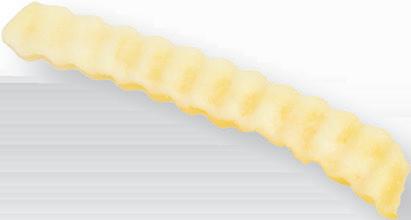










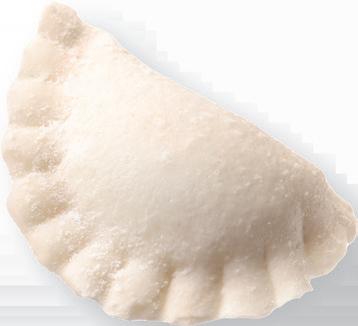


U.S. The company withheld the barrier specifics but commented that there is no metalized foil or aluminum in the wrapper.
The existing, legacy package material is printed polypropylene with a 12- to 15-month shelf life. It’s shorter for the paper wrapper.
“Currently the shelf life is six months for this paper wrapper, and we’re looking forward to gain insights from this test and learn approach while the bars on shelf at Whole Foods Market,” Clark says. “Durability was also key when creating this paper wrapper, and something we were not going to compromise on when considering shelf life. We had to make sure we chose a paper wrapper that had a high oxygen and moisture barrier.”
Kind worked with packaging designer and global branding experience agency SGK to design the packaging’s aesthetic. The flexographically printed paper film material runs on existing flow-wrapping equipment. Minor adjustments were made to the machinery to mitigate tearing when forming within the equipment.
To communicate to consumers that the wrapper is now curbside recyclable, some design changes were rolled out. On the front of pack, there is text that states “new recyclable paper wrapper.” On the back, it states “Check local programs for recyclability. Learn more about our paper wrapper test at kindsnacks.com/paper-wrapper.”
collaboration resulted in a package with no compromise on run speeds or graphic quality.
To learn more about consumers’ experience with the new package format, Riverside and Amcor partnered on an independent home usage study. Consumers used the product as they normally would over the course of a week, then evaluated the package performance. The study found that after interacting with the paper wrapper, 79% of the consumers agreed the package was ‘somewhat better’ or ‘much better’ than the usual granola bar wrapper. Also, 79% of consumers agreed they would choose this product over another brand that doesn’t have recyclable packaging.

Notably, the Kind bars will be sold as singles in the paper wrapper at Whole Foods; multipack cartons in this format aren’t available in the pilot. Presumably, the grab-and-go single-bar format is likely to quickly be consumed after purchase, mitigating the shorter shelf life. The graband-go retail-ready cartons that display the single bars carry the same aesthetic and verbiage as the paper wrapper single bar stating, “new recyclable paper wrapper bar” and is otherwise the same as Kind’s traditional cartons that carry the legacy/existing packaging, Clark says.
Riverside Natural Foods, a certified organic snack producer, announced a few weeks before Kind that it would launch its MadeGood Trail Mix bars in paper-based packaging from Amcor. Riverside Natural Foods and Amcor say that the launch was a category-first solution that delivers curbside recyclability in the paper stream without compromise on package performance.
“At Riverside Natural Foods, we are continuously letting our curiosity guide us and ask ourselves—how can we take the next best step forward toward a more sustainable future? For us, this was innovating a category-first paper package for our consumers to enjoy while minimizing the impact on the planet. We are so proud to achieve this with our partners at Amcor,” says Salma Fotovat, co-founder and sourcing, procurement, and impact director at Riverside.
The new recyclable wrapper format is Amcor’s AmFiber, a paperbased lamination made with FSC-certified (C206475) fiber. Compared to traditional bar wrap, the package reduces the amount of virgin plastic by 77%, companies say. It also has been certified by Western Michigan University to meet repulpability standards necessary for the recycling process, making it curbside recyclable. Each snack bar package consists of more 80% fiber, the threshold to be certified by WMU.
Riverside worked closely with Amcor’s R&D to ensure the new package met the needs of both the brand and the consumer. They say this
These two U.S. applications are just the latest in a spate of confectionery and snack shifts to paper- or fiber-based packaging. British brand Walkers Chocolates recently switched to paper with its own brand Turkish Delight using a film from EvoPak, made with hydrophilic polymer hydropol by Aquapak. And Finnish brand owner Orkla Snacks began piloting a new paper wrapper from UPM Specialty Papers called Asendo Pro, replacing traditional polypropylene plastic wrappers, for its Panda Milk Chocolate brand. Koehler Paper saw confectioners Loacker and nucao launch in its NexPlus Seal Pure MOB and NexPlus Advanced 75-g flexible packaging paper, respectively. All of these recent moves follow a host of chocolate and confectionery swaps away from plastic into paper-based wrappers that happened over the last year to 18 months, including by Nestlé KitKat and Mars in Australia, and Mars candy bars in the U.K.
Some observers of this trend worry that barrier properties supported by coatings/additives, or usually, some percentage of PE or metalized film/aluminum, mean that the package isn’t 100% paper, thus contaminating streams, and worry that the form factor or size means that the wrapper won’t be collected. We asked Jeff Snyder at Rumpke Waste & Recycling to weigh in on those concerns.
“All paper materials that come through the MRF are separated by ballistic/elliptical, screens or optics. If it is paper, we will get it where it needs to go. The size of the package concerns me a little bit at some MRFs across the country. The bigger question is how the paper mills feel about it being 80%, meaning they are buying fiber packaging where a portion of it will be lost in the process and not fully recycled. The papermaking process will take any non-fiber out through the pulping and stock cleaning process. I usually tell folks if you can tear it [like paper], then put it in the [recycling] bin,” Snyder says.
Another MRF professional that wished not to be named commented, “Our paper mills are happy to accept the paper wrappers that are 80% fiber, like the ones described here. The bigger and heavier the wrapper, the more likelihood it ends up in the correct place. However, I’m optimistic that these will be mostly sorted with paper.” PW

Pressurize for stability. Reduce oxygen for greater shelf-life.
• Extreme precision
• Field-proven performance
• Experienced, worldwide service team
NITRODOSE® NITRODOSE®G3 Servodoser™

The latest dishwasher pod formulation from Dropps, Ultrawash Plus uses its paperboard packaging to communicate product efficacy by depicting a Pyrex-style glass baking dish, often considered to be the toughest to clean with baked-on food. The company says Ultrawash Plus is the first-to-market USDA-certified bio-based multi-chamber dishwasher detergent.

Laundry and dish pod trailblazer Dropps doesn’t need to get up on a soap box about sustainable packaging. Its new omnichannel carton range, rolled out last year, sends that message on its own, both via e-comm channels and in the retail detergent aisle.
By Matt Reynolds, Chief Editor
There was a not-so-distant moment in time when acquiring customers online was an affordable, profitable means of growth for many CPGs. Dropps was an early direct-to-consumer (D2C) player that took advantage of that then-nascent online shopping golden age. The challenger brand pioneered the laundry and dishwasher pod movement as early as 2006 and paved the way in consumer acceptance for big players like Tide and Persil. Interestingly, it even moved away from the retail aisle completely to focus on more efficient growth through D2C only.
The laundry pod movement was inherently a sustainability play since it solved the fundamental problem of shipping extra water through the supply chain, replacing heavy bottles mostly containing water with mono-dosed pods of concentrated cleaner. These pods also offer convenience since they’re already dosed, so no pouring or measuring. This alone has made pods the format of choice for many consumers. With a one-two punch of a sustainability story and mono-dosed convenience,
Dropps acquired a subscriber base of about 300,000 hyper-loyal repeat customers.
While that D2C business bloomed, the brand to continue to invest in product innovation. The company says it has achieved parity in product efficacy with conventional powder and liquid detergent brands. Parity in efficacy is huge for a sustainability-minded brand that had all but eliminated shipping excess water, with a USDA-certified bio-based product where 58% to 81% of the formula is derived from renewable, biological sources.
“During that time, our loyal subscriber base gave us some insights that let us approach Amazon and take from that channel even more capture,” says Alastair Dorward, CEO, Dropps. “We found ourselves becoming the fastest growing dish and laundry pod player in the category and actually becoming the top ranked sustainable brand in dish detergent, and equally strong also on the laundry side.”
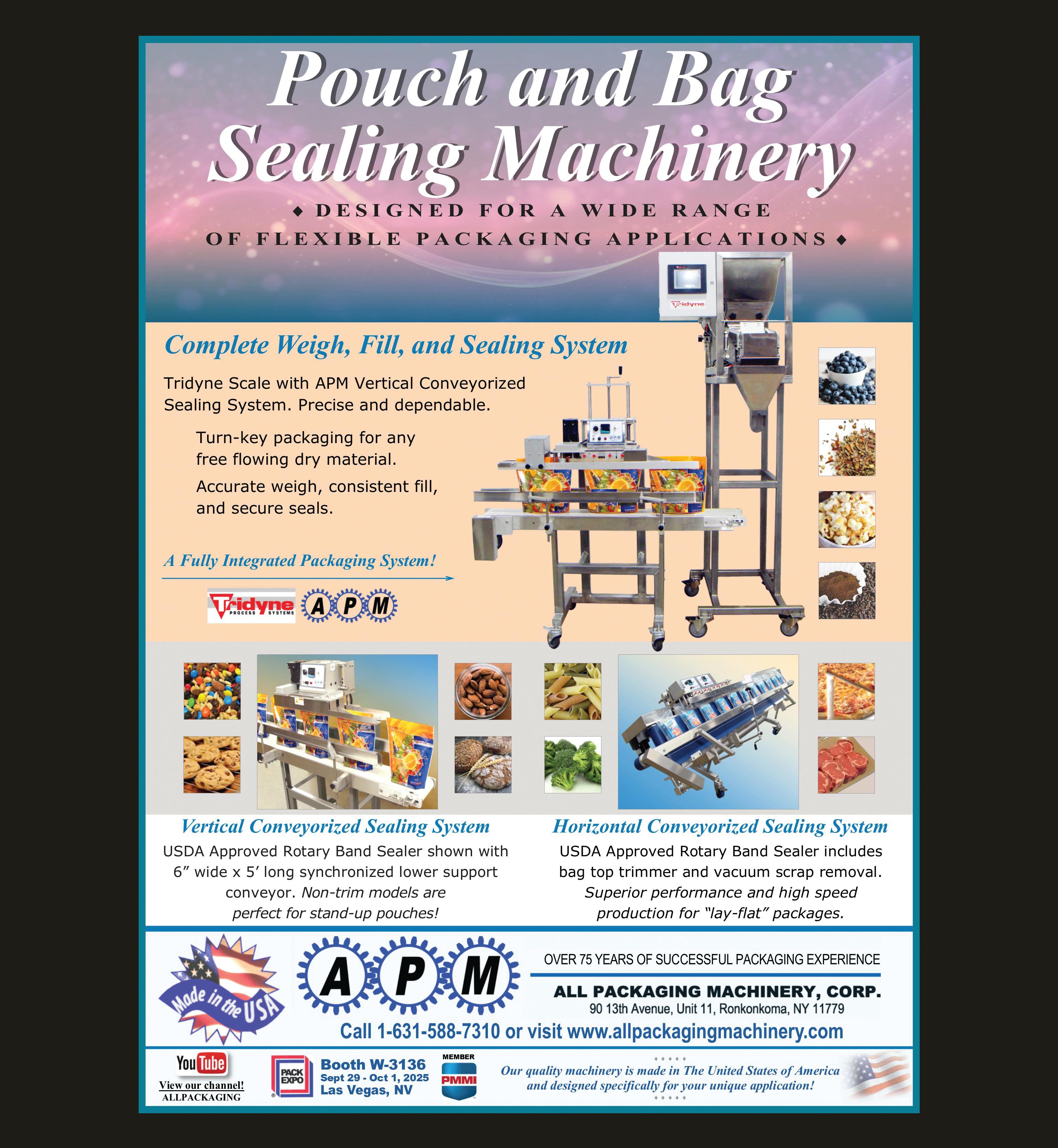
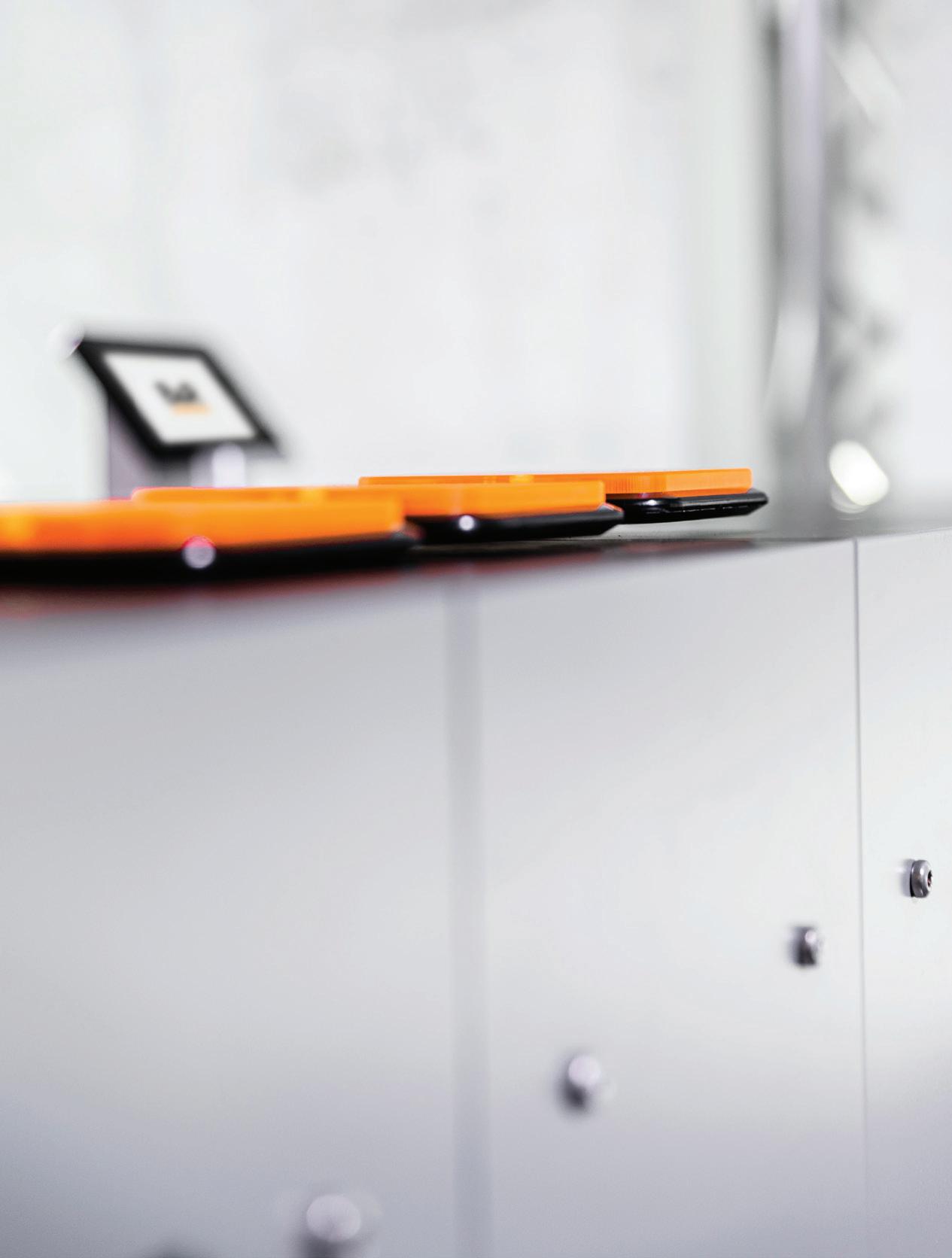


The e-comm and D2C packaging format tends to be higher in product count, from 64-ct to as high as 140-ct. Optimizing the cubic dimension and eliminating dead space, without losing the characteristic trapezoidal appearance that also appears in retail, were key goals.
With a sustainable product, packaging sustainability quickly swam into view. Dropps’ packaging evolved to match its sustainable brand ethos, while also optimizing for the rough and tumble D2C and e-commerce channel. Balancing those two factors isn’t always easy, but the product itself—coated in polyvinyl alcohol film— doesn’t require much by way of barrier and is surprisingly robust. In 2016, the company moved out of its initial multilayer flexible pouch format and into what consumers think of as more sustainable, curbside recyclable, all-corrugated cases that could be attractively two-side-printed. This sturdy corrugated case could be shipped SIOC (ships in own container) on Dropps.com.
The D2C gold rush is over—the era of cheap and easy online customer acquisition has ended. That’s why Dorward, after joining Dropps about two years ago, sought to harness early momentum to find opportunities for growth. From a D2C and subscription-based identity, in 2024 Dropps set out to challenge the retail aisle in a new omnichannel approach.
“When you look at what the market rewards, it used to be the direct-to-consumer pure play business would be highly valued, highly rewarded, and highly desirable. That’s simply not the case these days,” he says. “We listened to our customers, and while we have a loyal base, something like 80% of them prefer to buy detergent in their favorite grocery store or retailer.”
ACOPOS 6D allows you to move products freely through an open manufacturing space – unbound by the limits of one-dimensional production flow. Magnetic levitation provides six degrees of freedom for unprecedented processing density on a fraction of the floorspace. br-automation.com
But CPG brands aren’t welcomed onto retail shelves simply because they have a product to sell. The detergent aisle is particularly competitive. Brands need to persuade a retailer to cough up shelf space by simultaneously delivering several unique elements. Dropps had at least two aces up its sleeve, both in familiarity among consumers on Amazon, and in environmental bona fides. The Amazon rankings vary week by week, but Dropps’ frequent position as “the number one green player in dish and laundry on Amazon” got retailers’ attention.
“Our success and ranking on Amazon gave us permission to come
Get way ahead with adaptive automation

Levitating planar movers
Scalable payload kg
Individual product transport
6D motion
Velocities up to 2 m/s
Free system layout

Elevate your automation game with XPlanar. Developed in-house by Beckhoff, this mechatronic system makes your production literally fly with magnetically levitating movers and base tiles that you can arrange to fit your unique applications – assembly and packaging, pharma and food, entertainment and beyond.
So, what will you do with XPlanar?
Processing with up to 6 degrees of freedom
Transport and processing in one system
Wear-free, hygienic and easy to clean
Multi-mover control enables parallel and individual product handling
Fully integrated into the powerful and standardized PC-based Beckhoff control system
(TwinCAT, PLC IEC 61131, Motion, Measurement, Machine Learning, Vision, Communication, HMI)
to the table not as a naive startup, but actually as a proven brand,” Dorward says. “Also, retailers are constantly looking to improve their green scorecard. And while many aisles in many categories have seen major steps forward in sustainability, there’s a lot of plastic in the laundry aisle. Consumer focus on zero plastic is at odds with what is currently on offer on the shelf. Our commitment to a curbside recyclable paperboard structure, to bring that sustainable element to the retailer, has been important.”
A third feather Dropps’ cap, detergents tend to be a low-margin category. Retailers are forced to bring loss leaders into their shelf mix to cover all the bases for consumers. But profitability can be balanced by a portfolio that includes higher margin products that bring sustainability, innovation, and proven online success, thus a fairer margin to a retailer.
“Being margin-accretive, sustainable, and a leading online Amazon brand is the set of facts we bring to the table in any retailer conversation, and that’s why we’re seeing a lot of exciting reception to what we’re doing here.”
Some product packaging easily jumps from retail shelves to ecomm. Simply overboxing a product optimized for retail shelves in corrugated often does the trick, though the extra material can give some consumers pause. But going the other direction, from e-comm-only to retail, is more difficult. Dropps’ packaging had evolved over time to be optimized for e-comm—SIOC specifically. Consumer’s zero moment of
truth for Dropps had always been on its website or on Amazon. Both are platforms where product info can be simply related in easy-to-read text, with bright and attractive product images. In e-comm, packaging serves as a sustainable, robust, and sometimes playful delivery mechanism. But the supporting story, ethos, and market positioning are all online, and meant to make that sale long before a consumer interacts with the packaging. Of course, this information can also be printed on the pack, or in an insert, but the consumer would have already pulled the trigger on the purchase by the time they received that material. A consumer might first interact with a product’s packaging on their doorstep. Also, with a subscription model, consumers only had one zero moment of truth over the course of more time and many transactions—they sign up for the long haul, sometimes in a “set it and forget it” model.
The retail aisle is a very different space. It’s bright and stimulating, with packaging competing for consumers’ attention in ways that brown kraft corrugated, for all its other virtues, cannot.
There’s also a spec to hit when it comes to form factor. Shelves are static, and retailers want them to appear visually full. The brands want to fill that space too—packaging there can’t waste vertical billboard space or give the appearance of being smaller, especially in the era of shrinkflation. Even if the added packaging isn’t performing its primary duty of protecting the product itself, it’s performing a critical marketing function.
After all, what is it that consumers tend to be doing in a retail environment? That’s right, they’re shopping, even if they have a favorite brand in




Dropps’ legacy corrugated e-comm and D2C packaging served its purpose, but it wasn’t without drawbacks. The redesign into paperboard gave packaging designers a chance to directly address them. Print legibility on kraft corrugated has always been an issue.
Between 2016 and 2022, for instance, Dropps sold a two-pack of geometrically identical cases— designed as two small boxes of the same product—making it easier to store. It arrived on doorsteps as a single, six-sided corrugated case, even though it consisted of two constituent cases. The two cases folded out from one another, held together by a connective piece of printed corrugated that could be separated from the connector by perforation. While it was a nifty idea and unboxing experience, the two mirrored cases were too alike



With its former pack design, a single kraft corrugated SIOC shipper unfolded to reveal two smaller cases, which folded out and could be removed from the connective outer boxing. The format had a lot of advantages in fulfillment, supply chain, porch appeal, and unboxing, but once in the home, some consumers found it difficult to differentiate between the dish and laundry detergent packs.
across product lines. The problem was that all products within Dropps’ catalog used the same packaging format and the kraft boxes all looked the same in the customer’s storage— it was hard to distinguish between products. While kraft corrugated inherently communicated sustainability, it’s harder to print onto it in detail, or in ways that would easily differentiate laundry from dish detergent. PW
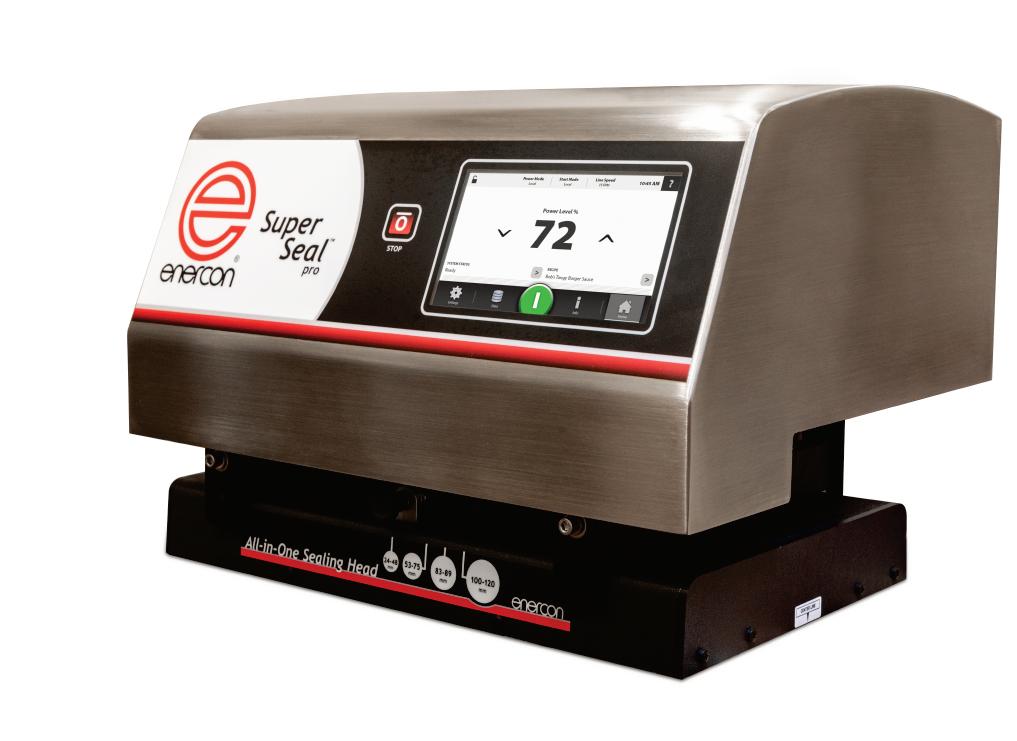


mind. They’re shopping in much the same way they are when they’re browsing D2C products’ websites. That means messaging needs to be clear and sharp, legible, and complete. Again, it’s hard for trusty brown kraft corrugated, which is harder to print while maintaining its natural appearance, to compete in that space.





Dropps landed on a brightly colored, sharply printed, trapezoid-shaped paperboard carton to meet the needs of the retail channel. The company believes that uniquely shaped paperboard disrupts an aisle lled with plastic tubs and bottles by appealing to consumer perceptions on sustainability and plastic. As already mentioned, the mono-dose pod format was a sustainability breakthrough because they’re concentrated, thus avoid shipping water.





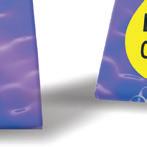

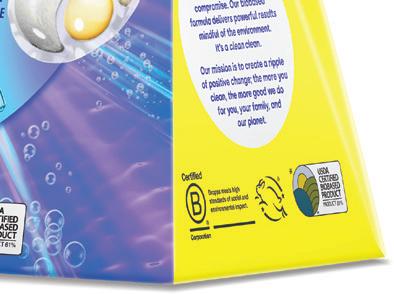
The retail carton format lls its shelf space as a billboard and maintains the trapezoid shape when viewed head on, as consumers shop the detergent aisle. Viewed at an angle, the folded in sides and peaked closure designs are in view, both departures from the e-comm format.
“Because of that, it has been broadly adopted by many brands. But there’s a huge opportunity missed when you then take that more sustainable concentrated pod and then package it in a big plastic tub with empty space. The category went from big plastic jugs to big plastic tubs, and we think that completely missed the point of the opportunity.”
The pack is designed to stand as tall as the PET or HDPE packaging next to it on the shelf and fully ll the vertical space. Viewed from the front, or from a consumer’s point of view in the aisle, the shape is trapezoidal, already standing out among the tubs and bottles nearby. Viewed from the side, the closure on the top narrows to a point in a 2D triangle—the pack is a prism shape when viewed in three dimensions. The wide base at the bottom of this prism shape contains the laundry and dish pods, while the narrowing top and closure continue the billboard appearance to the top of the shelf.

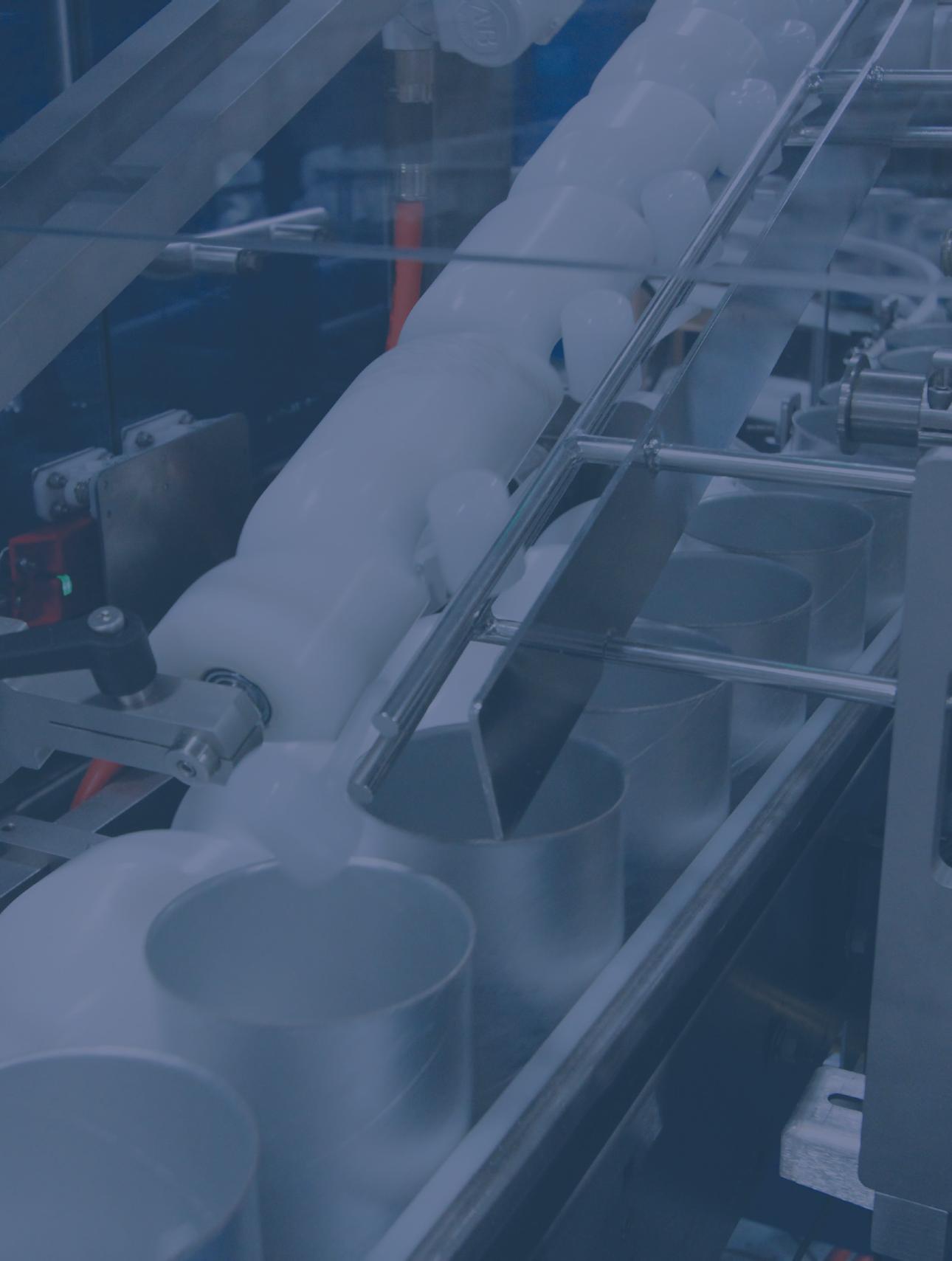



From standard timing screw drive units to custom integrated equipment and everything in between, we engineer solutions to directly tackle slow processes on your production line through automated container manipulation that creates better equipment efficiencies.











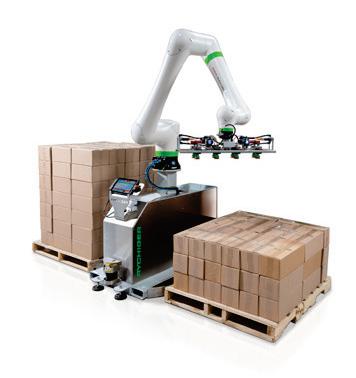
When it comes to automated packaging, we’ve got it down to a science. With over 125 years of combined expertise, Rychiger delivers cutting-edge solutions for primary, secondary, and tertiary packaging.
Food & beverage? We’ve got you covered. Petfood? No problem. Personal care? Absolutely. If it needs to be packed with precision and speed, we make it happen. Because at Rychiger, performance isn’t just a promise—it’s what we do best.
Leader in packaging automation solutions

Learn how to pronounce our name

“We are competing with some large competitors who have spent a lot of time in the category,” Dorward says. “We want our consumer messaging to be prominent using bold color palettes and use imagery that speaks to efficacy. We’re out there to communicate this product really works and is powerful, so we’re not going to put a leaf or a picture of the planet on the front of the pack.” That the package is in paperboard at all communicates recyclability.
Prior to filling with product, the 2D auto bottom (or auto lock bottom) cartons pop into shape with pre-glued flaps that overlap and interlock. After filling, the carton is pinched at the top, folded inward into itself. In this structure, the 3D hollow chamber at the base narrows to a nearly 2D flat point, a narrow triangle from the side view, at the closure. The nearly 2D closure is formed by folding the front flap over the back flap, and is sealed with a recycling-friendly adhesive. A tear strip closure allows for easy opening.

Legacy packaging from Dropps’ e-comm- and D2C-only days between 2016 and 2024 was well-suited for its channel, but the form factor would not work on a retail shelf.

Standard-Knapp now offers complete secondary packaging line integration, from consultation to installation to commissioning, with support for life.
The unique format is reminiscent of a gabletop juice carton top, only narrower. A brown school lunch bag, folded closed at the top, also comes to mind. More importantly, the design serves two functional purposes. When closed and folded or pinched in, empty space within is minimized, so the front and back walls “accordion together” over the pods, acting as bracing that holds the product firmly. This prevents them from jostling freely in unnecessarily empty space. But in the home, once a consumer opens the folded tear strip and the gabled paperboard carton unfolds like a bellows folder, opening to a wide mouth through which pods are easily, comfortably retrieved.
“It needed to expand at the closure so consumers can easily reach their hands into the pack,” says Sydney Waldron, senior director of Brand Marketing and Innovation. “In our packaging development, we tested various similar formats with consumers. One of the things that stood out was that the experience of scraping your hand, when reaching into a packaging that’s too tight, is really uncomfortable. So we challenged our packaging designers to create something with a tight form factor at top, but expands after opening to avoid a bad consumer experience.”
The form factor of the product itself also impacted packaging decision. Dropps pods are 9 g, less than half the size of the 25-g pods offered by big brands.
“When you have smaller pods, that means more compact packaging. But we also know that to be competitive on shelf against somebody like a Tide, we can’t have a smaller box because the U.S. consumer has a really hard time understanding that like smaller is bigger, in some cases. U.S. consumers assume bigger is better,” Waldron adds. “So from a shelf presence perspective, we have to present in a size that’s competitive with our category.”
The prismoid shape for the retail packs allows for tight and compact secondary packaging, since the packs dovetail neatly, nesting as a chevron shape into a shipping case, usually a six-ct per corrugated mastercase since each case fills one shelf. It’s an efficient pack out that provides


good rigidity through the supply chain. For standard 40-ct retail packs, 72 cases construct a pallet.
Consistent brand appearance extends to D2C
Dropps could have kept its existing D2C packaging and simply rolled out its new retail packaging as another format, optimized for the store aisle. But the omnichannel is more complex than that.
“It’s also important to present a consistent look as a brand,” Dorward says. “We’re actually going to be interested to see, now that we have visibility as a brand on a retail shelf, how that helps, from a halo-effect point of view, our direct-to-consumer. It’s very important to have consistency between a product image on a digital shelf and making it exactly what you’d see as you walk down the aisle, or on an endcap in a grocery story.”
So, the trapezoidal shape of the retail shelf pack was extended to the D2C channel. And since most consumers tended to order more than one pack at a time, it turned out that paperboard primary packaging could do the trick for both Amazon and Dropps’ internal D2C channels.
The new D2C pack also consists of brightly colored paperboard with sharply printed, easily legible text, offset printed in five colors. But the D2C trapezoid has a flat top rather than a gable style top since compactness and space efficiency are the main goals in D2C; filling vertical space with a billboard isn’t necessary. The medium sizes, usually around 64-ct cartons, use is a 24-pt paperboard cardstock. The largest sizes, 120- and 140-ct, use 28-pt cardstock.
“We’ve really maxed out this box to fit as many pods as possible to optimize the cubic dimension, knowing that these are typically shipping in multiples,” says Waldron. “And dead space in an e-commerce box just doesn’t make any sense.”
Unlike the six-to-case retail channel secondary packaging, Dropps does a larger case pack to Amazon, either 10 or 16 cartons per case depending on the carton’s product count, which vary from 32- to 160-ct cartons. These go to Amazon fulfillment centers in mixed pallets.
Orders coming directly into Dropps are packed out individually in right-sized corrugated shippers due to the high variability and comparatively small order size per consumer. Still, D2C consumers order two or more products. Beyond the common practice of crosscategory ordering of laundry and dish detergents, and perhaps even different SKUs of each, a free shipping minimum threshold helps ensure consumers order more than one at a time when ordering D2C.
Concludes Dorward of the very similar packaging look that is able to serve different channels: “It’s a conscious decision we’re making. With D2C, we want to make sure it’s very compact, because these are shipping across the country. You want to get as many pods in the box as possible, so we maximize space with our D2C packaging. The overall trapezoid shape, and overall messaging on the bright billboard, is very similar between our new D2C and the new retail packaging. But clearly there has to be a differentiation between channels and their slightly different goals.” PW
Editor’s note: PW asked Dropps about equipment and materials suppliers, as well as barrier properties/WVTR on the cardstock, but that information was not made available.
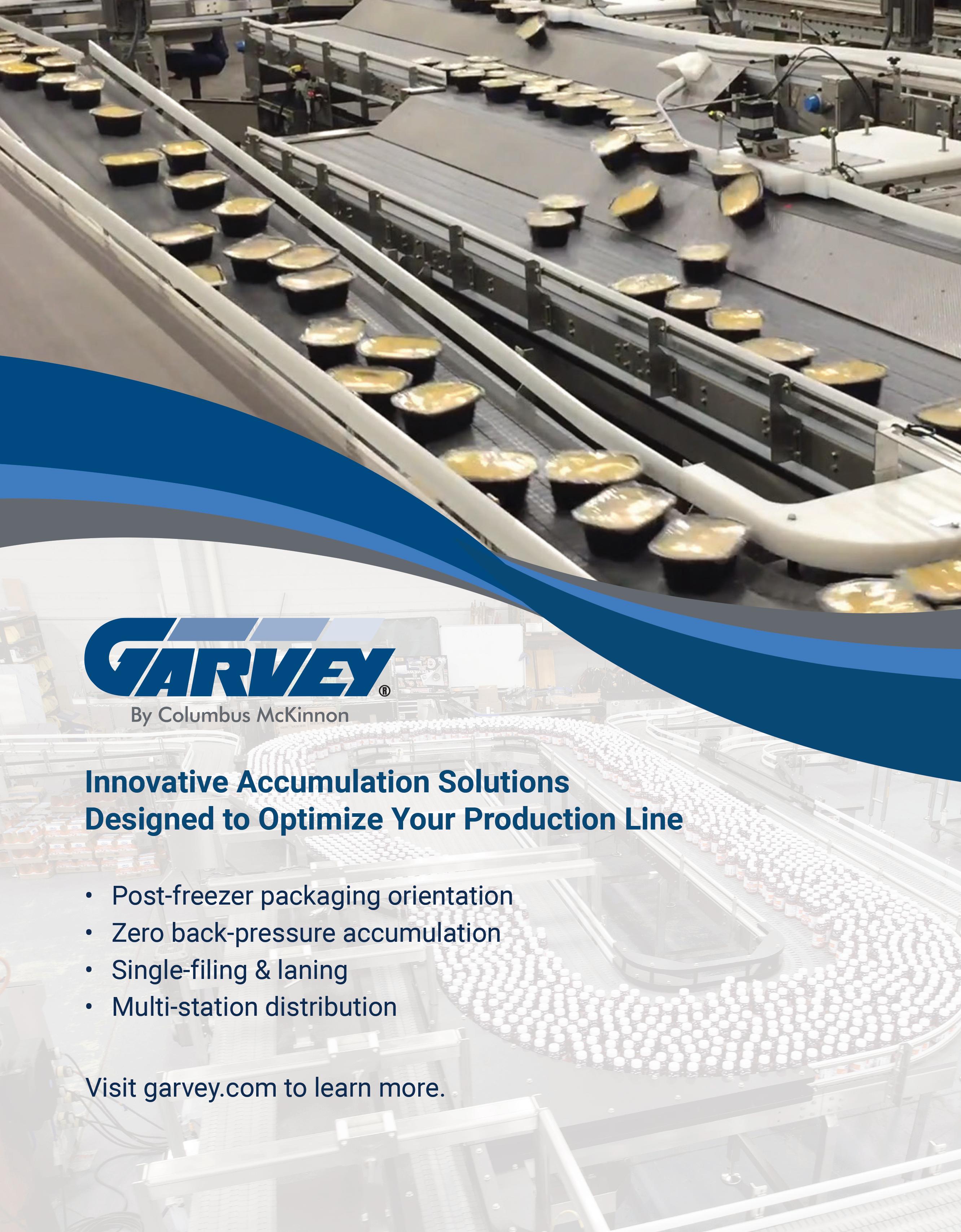
Ten delta-style robots use unique, easily changed end-of-arm tooling to stack cookies into slugs and then place slugs into plastic trays at 700 cookies/min with a 99% performance guarantee.
By Pat Reynolds, Contributor
A family-owned contract manufacturer launched in 2007 and based in Caldwell, Idaho, ZoRoCo Packaging is all about making and packaging food—cookies, crackers, snacks, granola, blended baking mixes, and a variety of frozen foods. “Shaping the future of contract food manufacturing” is how they define their business, which is executed in three facilities: frozen, gluten-free, and “free-from.”
“We’re a little different in that we don’t really do anything under our own brand,” says company president Cordy Rost. “We manufacture for brands out there that bring their IP to us.”
A good example of the firm’s client base is New York-based Partake Foods. It was created in 2016 by Denise Woodard, who previously held a high-ranking job at Coca-Cola. But when her daughter was diagnosed with multiple food allergies, she created a company that exists to offer a selection of delicious foods that are certified gluten free, non-GMO, vegan, and free of the top nine allergens. It was ZoRoCo’s expertise in gluten- and allergen-free food production that drew Woodard and Rost together.
“Partake was an integral part of bringing this new line to life,” says Rost. “We created a win/win for both companies.”
The new line he refers to, located in ZoRoCo’s free-from plant, is a highly automated production and packaging line used to make and package either squareshaped crackers or round cookies. Ahead of the packaging equipment are two key processing machines, both from Reading Bakery. One is a rotary molder that produces crackers and wafers, and the other is a wire-cut system that slices dough as it

is extruded through a die plate, thus creating uniformly sized cookies. Regardless of whether crackers or cookies are in production, the same 1.5-m wide linear steel band oven from Reading Bakery takes care of baking.
Baked items exit the oven and proceed through cooling and primary packaging on a sophisticated robotic system supplied by Royal Houdijk The ambient cooling conveyor, which is 1.2 m wide and stretches some 150 ft, ends with a section that takes the product through a 180-deg turn so that it is now moving back in the opposite direction. As soon as it completes its 180-deg turn, the product is transferred from the ambient










Far right are two-cell trays being filled by Slug Grippers in a counterflow fashion. In the foreground are 18-count trays of crackers moving from right to left toward a decline conveyor leading to a flow wrapper further downstream. Far left is the white cooling conveyor that carries crackers right to left and eventually makes a 180-deg turn to send them down the blue Cookiebot conveyor that is moving away from the viewer.
cooling conveyor onto the 1.2 m-wide main conveyor of the Royal Houdijk Cookiebot.


The Alterion CL-170 is the newest large center, medium speed end
load cartoner, ideal for companies with a diverse product mix who need flexibility and reliability. This auto-load machine is designed for smooth, continuous motion while providing quick and repeatable changeovers.
Visit rajones.com to discover more!



Just upstream of this Cookiebot main conveyor is a conveyor section that offers what Houdijk’s area sales manager Dan DeJac calls the first in, first out (FIFO) Inflow Buffer. “If there’s a downstream stop at the flow wrapper, for example, a signal is sent to our system that tells the 180-degree belt of the Inflow Buffer to automatically traverse away from the Cookiebot infeed, effectively extending the length of the cooling conveyor,” says DeJac. “This provides about five minutes of buffer time. Once the flow wrapper is back up and running, our system receives a signal telling the 180-degree belt of the Inflow Buffer to retract back to its ordinary length at a predetermined speed. It’s important to note that the only way this can work is by carefully designing overcapacity into the robotic pick-and-place solution so that we can fully deplete all the product we’ve buffered once the downstream stop has been addressed.”
As for the Cookiebot, it’s a vision-guided robotic pick-and-place system made up of independent robotic modules. The number of modules can vary according to customer requirements, and modules can be added if need be. But at ZoRoCo, there are five of these modules. Each module has two delta-style robots, designed and fabricated by Royal Houdijk, whose end effectors automatically stack product into slugs and place the slugs into polystyrene trays ready for flow wrapping. The trays are automatically denested by a Tramper machine tightly integrated into the overall system by Houdijk.
“We’ve partnered with Tramper for decades now, and like any third-party OEM that we partner with the equipment has to offer toolless changeover, have superior sanitary design, and comply with the same electrical standards that we offer in the equipment that we design and build ourselves,” says DeJac. “This machine, the D-3100, uses vacuum pickup cups to pick four trays at a time from overhead magazines. The four picking tools then rotate 180 degrees to place trays single-file in a flighted conveyor that runs parallel to but in the opposite direction of the Cookiebot’s main conveyor. So product is loaded into trays counter-flow to the incoming product supply.”
As product transitions from the FIFO Inflow Buffer onto the Cookiebot’s main conveyor, a vision system—designed and integrated by Houdijk—inspects each product to validate that it’s not broken or somehow misshapen. If any product on the belt is out of spec, that information is captured by the system’s main controller so that that product is disqualified and ignored by the pick-and-place robots and will drop into a reject bin at the end of the Cookiebot’s main conveyor. The vision system also captures the position of each product and sends that data to the main controller so that each robot knows where it needs to position itself to make its next pick.
As impressive as all this automated product handling technology may be, the real magic in the Houdijk Cookiebot may be the patented Slug Gripper end effector. Essentially a collating or stacking device that operates gently yet quickly, it has a three-prong picking tool that slides under a baked item and guides it into an indexing mechanism. Then the robot it’s mounted on moves immediately to another baked item on the belt and does the same thing, simply stacking


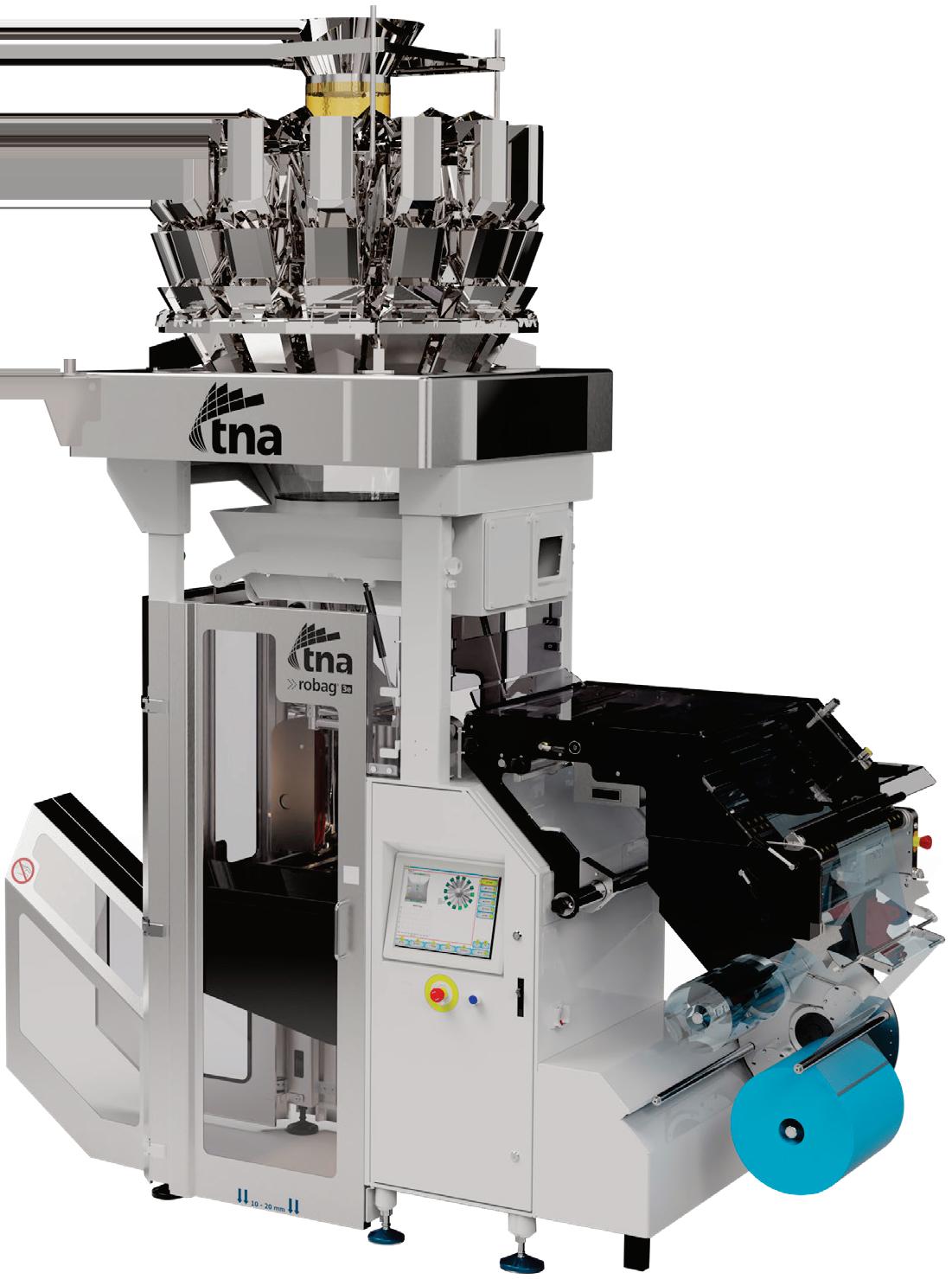
Manage 5 packaging lines with 1 operator*
Achieve waste as low as 0.1% for snack food & confectionery products**
Gain up to 98% packaging efficiencies*
*With the tna auto-splice 3
**Speeds determined by tna robag® configuration, bag size, film and product type

products on top of each other (one by one) and using the Slug Gripper to ensure control of the slug. Once the Slug Gripper has a slug of five cookies or nine crackers, the robot moves to the flighted conveyor known as the fixed-pitch conveyor carrying the polystyrene trays. On the way, the Slug Gripper rotates from a vertical orientation to a horizontal orientation and releases its slug of product into one compartment of a tray. At that point it’s ready to go back in to form another slug. Typically the trays have two compartments for an 18-count cracker offering and three compartments for a 15-count cookie offering.
Since the crackers are square and the cookies round, ZoRoCo needs to change Slug Grippers when changing from cookies to crackers. But this is a toolless task that takes about a minute per end effector. Also notable, says DeJac, is that additional Slug Grippers can be easily supplied in the future. “If ZoRoCo comes to me and says they want to run a two-cell tray with 12 cookies per cell, it’s completely doable. We can also accommodate different shapes or sizes in the future due to the simplicity in being able to quickly develop and change Slug Grippers.”
Anyone who has been to PACK EXPO lately has seen automated systems using delta-style robots to pick cookies from a belt and place them into trays on a flighted conveyor. But typically those systems operate like this: pick, traverse to tray, place, traverse back to flow of cookies for the next pick. Royal Houdijk believes it has the only patented option available where the entire slug is formed without asking the robot
Visit pwgo.to/8695 or scan the QR code to watch a brief video of the unique Slug Gripper in action.
to traverse back and forth from flow of cookies to the tray for each individual cookie. Houdijk’s DeJac points out that from a routine maintenance and wear and tear perspective, this Slug Gripper method has obvious advantages.
“It also allows us to reduce the overall length of the line,” says DeJac. “If you’re picking one cookie at a time you need a lot more robots to get the job done. I would say, on average, it could be in the range of 20% more robots, because instead of making multiple short movements to collect a complete slug and then carry it to the tray, you have to do a bunch of picks, and you have to allow for the travel time between the tray back to the flow of cookies on the conveyor. So with the Slug Gripper we’re condensing the lines, utilizing less robots to handle the same throughput that you would encounter in traditional systems.”
The Slug Gripper end effectors used at ZoRoCo are pneumatically actuated. But they can also be servo driven, and Houdijk’s DeJac says the majority of systems being designed and installed now are in fact servo driven, further reducing the time for changeovers.
As for the controls components upon which the Cookiebot depends, in this particular application those were supplied by Beckhoff. But DeJac


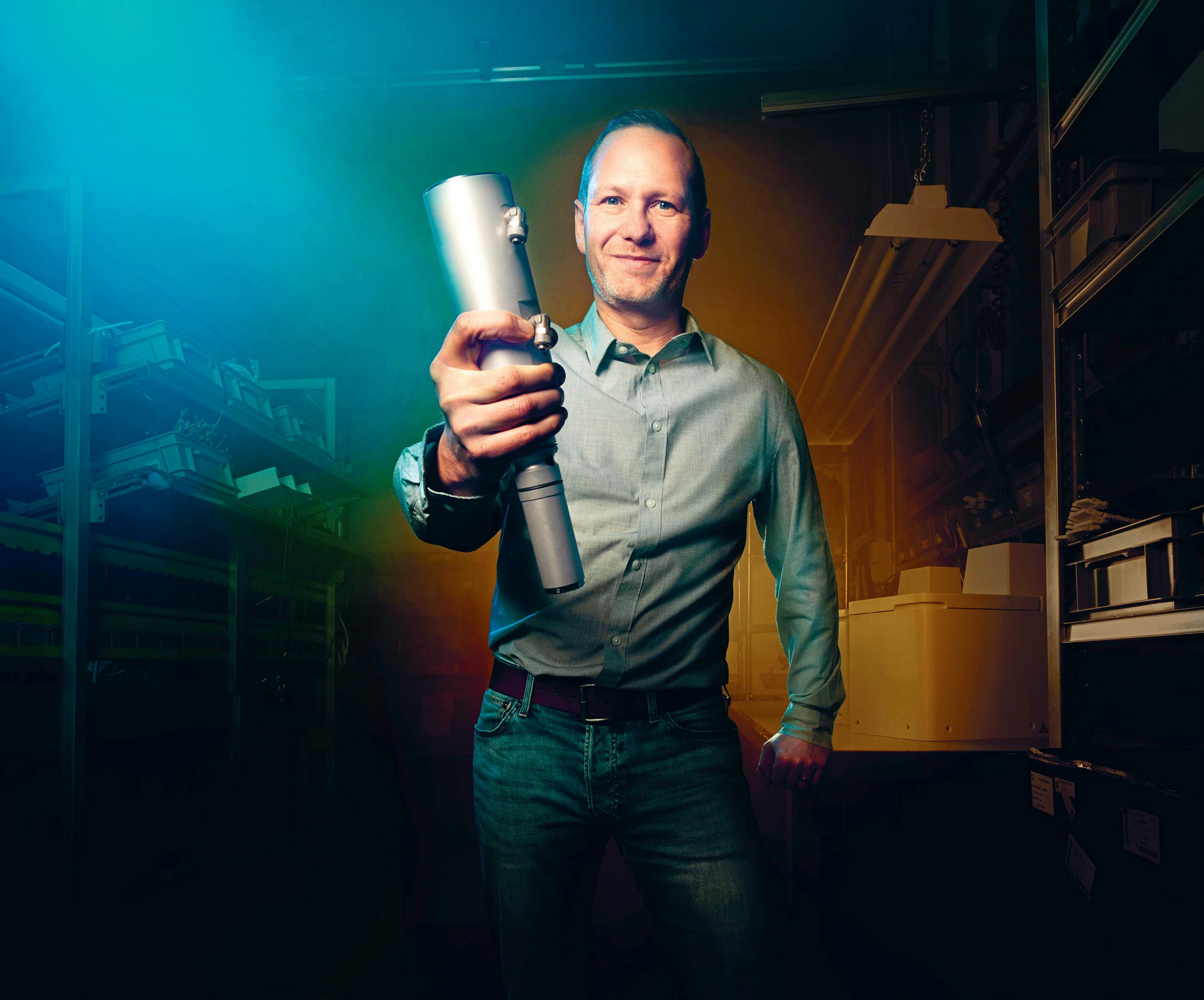





The modular concept of our TQS system allows us to adapt it to an extremely wide range of requirements. Depending on the product’s size, shape, weight, and speed, we simply combine the according modules. Our customers receive a solution that is perfectly tailored to their individual needs. All functions are fully integrated in one holistic system, resulting in the operator using one central user interface. Product changes, article setup, and layout modifications thus become minimally error-prone and maximally user-friendly.
TQS - Case Printing & Labeling

Our show truck will come to you. Scan here to make an appointment.

Shown here are round cookies that the Cookiebot is placing into three-cell 15-count trays.
says that the Rockwell platform is Royal Houdijk’s standard. “We also decentralized our control platforms from the main electrical cabinet so that each module has its own controls,” adds DeJac. “So if, for example, you were to lose a PLC card, the whole line wouldn’t have to be shut down. Just that cell would be affected. And because of the overcapacity designed into the line, you would be able to still run at a nominal rate as the Cookiebot automatically adjusts the speed of the other robots in the line in that scenario.”
This modular approach to the controls package also lends itself to routine maintenance exercises. For example, if chocolate chip cookies are in production and a Slug Gripper should get contaminated with chocolate, an operator can push a button to bring the two robots in that module to an operator-friendly and safe position to do a quick wipe down or remove the Slug Gripper altogether and replace it with a clean spare.



“We also have a program for servicing and recalibrating the Slug Grippers,” says DiJac. “Like anything else, there are wear parts, right? We don’t want our customers trying to figure out how or when it’s time to replace bushings or other moving parts. So we supply them with spares so that they can remain in production. They ship Slug Grippers to our hub in Atlanta where we perform service and recalibration and then ship them back. We also include any respective upgrades as part of this service to always provide customers with the latest hardware available.”
Considering the speed at which the Slug Gripper operates, it’s fair to wonder how it can manage to do what it does without damaging what is, after all, a pretty fragile product. According to DeJac, that has a lot to do with the extensive testing and modeling that goes on before a system is offered. “We design and 3D print our tooling in house, we do our own assembly of the end effector, and then we put it through extensive benchtop testing. If revisions are required, we go back to the drawing board, and only when we’ve verified that we have what we want do we proceed with the project. Part of the process is learning how much force can the cookie or cracker withstand before it shows signs of damage. How fast can we move it vertically before it breaks in half? How much gripping pressure can we apply? All the dynamic forces that the product will be exposed to are taken into account long before we ever get to the point that a customer is ready to place an order. So by the time we’re sitting down to negotiate the purchase, we’re confident in agreeing to a 99% performance guarantee as part of the contract.”
The flighted conveyor carrying filled trays eventually reaches a slight incline so that it can carry the trays over the infeed belt conveyor of the Cookiebot while executing a 180-degree turn. The net result is that filled trays, which travel right between the cooling conveyor on one side and the belt conveyor of the Cookiebot on the other side, travel in the opposite direction of the cooling conveyor and in the same direction as the Cookiebot main conveyor. In short order the filled trays arrive at a Sacmi flow wrapper that wraps them in a clear film overwrap.
Next in the packaging flow is checkweighing by a Loma Systems unit and X-ray metal detection by a system from Thermo Fisher Scientific. Wrapped trays then are conveyed into an ADCO cartoner. Integrated into the cartoner is a Videojet ink-jet coder that puts a date code on each carton. Cartons at this point are manually case packed, but soon to be installed is a case packer from Douglas Machine.

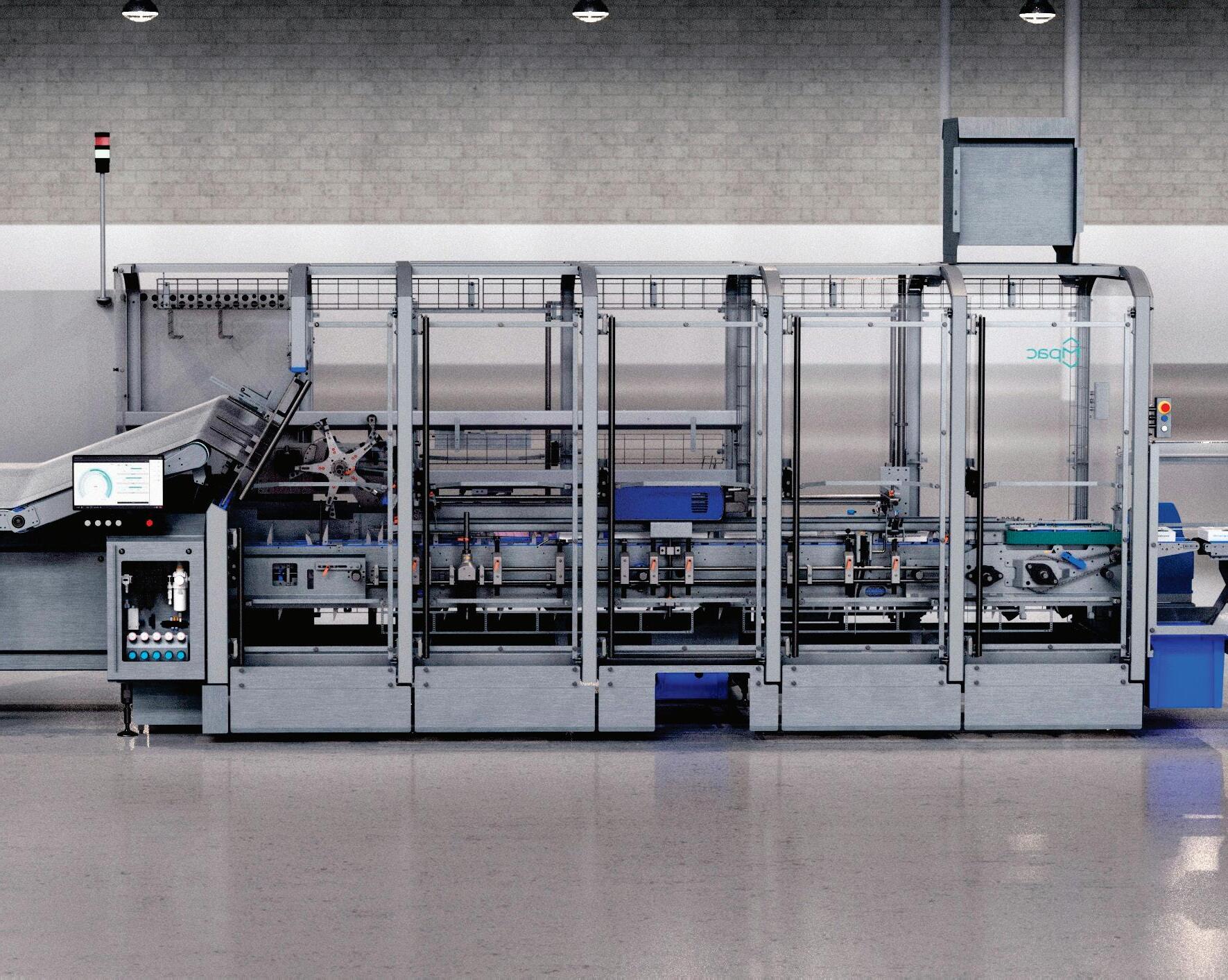





























One other element of versatility that distinguishes the Cookiebot is that not all product exiting the oven has to get placed in a tray. Some of ZoRoCo’s customers may also want two- or three-count portion packs that reach consumers through a gas station convenience store, or maybe even a single-count cookie pack aimed at airline passengers. If these formats are called for, operators can select a recipe at the HMI screen of the Cookiebot that will cause a small portion of the product flow to be diverted in such a way that they bypass the pick-and-place robots and are single-filed into a separate Sacmi flow wrapper than the one used for wrapping trays. This portion pack wrapper also inserts a lightweight paperboard component on which the cookie or cracker sits as it gets wrapped in film.
Running now since Feb. 2024, the new equipment has more than met Rost’s expectations. He credits consultant Curtis Wardhaugh of Medalist Engineering with introducing him to the Houdijk Cookiebot.
“One of the reasons we opted for Houdijk’s solution was that they contractually agreed to a 98% OEE,” says Rost. “And that’s exactly what they delivered. Keep in mind that this was our first experience with robotics. And we did consider more mechanical as opposed to robotic ways of automating what was a very manual and labor-intensive process. In fact some of the mechanical solutions were considerably less costly. But they didn’t offer the kind of flexibility that we get with the Cookiebot, and that was a key driver behind the decisions we made.”






Shown here are round cookies that the Cookiebot has placed into a three-cell 15-count tray.
Rost says that when it came time for installation and commissioning of the new equipment and training of ZoRoCo’s employees, Royal Houdijk was very helpful and supportive. It helped, he adds, that Houdijk is a big believer in the Poka-yoke process analysis tool that more or less fool-proofs procedures by preventing a process from proceeding to the next step until the proper conditions have been met.
“It’s all very straightforward and intuitive,” says Rost. “You go to your HMI and select the program and that’s about it. The operators here love it. Plus Houdijk can connect with us remotely, so there’s been a few times where that has been helpful, too.” PW



















For over 75 years, we have been a trusted leader in designing and manufacturing innovative automation solutions.
Tailored solutions integrating FANUC robotics to optimize your operations.
Automated solutions to consistently and safely secure palletized loads for safe transport and delivery.
Seamless transport, handling, and securing of products for any industry.
From design to installation and maintenance, we’re with you every step of the way.





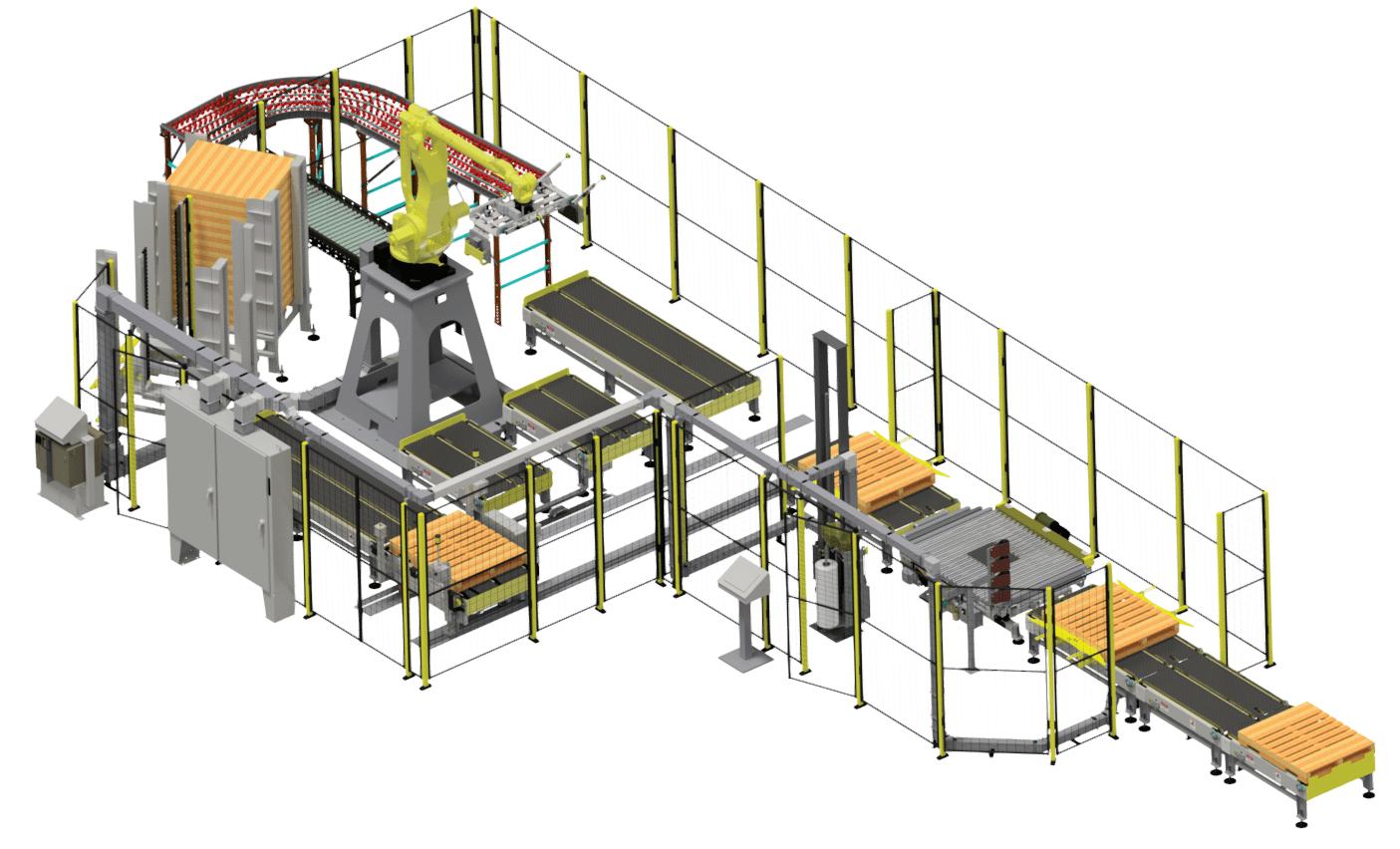















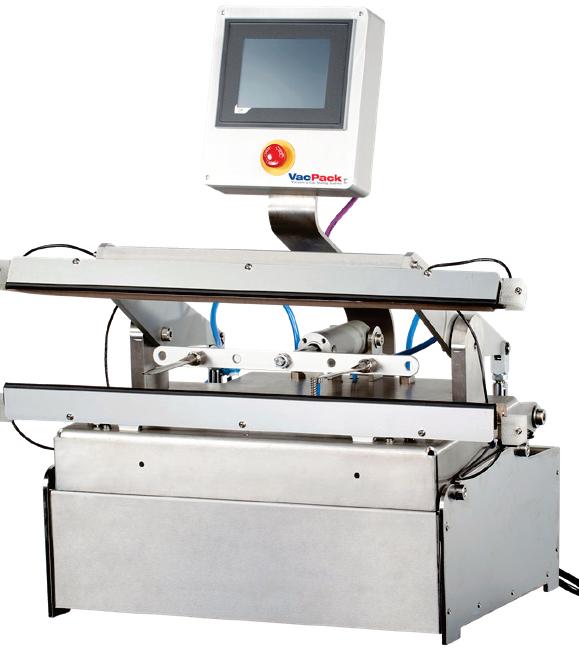







When JOA began looking to develop a never-before-seen dry molded fiber converting machine and platform, it found the technological capability and know-how with Bosch Rexroth’s ctrlX Automation toolkit.
By Matt Reynolds, Chief Editor
Last summer, Packaging World covered a potentially disruptive new material technology called drymolded fiber (DMF). The first in-market example of consumer products using this tech came from London-based Diageo, who made a splash testing paperbased bottles for Baileys, the Original Irish Cream Liqueur. Made of 90% paper and containing a thin PET liner, the bottles were designed for recycling in standard paper streams. The consumer didn’t even need to separate the PET liner when disposing.
Supporting the bottle was an extraordinary network of inventors, developers, OEMs, and stakeholders emphasize ‘progress over perfection’ as they commercialized the breakthrough bottle. Sweden’s PulPac invented the tech, and London’s PA Consulting was the technology incubator that helped nurture it to market. Wisconsin’s Curt JOA, makers of machining and converting equipment producing disposable hygiene products from diapers to feminine care products, built the machine on which PulPac packaging tech would be molded. And the first converter to buy a DMF system from JOA was Matrix Pack, a global converter manufacturer of innovative and sustainable packaging solutions. Not mentioned in that 2024 PW discussion was the controls architecture from Bosch Rexroth that underpins the new converting system (pwgo. to/871). We’ve since learned all about it.
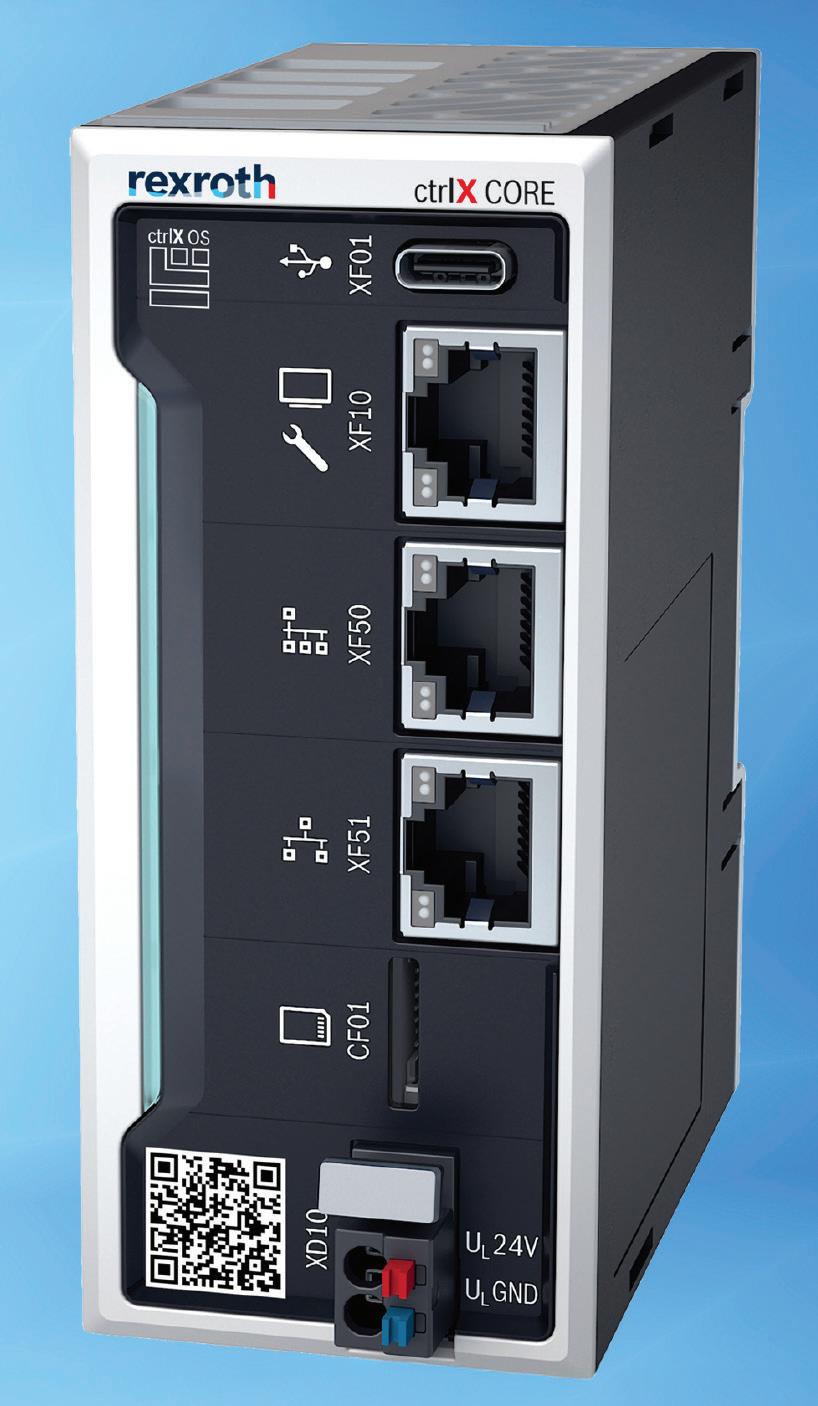
Visit pwgo.to/8718 or scan the QR to read about the Diageo/ Baileys molded pulp bottle project.
The platform’s dedicated control, ctrlX Core, uses the Linux-based ctrlX OS, which serves as the framework of the uniquely modular, app-based architecture.
company found that expertise with Bosch Rexroth. Stakeholders JOA, Bosch Rexroth, and its channel partner, CMA/Flodyne/Hydradyne (CMAFH), say the development of this new platform took off quickly. The three organizations collaborated throughout the entire build, from design, construction, programming, testing, and production. Since ctrlX Automation has a wide portfolio of hardware and software, JOA and Rexroth were able to design the machine almost entirely using its components. Rexroth’s latest platform provided the flexible, modular environment that JOA and its customers prefer, all without sacrificing seamless communication and performance. These benefits empowered JOA to create a future-proof machine platform that updates and transforms easily with the appbased technology of ctrlX Automation.
When developing this new machine platform, JOA needed to implement the necessary controls infrastructure to not only ensure consistent throughput but also to scale as consumer demands changed. That meant the OEM needed an experienced partner in industrial automation technology that could help design this revolutionary machine. The
With a machine already earmarked for sale before production began, JOA and Rexroth got to work, completing both the first saleable machine and an in-house demonstration unit in less than six months. The new machine platform revolutionizes DMF technology and exceeds requirements from both OEMs and end users like converter Matrix Pack, while also serving as an excellent example of the breadth of the ctrlX Automation toolkit, JOA says.
“The final machine platform has met every metric we’ve asked of it and that speaks to both the innovative efficiency of the ctrlX Automation portfolio and our extensive experience in developing high-performance, quality machinery,” says Phillip Kocken, systems manager at JOA.
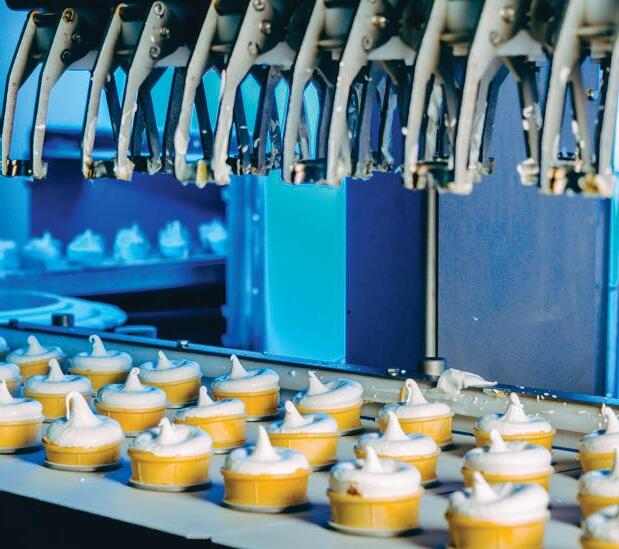

in packaging & processing SEPTEMBER 29 – OCTOBER 1, 2025

Break out of the ordinary and discover your next big idea at PACK EXPO Las Vegas 2025. Explore the eye-opening show foor, go hands-on with new tech, collaborate with experts and uncover exciting new solutions that can transform your operations.
MACHINERY IN ACTION and materials to explore NEXT-LEVEL TECHNOLOGY from 2,300 exhibitors
IDEAS & CONNECTIONS spanning 40+ industries VISIONARY EXPERTISE shared in free show floor sessions

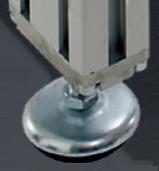
Upgrade your existing line or create a custom conveyor system from the ground up.
Our modular components range from beams, chains and belts to guide rails, profiles, bends and drive units, as well as pre-assembled modules. We built them to handle everything from lightweight items to heavy cartons.
Whatever your product flow, FlexLink lets you shape it to match your layout and performance needs.
My FlexLink provides a complete range of tools to start planning, from FlexLink Design Tool to Online Store
Sign up on my.flexlink.io or contact us at info.us@flexlink.com

Functionality and a high level of motion were the guiding principles throughout the design process. At the core of the platform are 28 axes of ctrlX Drive, which are connected through two separate lines and powered by two high-amperage XCS2 converters that each run large motors to mill and recycle unused fiber mat. These two XCS2 converters also act as power supplies for two banks of costefficient and space-saving XMD2 dual-axis inverters. The power for these servo systems is distributed through a DC bus, which helps sustainably reduce energy consumption when axes aren’t running simultaneously. Additionally, because there are only two converters, fusing and wiring are minimized. The result is massive efficiency gains in panel design, power, and time-to-market thanks to the compact and flexible design of ctrlX Drive.
All elements of the ctrlX Automation system communicate and synchronize via EtherCAT; an open but highly deterministic network protocol that enables sub-millisecond update rates and reliable hardware synchronization. With EtherCAT, engineers can identify, integrate, and start programming an entire network of ctrlX Core (control), ctrlX IO, ctrlX Safety, and ctrlX Drive devices in minutes.
With the necessary hardware installed, it was time to use the most unique features of the ctrlX Automation platform. The platform’s dedicated control, ctrlX Core, uses the Linux-based ctrlX OS, which serves as the framework of the uniquely modular, app-based architecture. With this browser-based programming environment, JOA took advantage of interconnected apps that simplify each piece of the development process. By using individual apps designed to address PLC, motion, networking, and more, the programming experience was not only simplified, but expedited.

Rexroth adds that its ctrlX Automation can handle everything from basic ladder logic to complex math in Python; from HTML5 for graphics to the high-end motion JOA used with synchronization and electronic camming.
Through a focus on simplicity throughout the design process, this machine platform includes no extraneous components, stakeholders say. Its footprint, including cabinet space, is kept to a minimum and was designed to only consume power when processes are in motion. Beyond the reduced energy use, the finished machine also easily recycles its own waste—nearly all the scrap material produced in this process is converted back into fiber to be pressed again.
All in all, the efficient machine requires a smaller footprint, uses less energy, and produces less waste, dovetailing with the sustainable products it molds. That’s important because, as industry trends and governmental regulations turn more to sustainable solutions in consumer verticals, there will be an increased need for products that are compliant. JOA’s machine platform help end users accomplish that goal.
“Working on JOA’s dry molded fiber machine was definitely a team effort. Once JOA told us about this new market they were pursuing, we knew it was a forward-looking venture that we wanted to be a part of. With the help of JOA’s engineering team and the support of our local sales channel, CMAFH, we combined all of the latest ctrlX Automation technologies to create a truly future-proof machine platform,” concludes Eric Roggeman, senior sales engineer, automation and electrification, Bosch Rexroth. PW
Designed specifically for exhibitors, this course gives you the tools to make meaningful connections with potential customers and achieve measurable results from PACK EXPO events.
JUNE 26-27, 2025
The Ritz-Carlton Dallas; Dallas, TX
AUGUST 26-27, 2025
PMMI Media Group; Chicago, IL
Elevate your career with this empowering course crafted to strengthen your leadership capabilities, foster new connections, and provide actionable insights.
OCTOBER 21-22, 2025
PMMI Media Group; Chicago, IL
Being a great trainer goes beyond knowing the equipment. PMMI’s Certified Trainer Workshop is tailored for the packaging and processing industry, equipping trainers with techniques and skills to engage learners at every level.
SEPTEMBER 29-30, 2025
PACK EXPO Las Vegas; Las Vegas, NV
Limited spaces are available. Don’t miss this chance to invest in your team’s potential and elevate your company’s success. Register at pmmiu.org
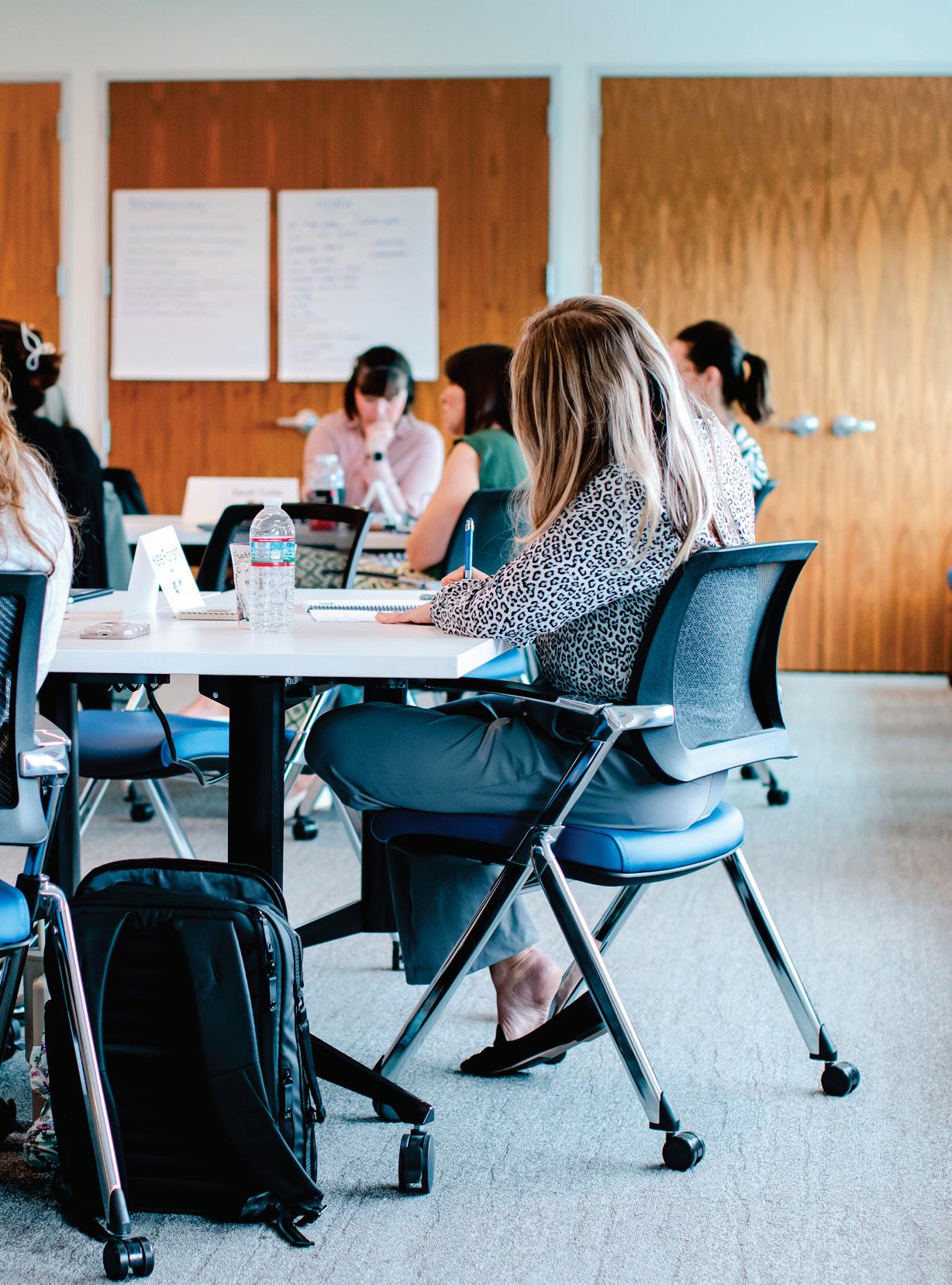


From forest to shelf, a new package from Finnish licorice maker Kouvolan Lakritsi delivers a circular economy story rooted in regenerative forestry, renewable materials, and collaborative design.
By Anne Marie Mohan, Senior Editor
In the heart of Finland, where over 70% of the land is cloaked in forest and where environmental stewardship is embedded in the national ethos, a heritage brand is charting a sustainable path forward. Kouvolan Lakritsi, a family-run confectionery known for its traditionally cooked licorice, has partnered with Metsä Board to unveil a new recyclable and reclosable paper cup—a packaging innovation that embodies regenerative forestry, circular economy thinking, and co-creation at scale.
A collaborative design journey begins
Since 2022, Kouvolan Lakritsi had been considering adding a new packaging format. While the pouch format it was using remained costeffective and familiar, it lacked the premium presence and sustainability narrative the brand wanted to communicate. With growing consumer interest in recyclable, plastic-free formats—and pressure from retailers for lower-impact options—the company began exploring more innovative solutions.
“We had long wanted to offer something that stood out, something that reflected the quality of our licorice and our values,” says Timo Nisula, managing director at Kouvolan Lakritsi.
When the idea of a paper cup came up in a brainstorming session with Metsä Board, it struck a chord. Encouraged by Metsä Board’s culture of open innovation, Kouvolan Lakritsi joined forces with the company’s Packaging Services team. Together, they began a journey at Metsä Board’s Excellence Centre in Äänekoski, Finland, a space purposebuilt for material innovation, packaging design, R&D collaboration, and customer feedback integration.
“Co-creation is not a buzzword at the Excellence Center,” says Gunilla Nykopp, customer experience manager at Metsä Board. “We work handin-hand with brands to understand not just what kind of packaging they need, but why.”
The collaboration culminated in the creation of a paperboard-based cup, sealed with a transparent film and topped with a reclosable lid. The format breaks with convention while addressing both functional and environmental needs.

“Licorice sold in a bag is still a big mass-market product, but with the licorice cup, we can launch something completely new and exciting,” says Santeri Nisula Sheriff, CEO of Kouvolan Lakritsi “It is a recognizable and surprising packaging solution that allows for many other things compared to a bag.”
What sets this package apart is not just its form, but also its forest-first foundation. Metsä Board, part of Metsä Group, sources its wood entirely from sustainably managed Nordic forests—primarily in Finland—where forest cover exceeds 70% of the land. These forests are managed under Metsä’s regenerative forestry model, a strategic approach that aims to not just sustain but also improve the condition of natural ecosystems.

Metsä sources primarily native Nordic species—pine, spruce, birch, and aspen—for its paperboard production. These species are wellsuited to the region’s climate and play a critical role in maintaining biodiversity and forest resilience. The selection and rotation of species are planned carefully to ensure long-term productivity and ecological health.
The fiber is supplied by over 90,000 Finnish forest owners who belong to Metsä Group’s parent company, Metsäliitto Cooperative, which holds 51% of Metsä Board’s shares. This community-based model ensures that forestry practices are deeply rooted in local stewardship and generational responsibility. The cooperative’s approach combines local knowledge with scientific forestry principles, ensuring that both biodiversity and economic resilience are prioritized.
“Our goal is to leave forests in better shape than we received them,” explains Timo Lehesvirta, leading nature expert for Metsä Group. “That means enhancing biodiversity, preserving habitat, and delivering climate resilience.”
Metsä’s regenerative approach includes specific actions like selective logging, which avoids large-scale clearcuts; retention of standing deadwood and decaying logs to support forest-floor biodiversity; and maintaining habitat corridors that allow species movement. Special attention is given to preserving native species, from trees to fungi to pollinators.
“Forests are more than timber,” Lehesvirta adds. “They are carbon sinks, food sources, and cultural touchstones. We treat them as such.”

Metsä sources primarily native Nordic species, including pine, spruce, birch, and aspen, for its paperboard production.
Metsä also monitors ecosystem services including carbon sequestration, clean water, pollination, recreation, and food sources such as berries and mushrooms. These benefits are tracked through impact data and integrated into the group’s long-term forest development models.
“We’re developing what we call nature-positive forestry,” Lehesvirta
FULL ROTARY CANNING: THE SPEED YOU NEED, IN A FOOTPRINT THAT FITS!
ROTARY FILLING PAIRED WITH ROTARY SEAMING ALLOWS A SMOOTH CONTINUOUS MOTION TRANSITION FROM FILLING TO SEAMING ELIMINATING UNNECESSARY AGITATION AND CO₂ Loss
SMOOTHER OPERATION IMPROVES CAN HANDLING AND LOWERS THE RISK OF CAN DAMAGE
MECHANICALLY-SYNCHRONIZED LID APPLICATION ENSURES CONSISTENT AND REPEATABLE DOUBLE SEAM INTEGRITY
NOW AVAILABLE IN 12/3, 16/4, AND 24/4
FILL HEAD/SEAMER SPINDLE CONFIGURATIONS FOR SPEEDS UP TO 250 CPM!
















— including the opportunity to gain insights you can act on and connections that count.


Includes an exclusive plant tour hosted by:

PMMI Roadshow, Dallas TX / June 24-25, 2025
KEYNOTE SPEAKERS INCLUDE: NEW FOR 2025!


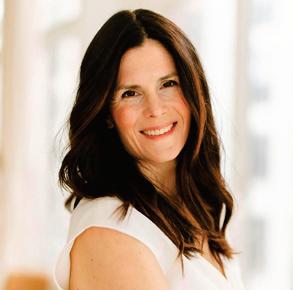
Tom Miller
Sr. Engineering Manager, Packaging & Logistics
Innovation, General Mills, and chairperson of the PMMI OpX Executive Council
Topic: Packaging Prime Time – An Exciting Future for the Industry

Joyce Longfield
M.Sc., R&D – Principal of HPP Applications, PPWLN Executive Council Member, Cold Pressure Council Board Member, Good Foods Group, LLC
Topic: Inside Good Foods: Innovation, Leadership, and Paying It Forward

MaX Day Share Group Sessions
Tailored breakouts for Marketing, Sales, Engineering & Operations, Field Service, and Human Resources professionals.



explains. “It’s about quantifiable improvement, not just compliance.”
These forest practices are also economically viable for forest owners. Forests under Metsä’s management are certified under PEFC (Programme for the Endorsement of Forest Certification) and/or FSC (Forest Stewardship Council) standards, and regenerative methods have been shown to deliver robust long-term yields while maintaining ecosystem function.
According to Metsä Group, the regenerative approach strengthens the value of natural capital alongside the economic value generated by forest products, laying the groundwork for a resilient, climate-adapted packaging supply chain that begins with the forest and ends with the consumer.
The harvested wood is processed at one of Metsä Board’s eight mills— seven in Finland and one in Sweden—where it is transformed into premium folding boxboard. A cornerstone of the company’s bioeconomy strategy, its Äänekoski mill in Finland produces fully coated bleached boxboard for high-performance packaging and graphical applications.
“We make use of every part of the tree,” says Timo Tallinen, VP of the Äänekoski board mill. “The best logs go to sawn timber, plywood, and LVL [laminated veneer lumber]. Thinner parts of the tree trunk, treetops, and younger trees from thinnings become pulp. Bark and branches are used for energy. Nothing is wasted.”
Metsä Board’s folding boxboard is built from a three-layer structure: the outer layers are made of chemical pulp, which offers high
brightness and excellent printability, while the middle layer consists of high-yield pulp that provides stiffness and bulk with less material. This engineered composition enables weight reduction without sacrificing performance—a critical factor in reducing carbon footprint.
“Our three-layer board structure means we can deliver the same strength and functionality with lower weight,” says Metsä Board VP, climate and circular economy, Maija Pohjakallio. “This translates into less material use, reduced emissions during transport, and better efficiency in printing and converting.”
The board used for the Kouvolan Lakritsi cup is produced at Metsä Board’s Husum mill in Sweden, a facility known for its high standards in quality, food safety, and environmental performance. The Husum mill, like Äänekoski, runs on a high share of renewable energy and is aligned with Metsä Board’s goal to achieve fossil-free production by 2030. It is fully traceable, recyclable, and supports the company’s goal of fossilfree products by 2030.
“Our paperboards are already produced with 90% fossil-free energy,” notes Pohjakallio. “But we’re not stopping there. We’re aiming for fossilfree mills and fossil-free products by 2030.”
Opened in 2020, Metsä Board’s Excellence Centre in Äänekoski was designed to be more than a testing lab; it’s a hub for packaging innovation, sustainability science, and cross-functional problem-solving. Bringing together packaging designers, R&D specialists, technical consultants,



Is your packaging operation running at FULL HEALTH?




AF2K Testing and ET Xtreme Tape Head iTrack™ Data Collection System
• Measures adhesion strength to your corrugate boxes, which could predict potential tape failures
• Proven increase in adhesion with the ET Xtreme® Tape Head

• Case sealer monitoring (low tape/no tape, uncut tape, and case sealer jams)
• All data monitored by IPG Central Hub to capture and resolve potential failures before they affect your production line

• New machinery installation, operator training, machine commissioning, preventative maintenance programs, machine health audits, repair services Service Support Capabilities









and supply chain experts, the center supported over 400 customer projects in 2024. It features a packaging design studio, a virtual retail environment, digital simulation tools, and a materials lab equipped to analyze performance, recyclability, and product interaction.
It was in this environment of creative collaboration that the Kouvolan Lakritsi cup took shape. Metsä Board’s interdisciplinary team
Metsä Board’s Excellence Centre in Äänekoski, Finland, is a two-story, 5,000-sq-ft facility created to allow for joint exploration, innovation, and testing of fiber-based packaging solutions.
worked hand-in-hand with the licorice brand and its design agency, Futupack, to translate a novel idea into a fully functioning package.
“We analyzed stacking strength, closure integrity, and moisture resistance,” says Iiro Numminen, structural packaging designer for Metsä Board. “The cup had to look good, feel premium, and perform flawlessly from filling to consumption.”
Multiple prototypes were tested across automated and manual packing lines, and the material choice was selected for its balance of sustainability, printability, and food safety.
“During the project, several different prototypes were developed, and a large number of different tests were performed,” confirms Timo Kallio, Metsä Board technical expertise service director. “The new packaging solution seems simple, but the product to be packaged set high demands.
“We had to learn to understand the packaging lid’s sealability and how the reclosable lid works with the flattened rim of the cup. In


























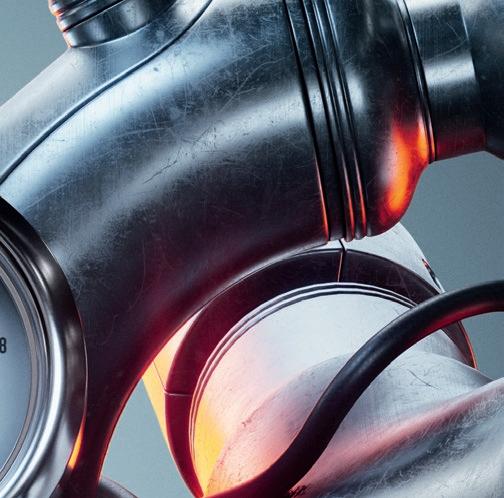

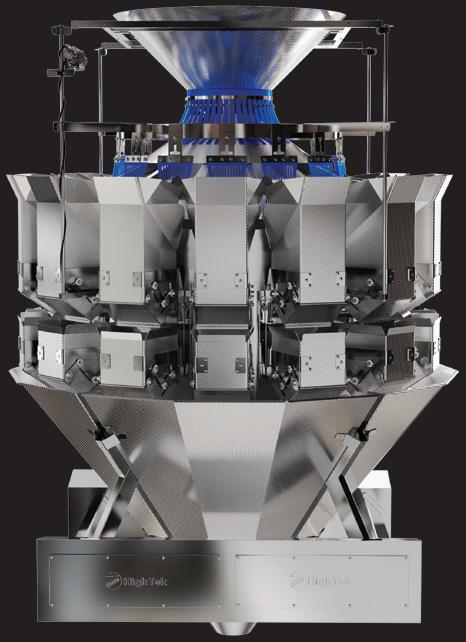
High Tek USA, your trusted partner in food packaging since 2004. With over two decades of experience, we’re committed to delivering top-tier equipment, service, and parts solutions tailored to meet your needs.
At High Tek, support is at the heart of what we do. From initial setup to ongoing maintenance, our expert team provides personalized solutions to help your business thrive.
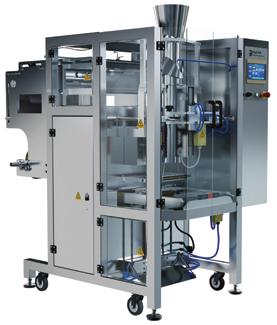
We measure our success by yours—empowering you with reliable equipment and unmatched support to achieve your goals.


addition, we had to learn how to press the resealable lid. In practice, verifying the entire package process required a good deal of time and development.”
The licorice cup was developed on the basis of an existing material and is made from 310 g/m2 Metsä Board Natural FSB [foodservice board] Cup material. The 200-g cup is heat-sealed with a transparent plastic film and is topped by a paperboard lid made by TPLC Oy that fits tightly and supports reclosing. Both the cup and lid have a thin polyethylene coating for barrier and are recyclable through standard paperboard collection streams. The cup is manufactured and digitally printed in Finland by Lansipahvi Oy

“It’s a food-safe board with excellent sensory properties, perfect for a premium product like Kouvolan Lakritsi,” says Ilkka Harju, packaging services director for Metsä Board.
“We conducted a consumer survey regarding the new packaging solution, and some surprising points of view emerged,” Harju adds. “One was that the consumer appreciated the fact that the packaging did not make a rattling sound and that the new packaging would work better, for example, in cinemas. In addition, the easy reclosability of the package was appreciated.”
For this project, sustainability considerations extended beyond the cup. Metsä Board developed a complete secondary packaging system using white kraft liners and lightweight corrugated structures. These were optimized through palletization simulations to ensure strength and space efficiency.
“The packaging is designed to flow through the supply chain efficiently,” says Marko Leiviskä, packaging development manager at Metsä Board. “From the moment it leaves the factory to the moment it’s placed on a shelf.”
All designs were subject to Metsä Board’s 360 Services, a suite of offerings that includes LCAs, lightweighting analyses, packaging performance simulations, supply chain audits, and technical troubleshooting and guidance.
These services are part of Metsä Board’s value-added model and
are available to customers at no extra cost. “We believe innovation should be accessible,” says Nykopp. “It’s how we stay competitive and how our customers succeed.”
As the packaging project neared completion, attention shifted to what it would mean for Kouvolan Lakritsi as a brand. For the licorice maker, the new cup represented far more than just a change in materials or structure. It wasn’t just a functional change; it was an opportunity to deepen the emotional connection with customers and signal a long-term commitment to sustainability and innovation.
Known for its authenticity and heritage, Kouvolan Lakritsi has built its reputation on a slow-cooked production method that dates back more than a century. While its methods remain traditional, the company has embraced innovation to meet evolving consumer preferences and growing environmental expectations. The new cup offers a clear opportunity to stand out on shelf while signaling the brand’s commitment to a more sustainable future.
Retailers and consumers alike have embraced the new format. The cup offers a tactile, premium user experience, and the design invites reuse. “The new cup can even be reused as a coffee cup that gives a slight flavor of licorice in the coffee,” says Nisula.
The format has also gained attention from export markets looking for sustainable, differentiated packaging that tells a story on shelf. In addition to grocery stores across Finland, the new cup has launched in travel retail, gift shops, and design-forward specialty stores, appealing to both domestic customers and tourists drawn to Scandinavian sustainability. Interest from buyers in Germany, Sweden, and the Netherlands has reinforced the potential for wider European rollout.
The collaboration between Metsä Board and Kouvolan Lakritsi demonstrates how fiber-based packaging solutions can support companies aiming to reduce their environmental impact. By adding a paper-based, recyclable format to its packaging portfolio, Kouvolan Lakritsi is able to reduce packaging weight, use renewable materials, and improve recyclability—all key factors in aligning with EU and global sustainability directives.
Metsä Board’s use of fresh fiber from regenerative Nordic forests, combined with its fossil-free production targets and low-carbon board structure, contributes to a significantly lower carbon footprint compared to conventional plastic-based packaging. The three-layer board design used in the licorice cup helps reduce raw material usage without compromising on strength or print quality.
The development process also highlights the role of collaborative design in meeting packaging performance and sustainability criteria. From structural simulations to transport testing and consumer feedback loops, the project leveraged Metsä Board’s Excellence Centre and 360 Services to create a solution optimized across the entire packaging value chain.
“This is what we mean by sustainable packaging innovation,” concludes Nykopp. “It’s not just about replacing plastic. It’s about redesigning systems, materials, and experiences from the ground up.” PW
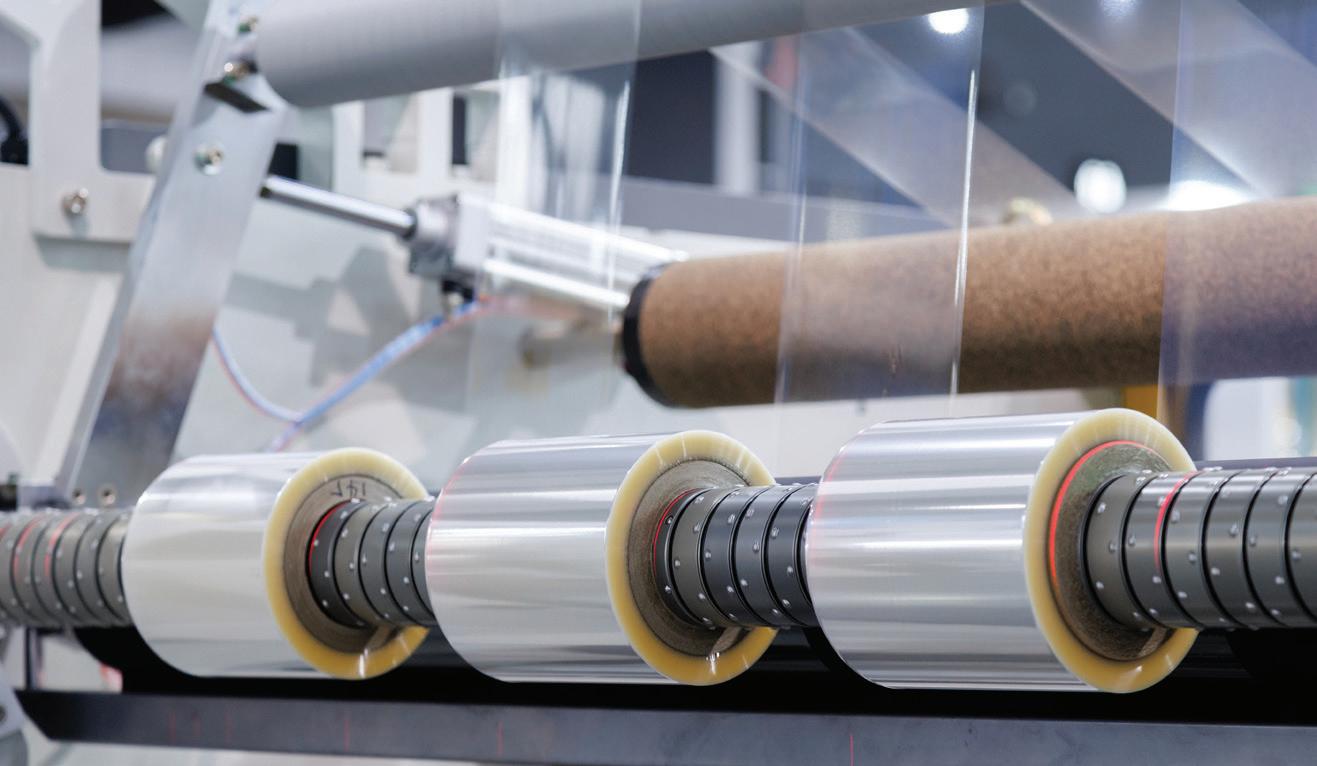

Discover the future of sustainable packaging with our innovative regrind recycling agent! Processors incorporate reprocessed materials as a regrind layer in advanced multilayer packaging. However, immiscibility between polyolefin and polar barrier materials (EVOH, PA) in the regrind layer can lead to suboptimal mechanical and optical properties.
ADMER™ RA105A, recognized by the APR for Design for Recyclability, acts as an effective compatibilizer between polyolefin and barrier materials, transforming the mechanical and optical properties of your packaging and enhancing its overall quality and sustainability.
1%





Morphology of the regrind. SEM image X3000




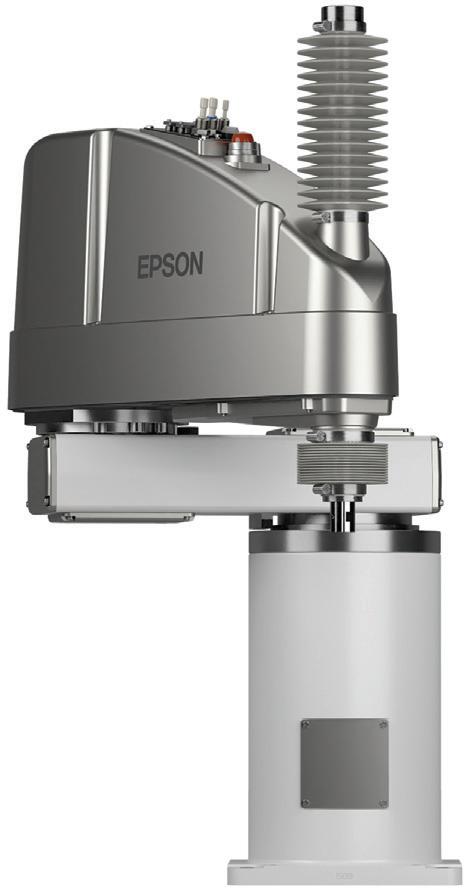
Epson Robots expands its SCARA lineup with the GX-C Series (GX4C, GX8C, GX10C, and GX20C), powered by the RC800A controller with SafeSense technology, offering multiple arm con gurations for increased productivity and worker protection in a compact footprint.
Epson Robots pwgo.to/8717
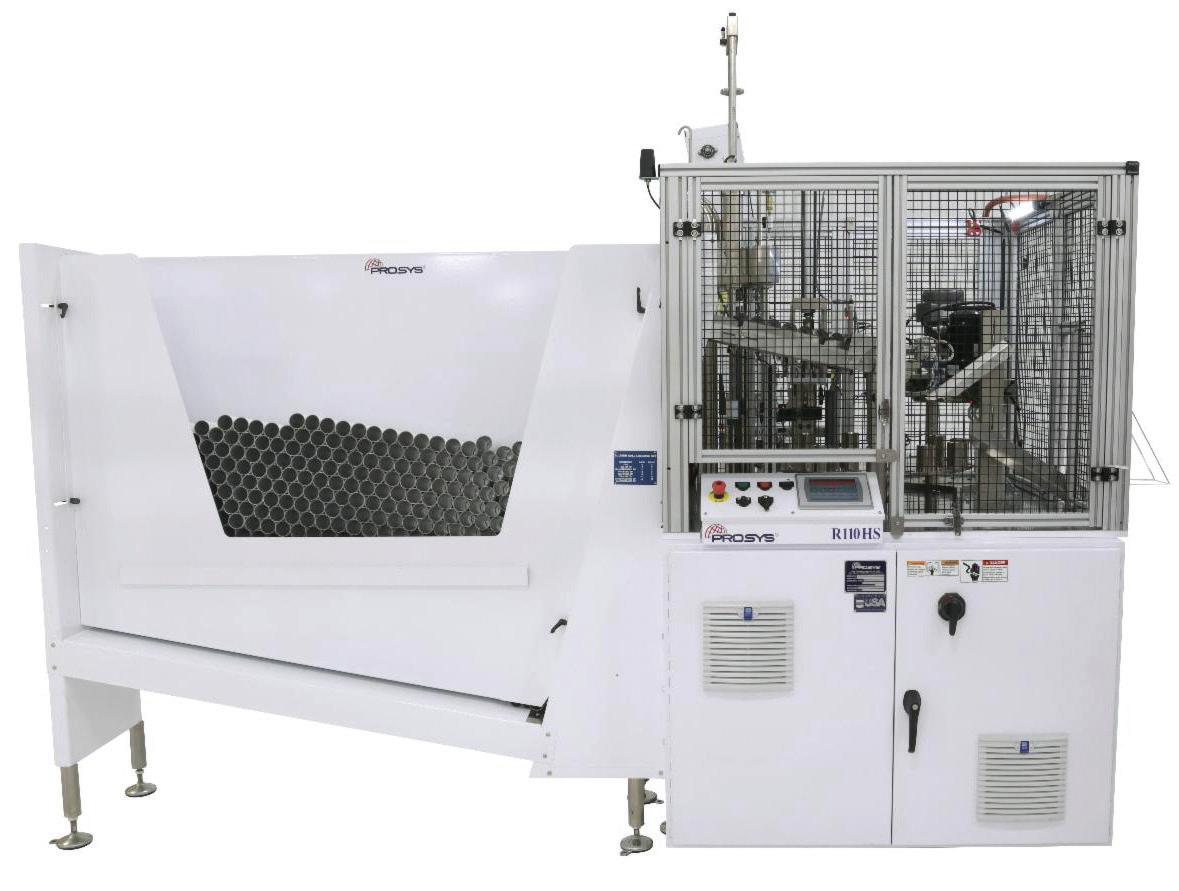
ProSys Fill’s R110 HS Cartridge Filler is an automated single-head system designed for precise lling of viscous materials, like adhesives and sealants, into various cartridge types at speeds up to 40 units per minute.
ProSys Fill, LLC pwgo.to/8713
PAC Machinery’s
Barcode Blocking Bags are designed to help prevent barcode scanning errors that can occur when multiple items are packed in a standard polyethylene bag, streamlining e-commerce ful llment, particularly for Amazon sellers.
PAC Machinery pwgo.to/8706
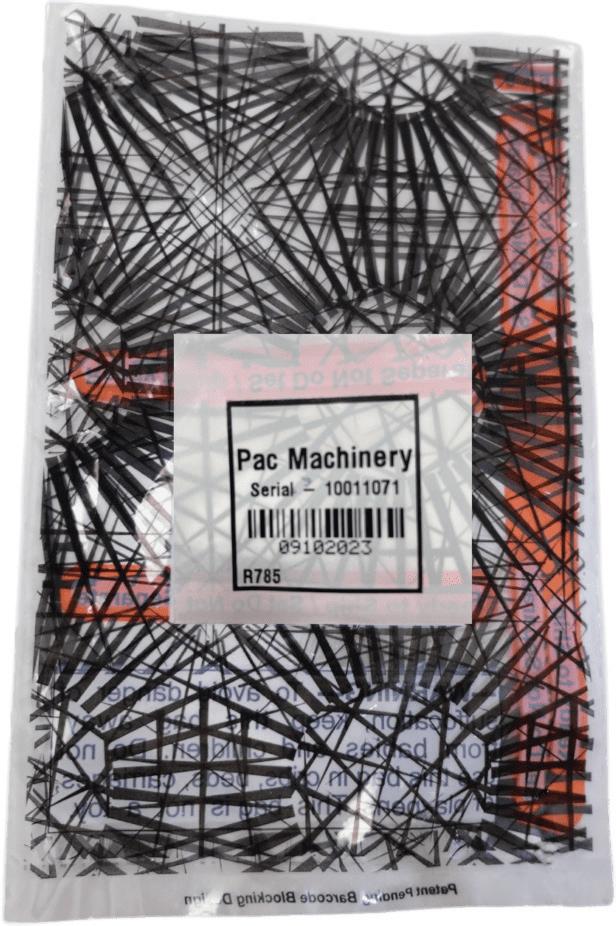
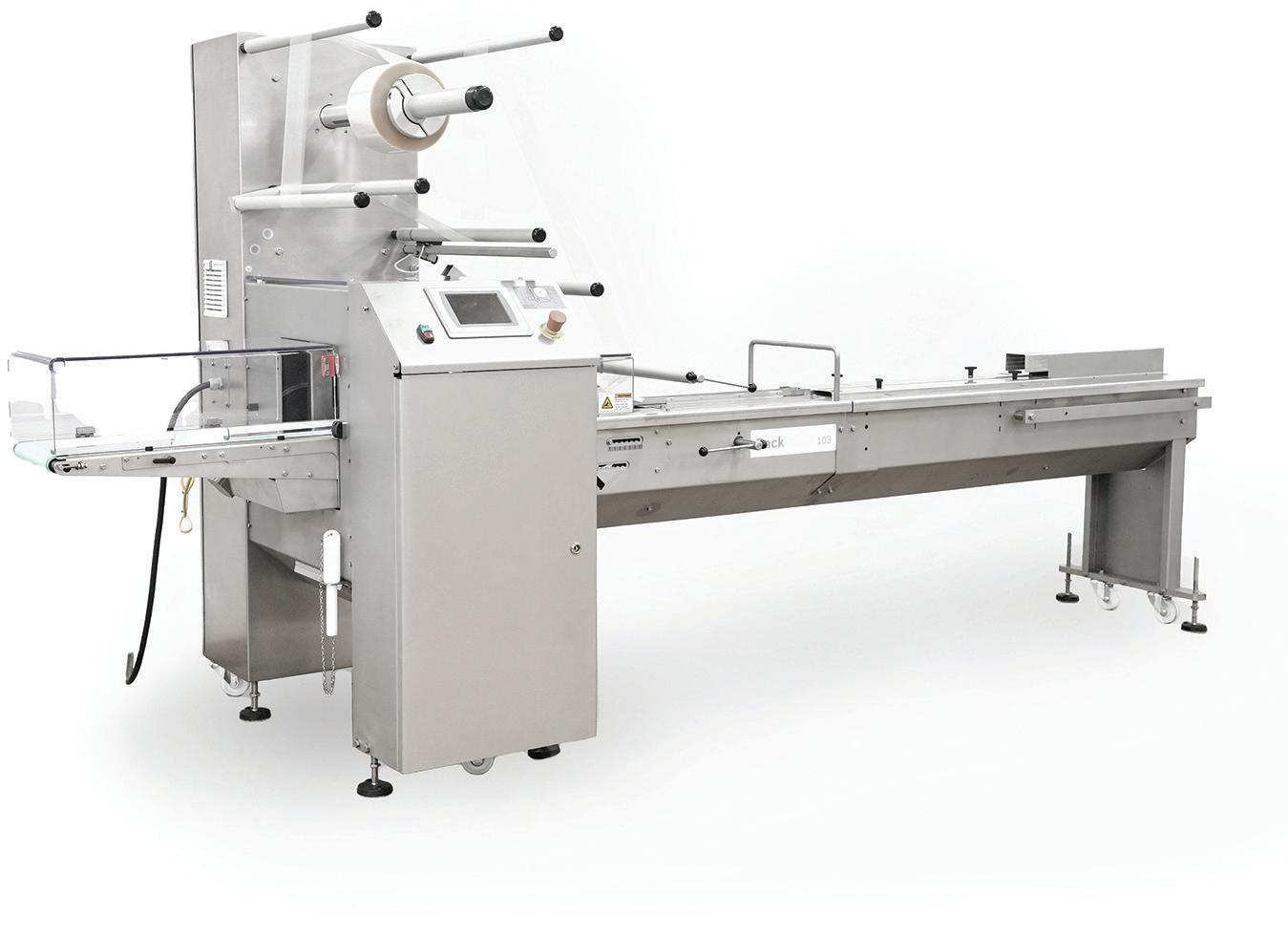
Syntegon’s Pack 103 is a user-friendly, entry-level ow wrapping machine with increased ef ciency and exibility for small- to medium-sized businesses taking their rst steps toward automating their packaging processes.
Syntegon pwgo.to/8707

Antalis’ Geami Wrap ’n Go is a compact and sustainable wrapping solution from Ranpak that expands die-cut kraft paper into a protective 3D honeycomb structure, usable alone or combined with tissue interleaf for a more luxurious nish.
Antalis Ranpak pwgo.to/8711
Selig Group’s PP-backed DELTASEAL is a two-piece sealing solution for dry and oily food containers that replaces the original board layer with PP foam to facilitate the recycling of PP caps in suitable recycling streams.
Selig Group pwgo.to/8710



Robotiq’s PowerPick Multi, a versatile gripper with a multi-cup array and dual-zone picking, is designed to simplify palletizing automation by eliminating changeovers and manual handling errors in exible production environments.
Robotiq pwgo.to/8715
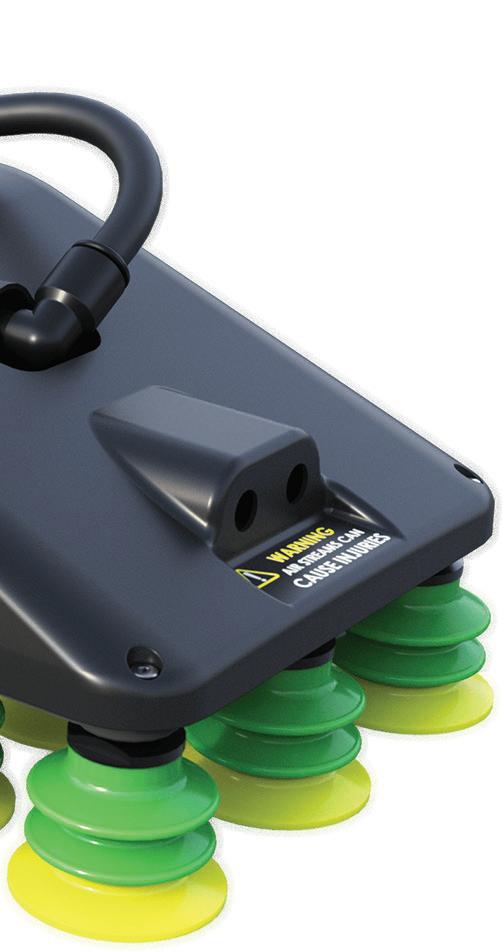

Dorner’s C3 Compact Curve Conveyor is a food-grade belted system for precise product handling through curves up to 180 deg, seamlessly integrating with existing industrial and sanitary conveyor lines for ef cient automation in con ned spaces.
Dorner pwgo.to/8714
Continue your search for the right packaging solution. Visit prosource.org
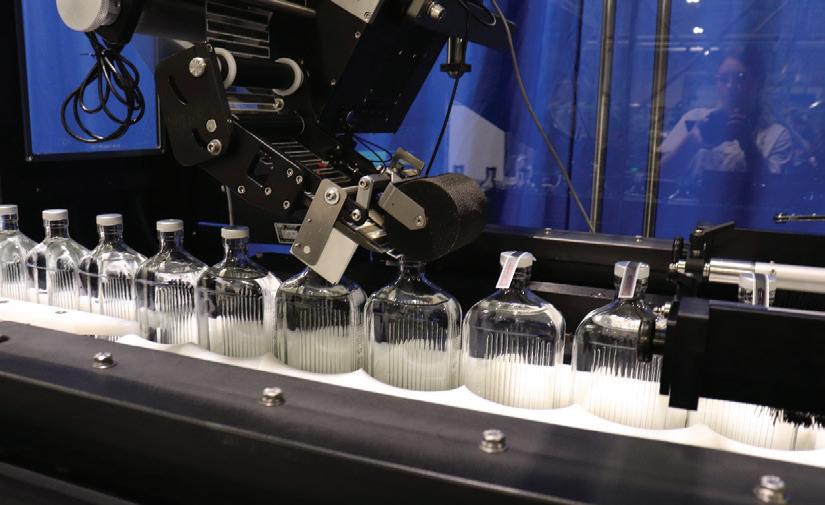
Morrison Container Handling Solutions, in conjunction with Packaging and Engineered Solutions, introduces the Strip Label Applicator Machine, designed to precisely apply strip labels onto liquor bottles and other rigid containers, improving aesthetics and production rates.
Morrison Container Handling Solutions
Packaging and Engineered Solutions pwgo.to/8703

Formost Fuji’s budget-friendly FW3400 CXIIs Flow Wrapper features stainless-steel covers, a 98-in. standard infeed conveyor with a ighted chain, a product-overheight detector, and a packless feature that ensure no product, no package.
Formost Fuji pwgo.to/8704
TricorBraun Flex’s PolyRecycle drop-off recyclable bag, speci cally designed for packaging fresh coffee, features a one-way degassing valve that allows the release of excess gases while maintaining the integrity of the packaging.
TricorBraun Flex pwgo.to/8709


Universal Robots’ fastest cobot, the UR15, is designed for high-speed applications, like pick and place, and features a 15 kg payload and 5 m/s TCP speed enhanced by OptiMove motion control and AI-ready PolyScope X software.
Universal Robots pwgo.to/8712

Stora Enso’s Performa Nova is made using FiberLight Tec technology to create a strong yet lightweight board for higher material efficiency, allowing more packages to be produced with less raw material without sacrificing strength or appearance.
Stora Enso pwgo.to/8716
AstroNova unveils the A4-wide QL-425 and A3-wide QL-435 for light production, plus the VP-800 direct-to-package printer for sustainable materials in the light-to-medium production segment, to enhance speed, flexibility, and cost-efficiency.
AstroNova, Inc. pwgo.to/8708

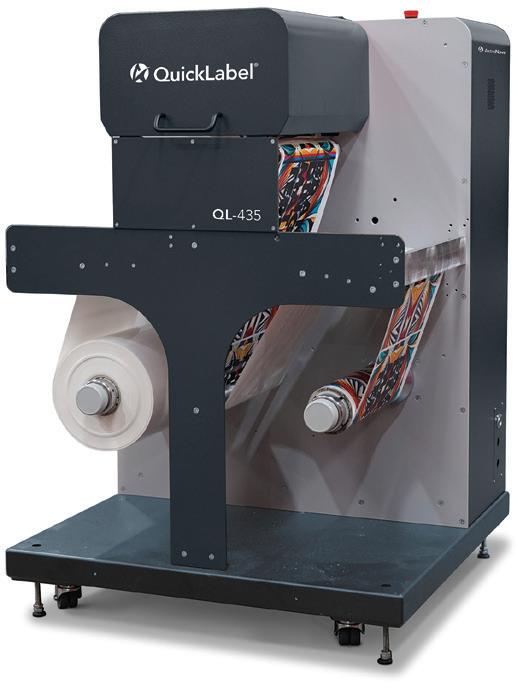
Canapa by Paxiom’s JuanaPack is an automated system designed to streamline cannabis pre-roll packaging by offering both highspeed tube loading and tray packing capabilities with customizable workflow integration and gentle handling.
Canapa by Paxiom pwgo.to/8705



ORDER B M FOR SAME DA HIPPING













































asdj asd sddddd as sddd sddd d

asdj asd sddddd as sddd sddd d


asdj asd sddddd as sddd sddd d



asdj asd sddddd as sddd sddd d

asdj asd sddddd as sddd sddd d

asdj asd sddddd as sddd sddd d























ProMach acquires KelCode Solutions to expand its marking, coding, and labeling capabilities.
Amcor completes an all-stock combination with Berry Global to expand product development and sustainability efforts in consumer and healthcare packaging.
Massman Companies acquires ADCO to boost its carton-to-pallet automation solutions.
NCC Automated Systems joins the Paxiom Group under the ATS umbrella.
Packsize acquires Sparck Technologies, a European manufacturer of automated fit-to-size packaging solutions.
Norwegian-based Elopak opens its first U.S. production facility at the Port of Little Rock in Arkansas.
SupplyOne Inc. acquires The BoxMaker, which specializes in digitally printed custom packaging.
The National Science Foundation (NSF) sponsors the first Packaging Industry/University Research Center (IUCRC), the Center for Plastics, Paper, and Hybrid Packaging End-of-Life Solutions (C3PS).
Duravant acquires Pattyn Group to expand its B2B packaging automation solutions.
The Flexible Film Recycling Alliance (FFRA) launches a Plastic Film Recycling Directory to improve consumer access to recycling collection points and increase plastic film recycling rates.
TOPPAN Holdings Inc. acquires Sonoco Products Company’s Thermoformed & Flexibles
Packaging (TFP) business.
Newly formed ValorFlex Packaging acquires Jet Packaging Group to expand its lamination and flexographic printing offerings.
Alliance Machine Systems International acquires Systec Conveyors and Automatan, LLC.
JLS Automation celebrates 70 years in industrial automation.
The AMERIPEN Board of Directors appoints Lynn Dyer as its executive director.
Pacteon Group appoints Greg Masingill as chief executive officer.
Selig Group’s Adam Sheridan will assume the role of chief executive officer in addition to his current role as president, succeeding Steve Cassidy, who retires after 22 years as CEO.
BluePrint Automation names Bill Browne vice president of sales and marketing and hires Nick Szczechowski as north central regional sales manager (IL, IA, MN, NE, ND, SD, WI).
Spee-Dee Packaging Machinery promotes Terri Fountain and Bobby Tracy to regional sales managers.
Specright appoints Mike Boese its CEO as founder Matthew Wright transitions to executive chairman.
Davide Varzè is appointed president of WECO and Multiscan Technologies, both members of Duravant’s Food Sorting and Handling group.
The Paperboard Packaging Council (PPC) appoints Tom Hendrickson as its industry affairs manager.
Pharmaworks, a ProMach product brand, appoints Jim Hahn to director of sales.
Krones promotes Adam Gores to managing director and vice president of sales, Canada.
ABB appoints Susana Gonzalez as chief sales officer, Machine Automation Division for B&R.
Fernando Callejon joins Beckhoff USA as product marketing leader.
The Carton Council of North America appoints Jordan Fengel as executive director.
James Leslie Neal, former president and CEO of A-B-C Packaging Machine Corporation, a company founded by his father, passes away at the age of 101.

By Dawn Burcham, CPPL
When people hear the word “tariffs” they usually think of them as either the good, the bad, or the ugly. How do packaging professionals react to tariffs? The short answer is the packaging industry has dealt with tariffs— along with trade embargos, NAFTA, strikes, inclement weather, and labor shortages. These events require that packaging professionals must be prepared for any challenge. Over many years, packaging professionals have successfully risen to the challenges associated with tariffs and other matters. Our industry’s history says we can do it again.
When the U.S. was founded, George Washington’s second official act was to enact a 5% tariff on all items coming into the country, mostly to raise revenue for our fledging nation. Multiple presidents would follow by enacting tariffs to add to revenue, protect American businesses, or punish other countries. Throughout the 20th century, U.S. presidents enacted embargoes ranging from the Soviet Grain embargo to the total trade China embargo from 1950-1972 to the U.S. steel and aluminum trade embargoes of the 1970s and 1980s against Japan.
departments within companies and between manufacturing, shipping, and retail/commercial markets. Packaging professionals must traverse inclement weather and work around labor shortages. These two situations have dramatically affected trading, production, and shipments. We now face another situation requiring these same skills.
Packaging professionals are historically masters of change and chaos. Their worlds revolve around change, and tariffs are just a type of change they deftly navigate.
American farmers and businesses received money from their banks and investors to hire more laborers during the Soviet grain embargo. When NAFTA was ratified in 1993, American manufacturers had to figure out ways to reduce pricing, just as they are now. Packaging companies reduced labor initially and over time, they developed unique designs, reduced packaging footprints, aided customers in inventory management, and helped with labor issues. The packaging industry’s willingness to step in and deflect some of the job losses was monumental.
Our industry aided existing manufacturing floors by developing creative and unique packaging designs that reduced material and labor costs. A prime development was RFID tags. Inventory could be tracked easily to reduce product loss. We also worked with shipping companies to reduce damage and improve cube utilization at the pallet, truck, rail, and ocean container levels. New packaging software was developed to aid multiple entities, from computer-aided design (CAD) to cube utilization software packages. These industries continue to help companies find improvements.
In past columns I have described how packaging has taught me patience, preparedness, and persistence, with the focus on preparedness. In many scenarios, packaging is the conduit between
How does one prepare for change? It depends on your specific role, whether you are a buyer in a company, a designer in a packaging firm, or the president of a packaging company. As a purchasing/ sourcing agent, you should have multiple suppliers for the same substrate. An example is having 85% of your business with a preferred supplier and the other 15% with at least one other supplier. This is useful in case of inclement weather, strikes, tariffs, and/or a labor shortage. Inclement weather and labor shortages have been more devastating to packaging companies than the current tariffs. Labor shortages will continue to be an issue for the balance of this year for many manufacturers. If you are a packaging manufacturer, the same logic applies for procuring raw materials and having a reliable labor force. If you buy your materials internationally, add a domestic source. If you supply your labor internally, develop a relationship with a labor company for overflow projects or emergencies. If you use only outside labor sources, arrange multiple sources. If you use one shipping firm, secure at least one more. If you are the president of company, create an alliance with competitors.
At times, companies are devastated by a flood or fire—and then a competitor offers to assist with recovery, orders, or shipments. Many larger packaging companies purchase from each other today, whether it be lumber, resins, paper, or tooling. To maintain U.S. dominance, the markets need these continued partnerships. Packaging companies can do their part to reduce the impact of tariffs by maintaining their customer costs or offering additional services (contract packaging or inventory management).
Packaging professionals are historically masters of change and chaos. Our world revolves around change, and tariffs are just a type of change they deftly navigate. We must be ready for anything. Packaging professionals play vital roles in our economy. We are the agents of change, protection, support, and perseverance. We can succeed once again. PW













Engineered for reliability and longevity, VDG Drum Motors are designed for 80,000 hours of continuous operation before maintenance, reducing operational and maintenance costs and increasing throughput.




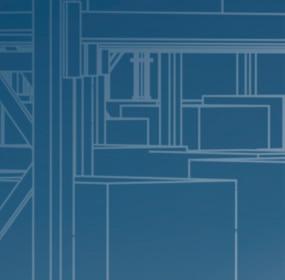


With all drive components enclosed and protected inside the drive drum, VDG Drum Motors provide a safe, efficient, and space-optimized conveyor belt drive solution for material handling applications while minimizing downtime.




No Routine Maintenance
Lower Cost of Ownership



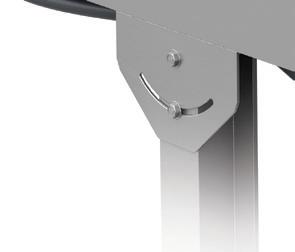



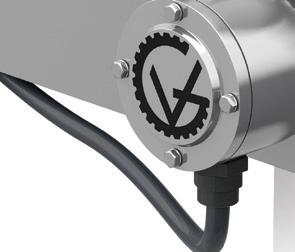






Premium-Efficiency Electric Motor
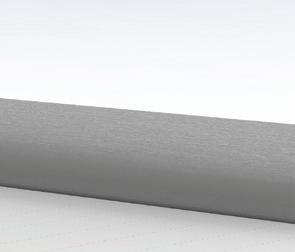



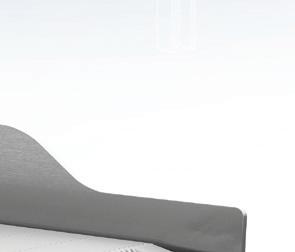
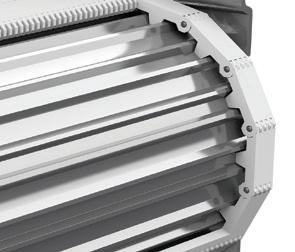


















For sanitary processing, the SSV Series Drum Motors are manufactured in 316-stainless steel, feature an IP69K-rated sealing system, withstand pressure up to 3,000 psi, and drive modular, wire mesh, and monolithic thermoplastic conveyor belts without using sprockets.











Increase Conveyor Hygiene

Eliminate Drive Sprockets


Reduce Water Usage & Time for Washdown
